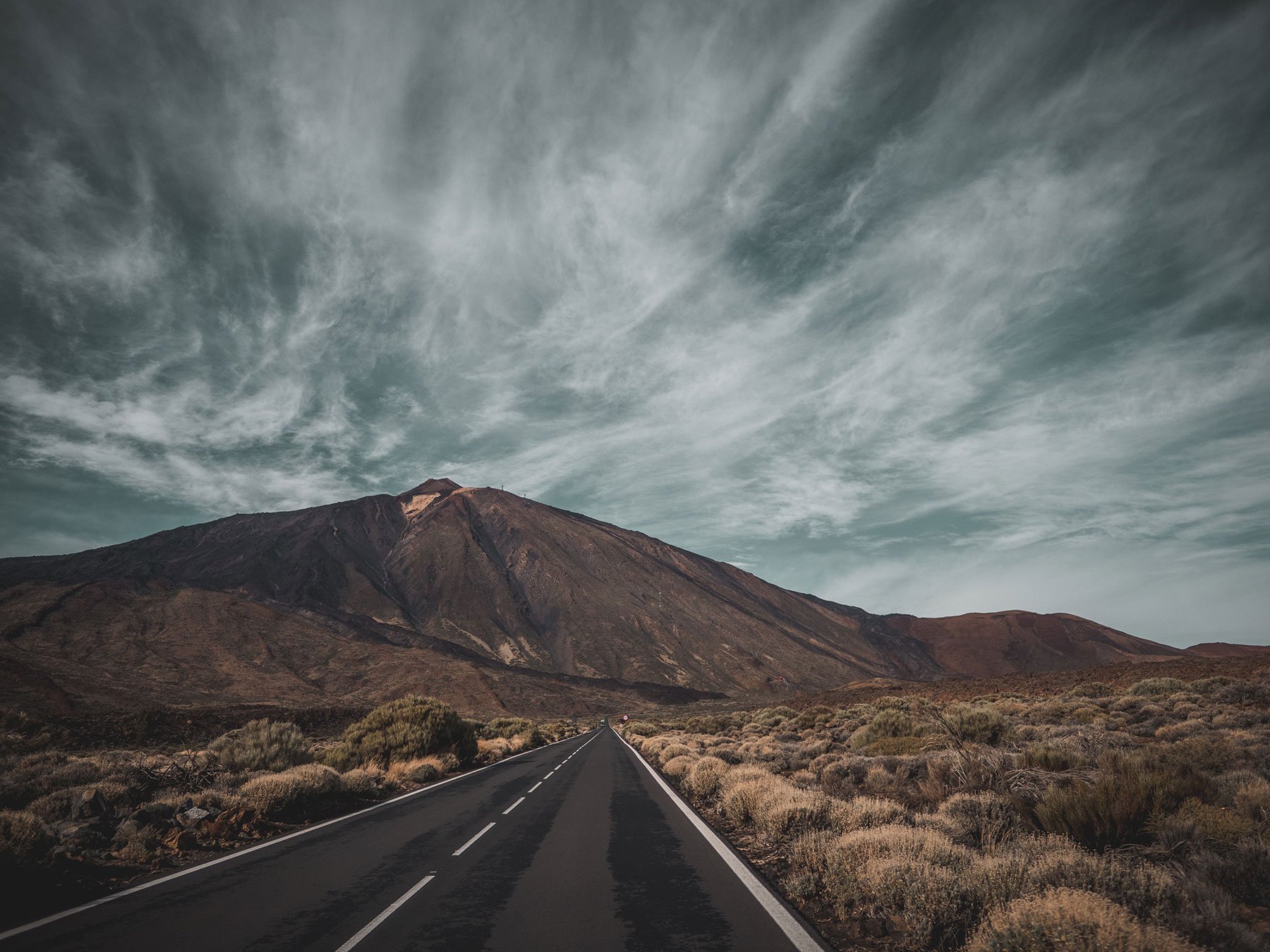
When I booked my flight to the volcanic island of Tenerife, there was one stand-out destination that I knew I needed to visit. It had dominated my bucket-list for years, ever since I saw it plastered over post-cards in tacky souvenir shops. The iconic landscape didn’t make it onto the reverse of Tenerife’s old currency, the 1000 paseta note, for no reason. It looked other-worldly. It was Teide National Park.
Named after the towering volcano that lives there, Teide National Park rules the heart of the island. With its summit at a whopping 3,718 metres above sea-level and 7,500 metres if measured from the ocean floor, Teide is the third tallest volcano in the world, only beaten by Hawaiian volcanos. The national park itself extends over an area of 18,900 hectares and is named as a UNESCO World Heritage Site. Teide is a stratovolcano that is in fact made up of two separate volcanos: Teide and Pico Viejo (which translates to ‘Old Peak’, even though this peak is in fact younger than Teide). They are active decade volcanoes which are very destructive.
However, viewing Teide herself was just part of the appeal. My excitement peaked when I thought about being in the presence of ‘The Rock’. ‘The Rock’ is my name for an iconic rock structure found in Teide National Park, part of a group of formations known as ‘Les Roques de Garcia’ (translates to ‘the rocks of Garcia’). Formally known as ‘Cinchado’, the ‘Rock is a very unusually shaped structure. Along with the other rocks of Garcia, Cinchado was part of an old crater wall that separates two parts of the caldera (crater). They have since been modified by erosion and are now one of the main tourist-attractions in Tenerife. They are made up of many, many layers of rock including breccia which sedimentary rock that consist of large angular fragments of rock combined with smaller rocks.
Now the day had finally arrived. I was going to venture into the great crater (known as Las Cañadas) in the centre of Tenerife, alongside my family, to view ‘The Rock’. The drive from our villa was going to take us north, climbing to an altitude of 2,000 metres (6,500 ft) above sea-level, before entering the great caldera. We were faced with an estimated journey time of just over an hour.
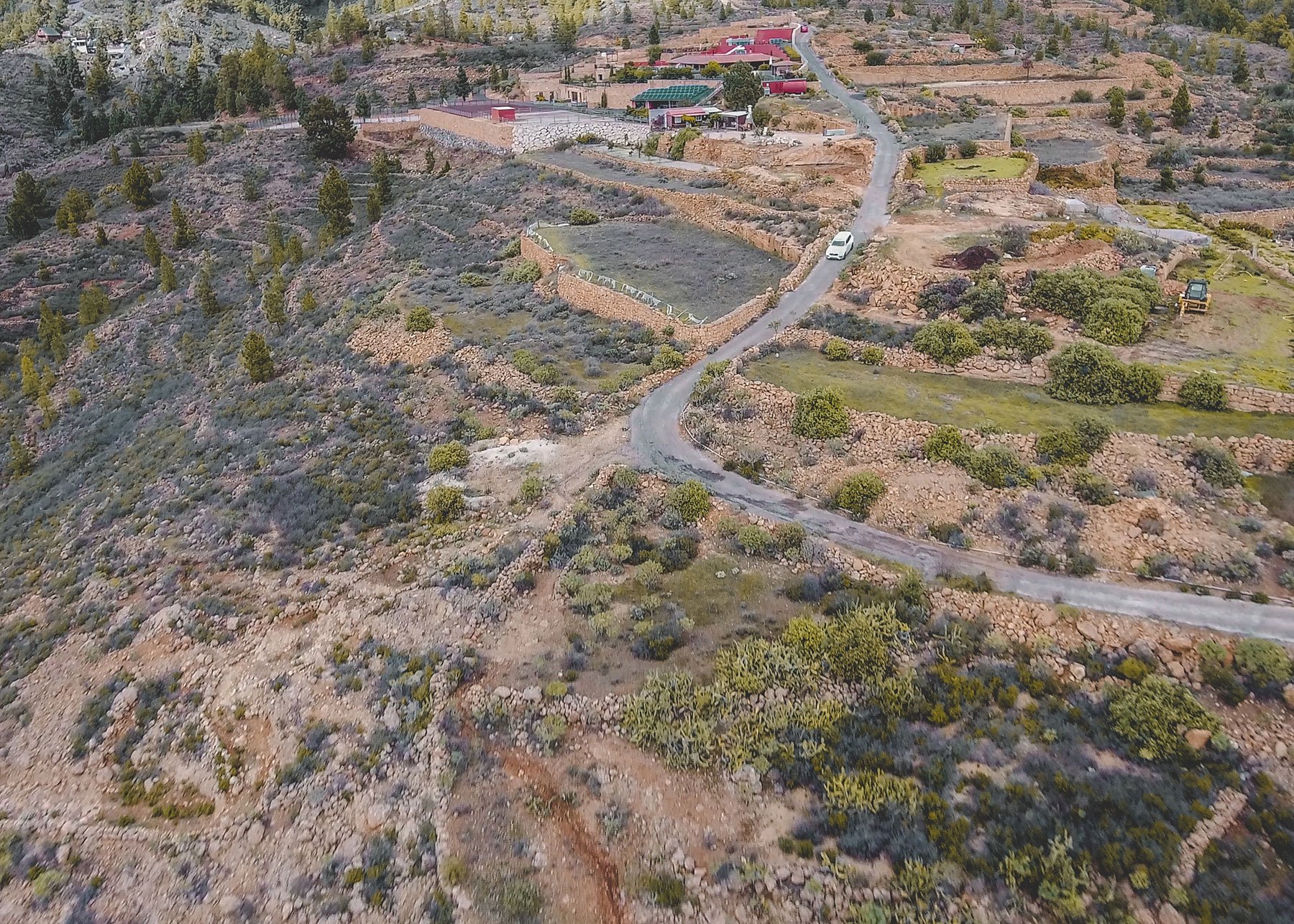
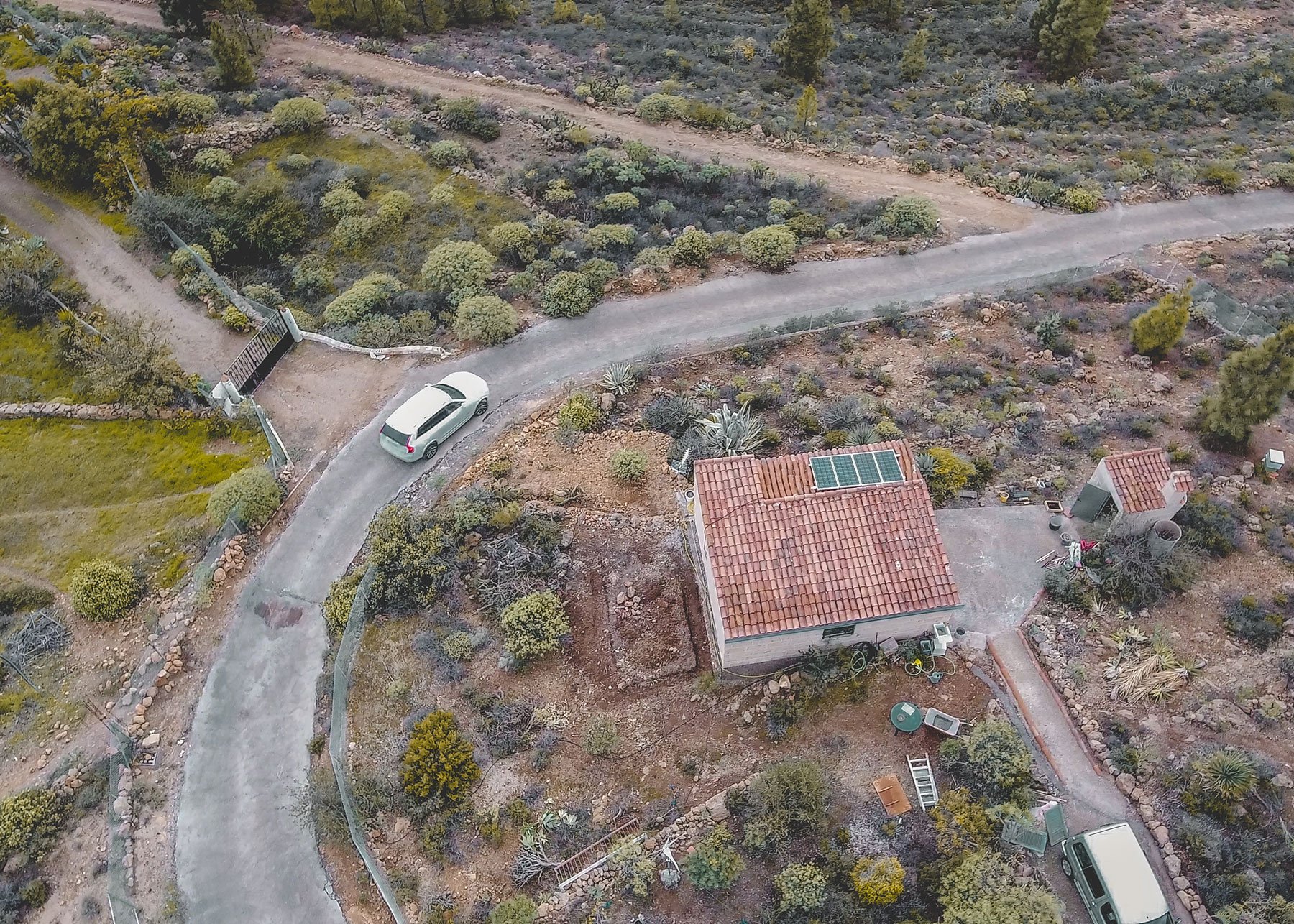
Our party was slit over two cars. We travelled in convoy with myself and Lewis in the lead car – the 7-seater Volvo. The rest of the group followed closely behind in the Alfra Romeo.
Out villa was situated a whopping 2,800 feet above sea-level, on the side of a mountain dressed in pine forests. We had to first decent sharply from our perch in order to locate the main route to Teide which started from the quaint town of Granadilla de Abona. From here it was a steady climb up into the heavens.
The landscape at this altitude was desert-like. Cacti stood proudly, dotting the crags that faced the road. Amongst them were thorny shrubs, growing out of grey, cracked earth. The terrain was a mixture of jagged hillocks and narrow valleys which were thick with spindly trees.
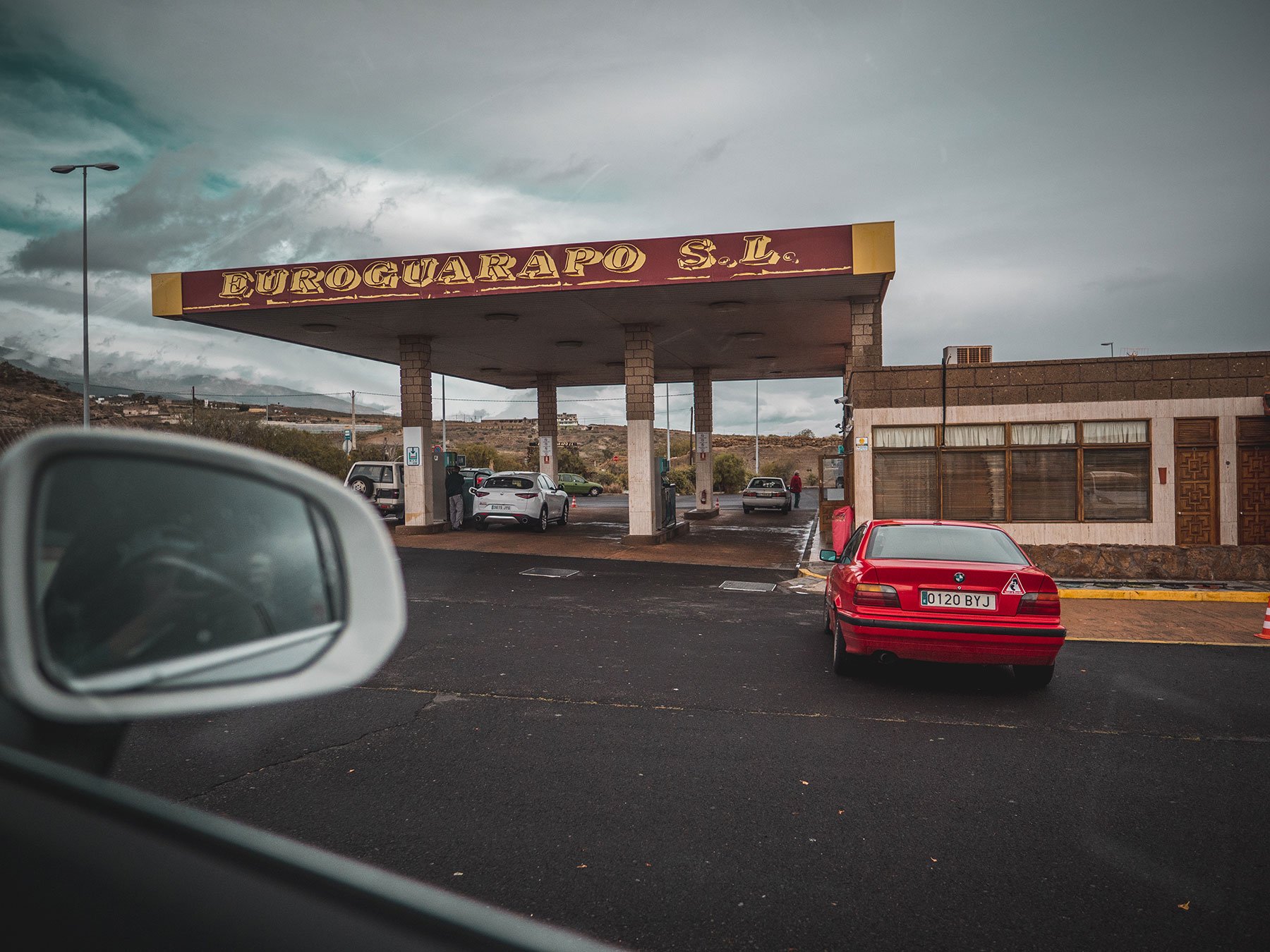
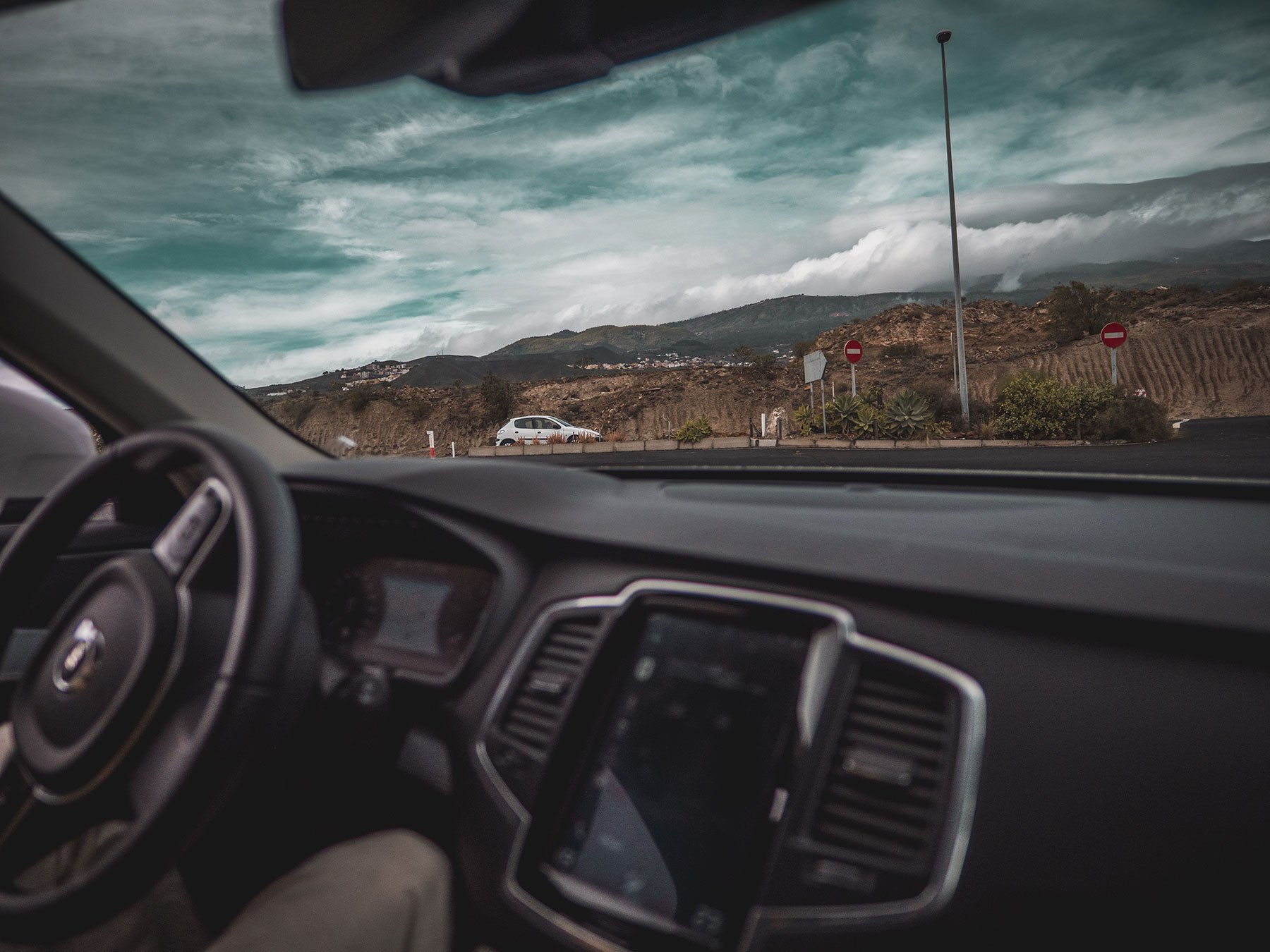
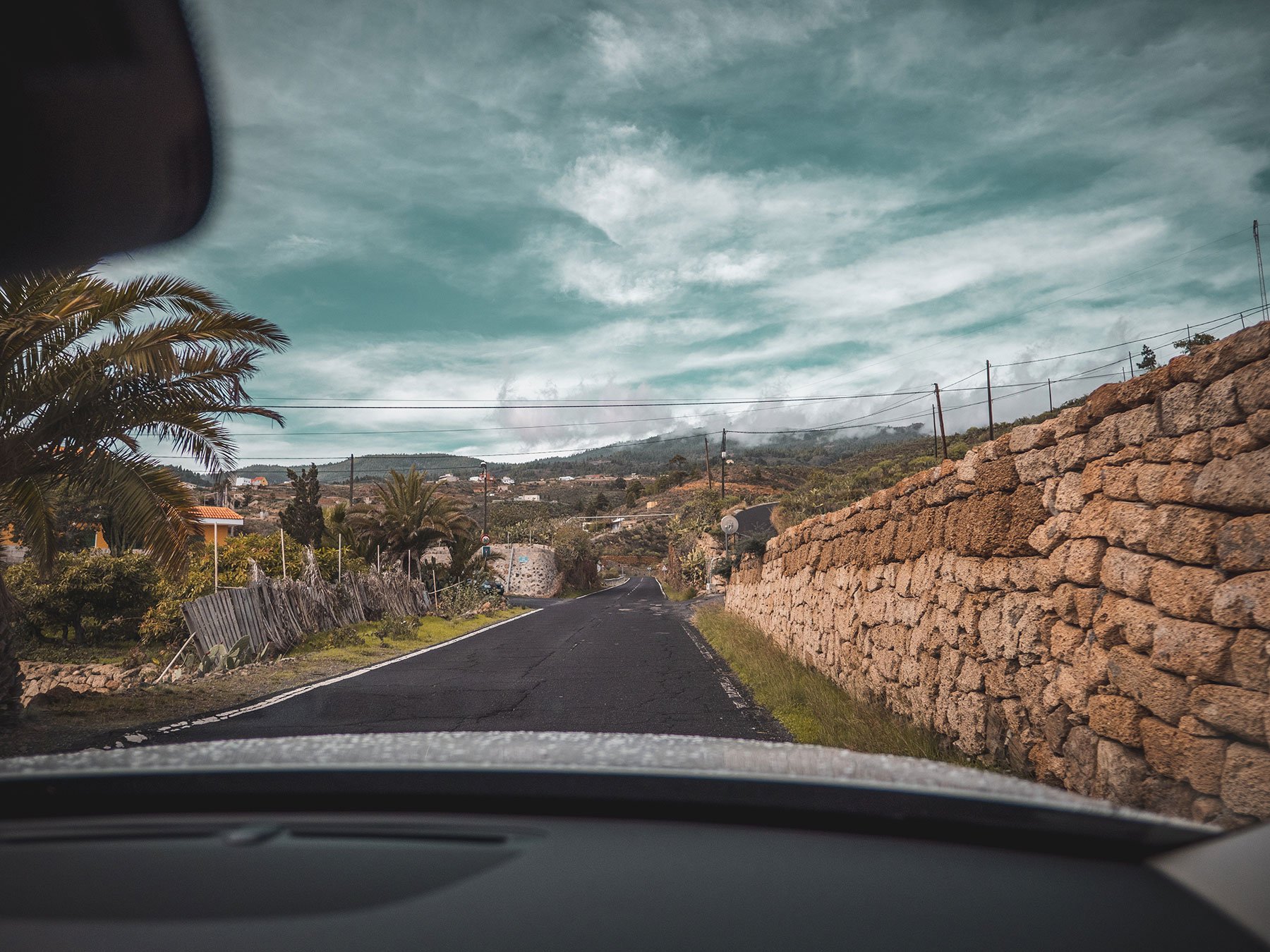
The road reminded me of the roads which we had encountered in Kefalonia. A path hugged the curve of the cliffs with a perilous drop to one side. The main difference was the terrain. The landscape felt more rugged here, coated in layers of solidified lava and volcanic ash from past eruptions.
The most recent eruption was in 1909, from the El Chinyero vent, in the north west of the island. A previous eruption1706 known as the Montañas Negras eruption destroyed many towns and villages in Tenerife.
Although it is not due to erupt anytime soon, being active, future eruptions cannot be ruled out. Based on the nature of Teide, it is estimated that an eruption would be violent, similar to that of Mount Vesuvius and Etna.
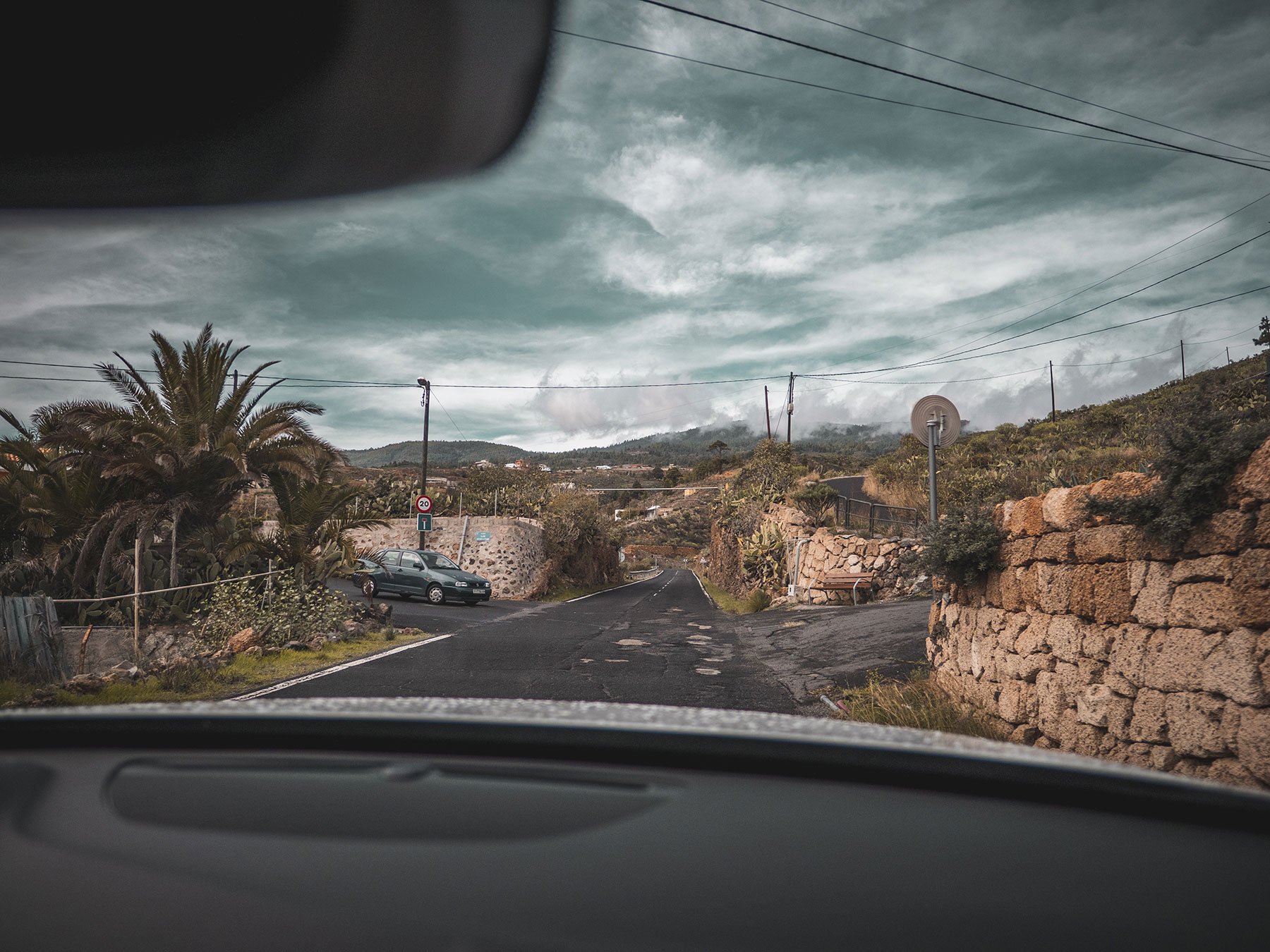
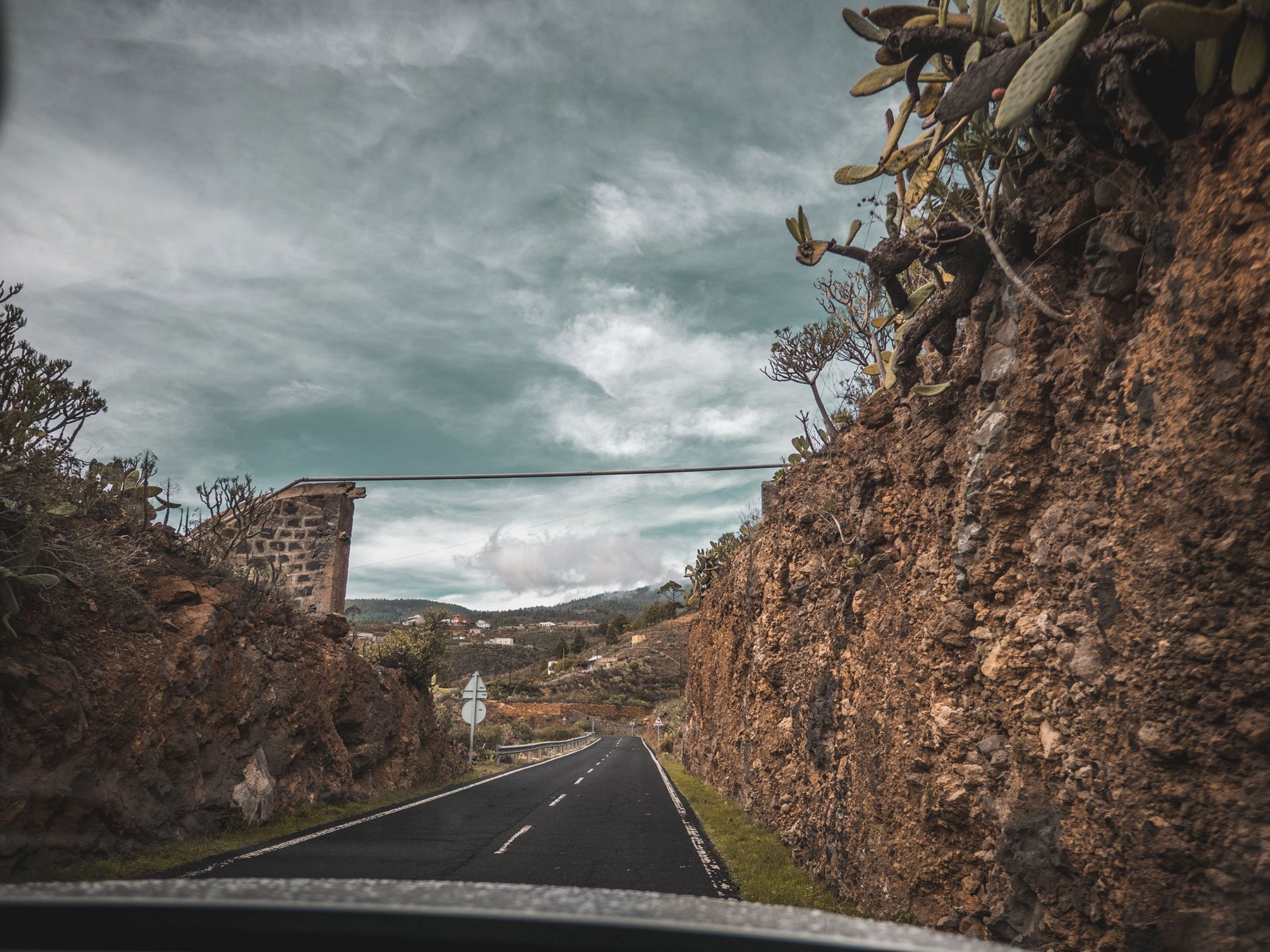
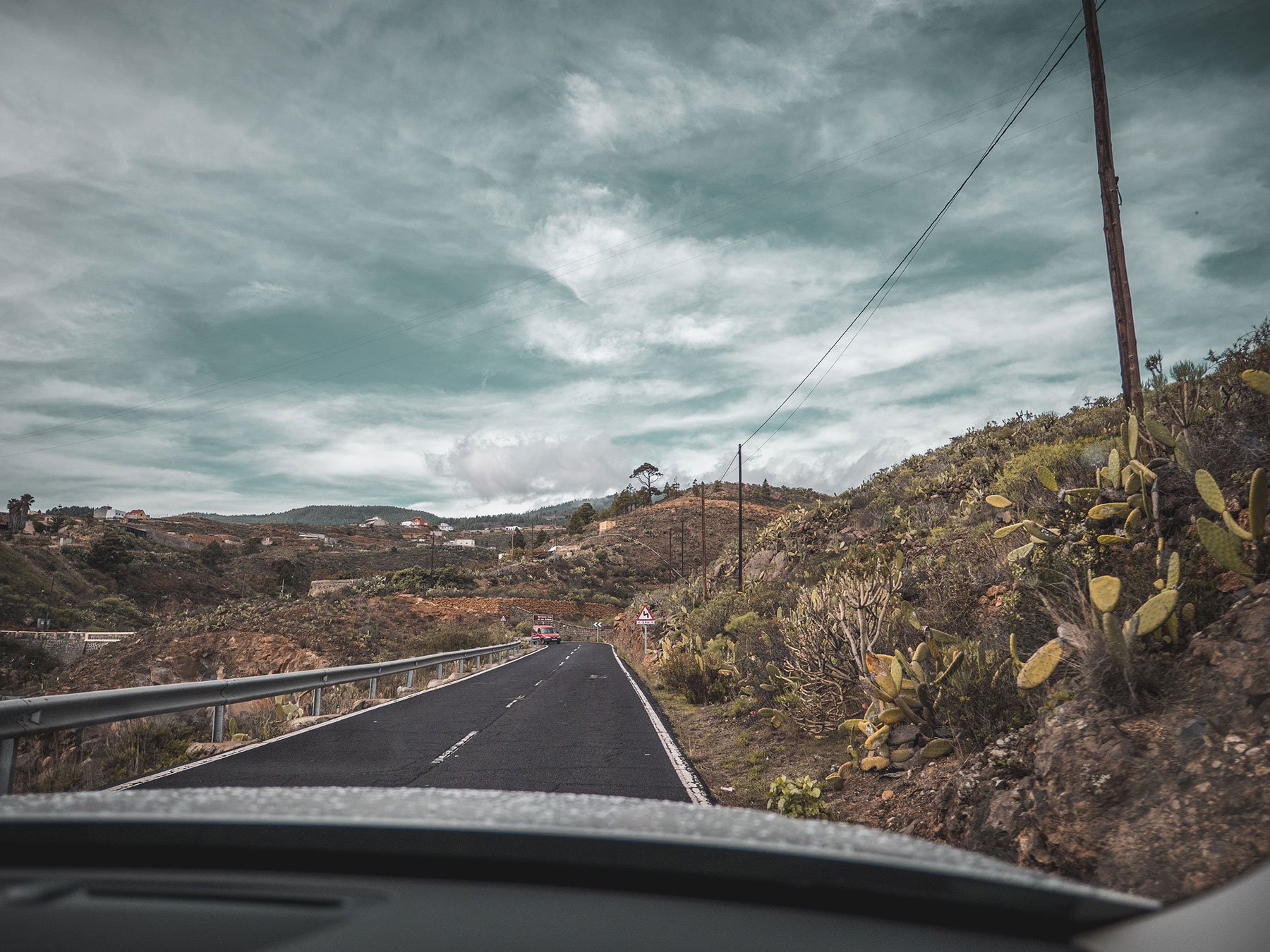
The properties of the fertile volcanic soil became apparent was we reached a village known as ‘Cruz De Tea’ which translates to ‘Tea Cross’, aptly named for its location at a crossroads.. Here we saw vineyards and allotments rich in produce. The area was far greener than southern Tenerife.
It was also here where the roads became more challenging. The bends became more frequent and were increasingly sharper until we were faced with a merciless stretch of hairpins, one closely after another.
We suddenly found ourselves surrounded by thick forests. Giant conifers with lush evergreen leaves stretched up towards the looming clouds. They were a staggering height; the Canary Island Pine can reach between 50 and 60 metres in height. Interestingly, this endemic species of pine is one of the most fire-resistant conifers in the world.
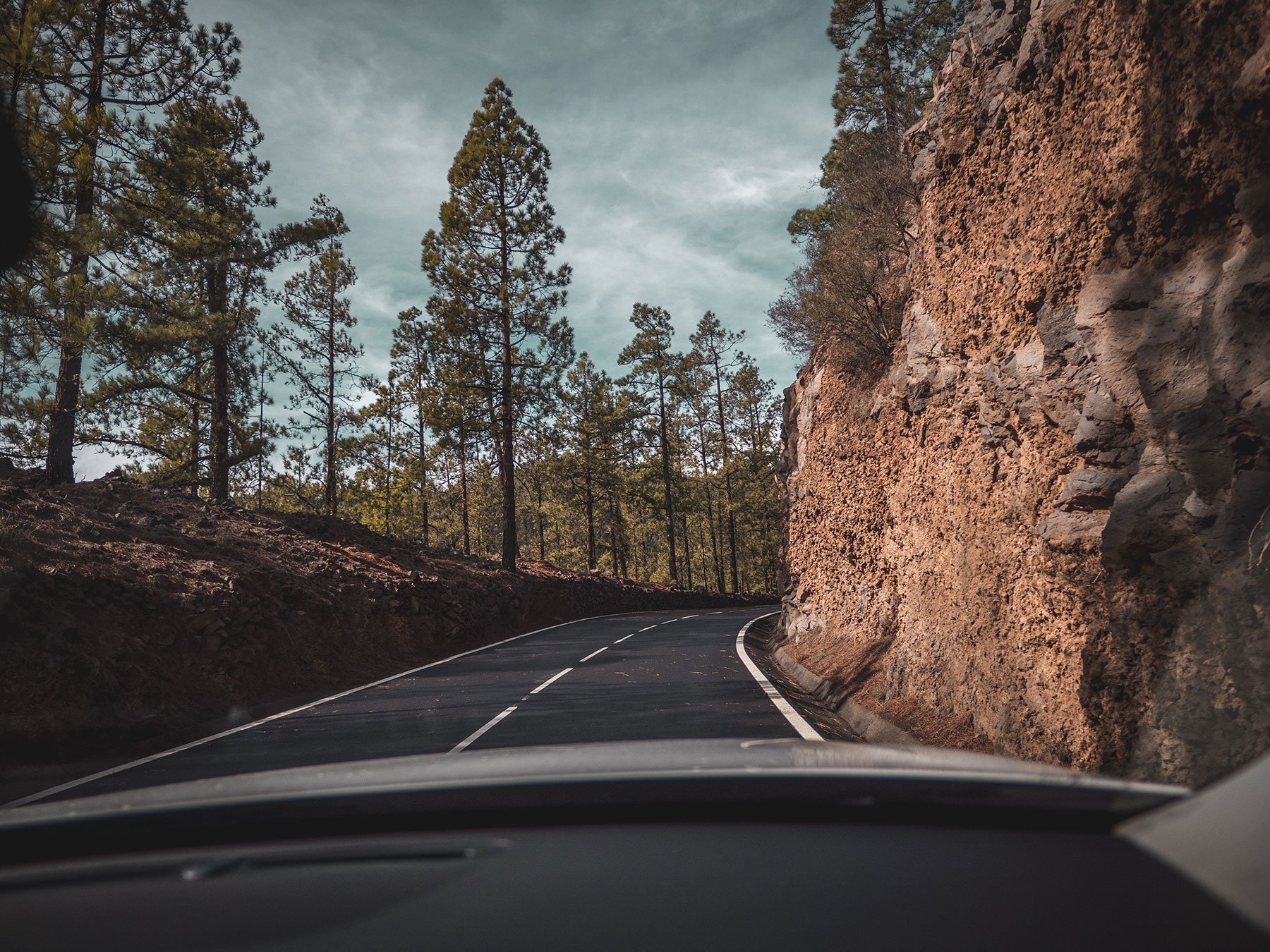

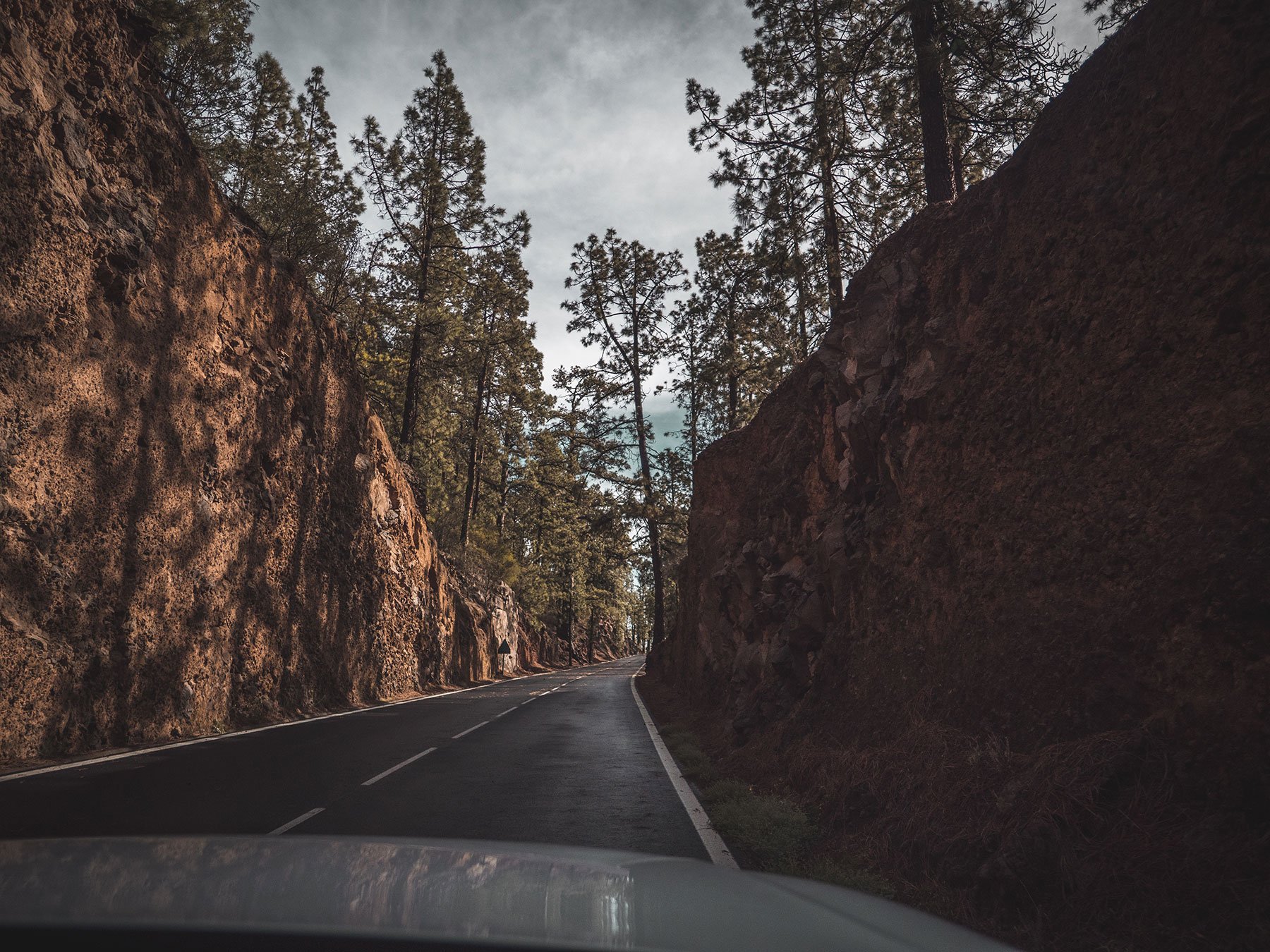
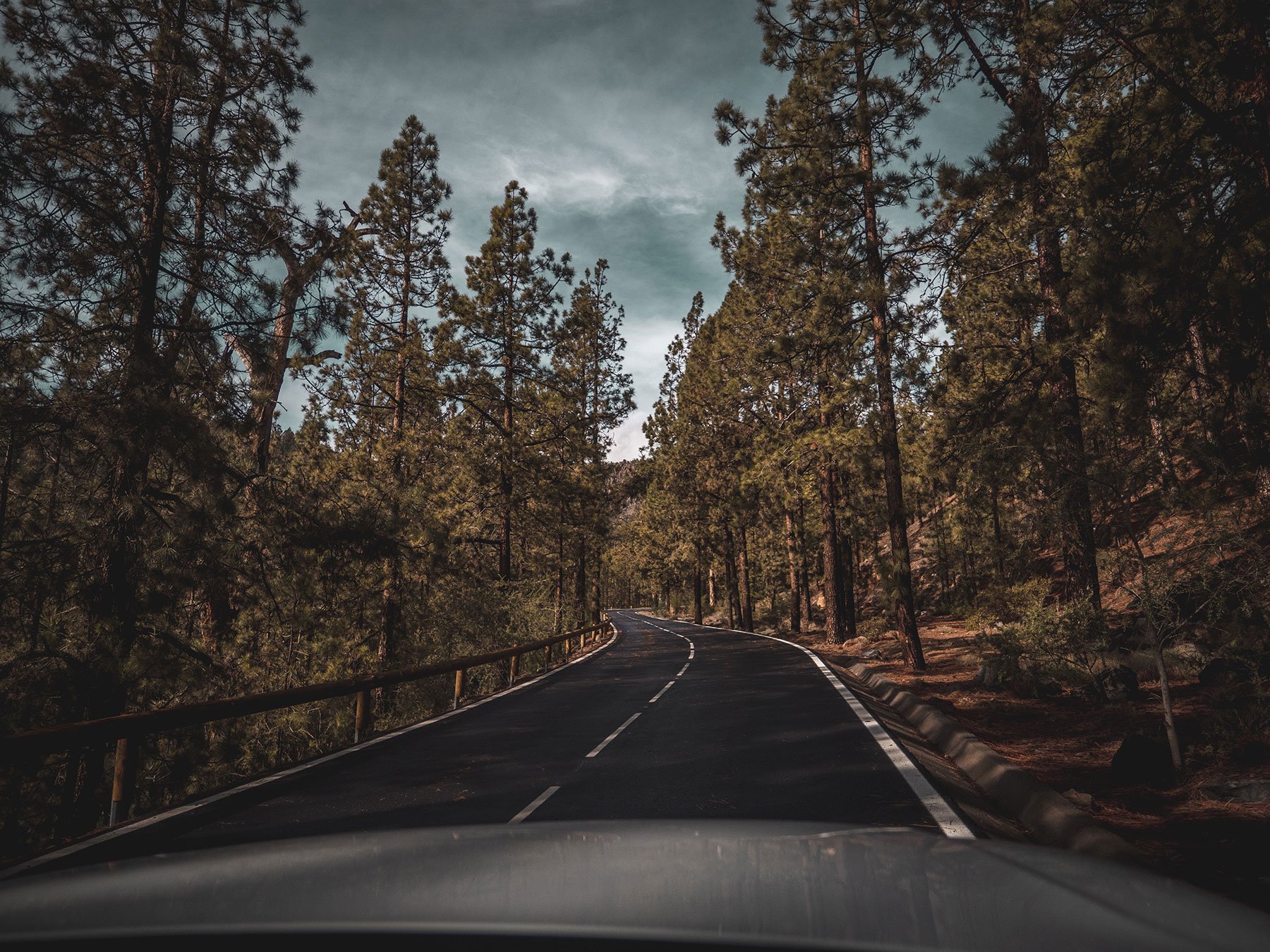

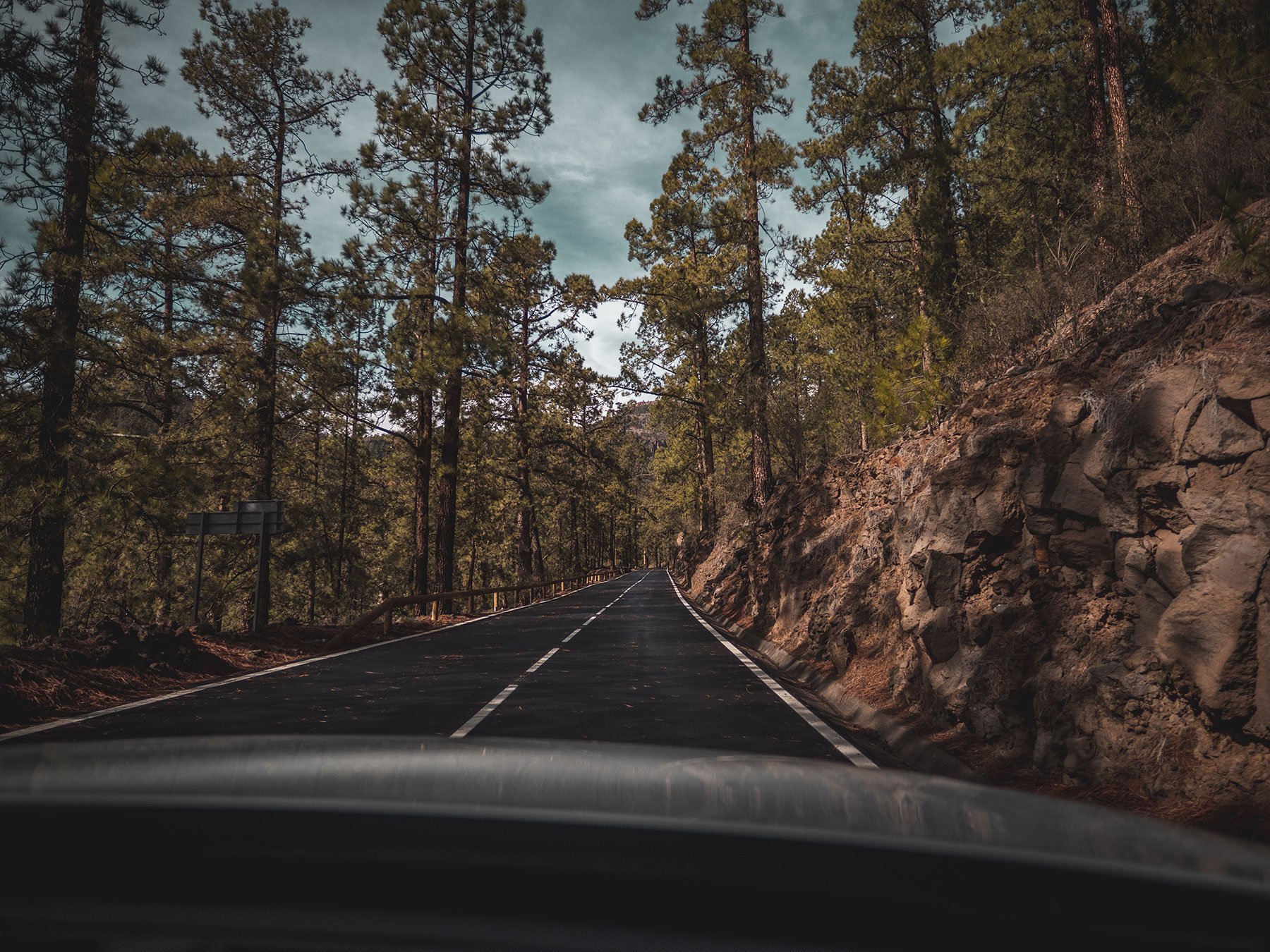
I was in awe of everything around me, from the sloping basins to the left of us that would open up every so often, dressed in tall evergreen conifers, to the rugged hillocks that would tower out of the mountainside, their faces carved with deep escarpments. The road continued to wind this way and that, throwing us a new surprise with each blind bend we took. Such natural beauty simply took my breath away.
This panorama threw everything I thought I knew about volcanoes out the window. I had expected a barren, lifeless world but was instead greeted with lush vegetation that was alive with wildlife. I suppose it made sense. The land round here would be incredibly fertile as a result of the volcanic activity.

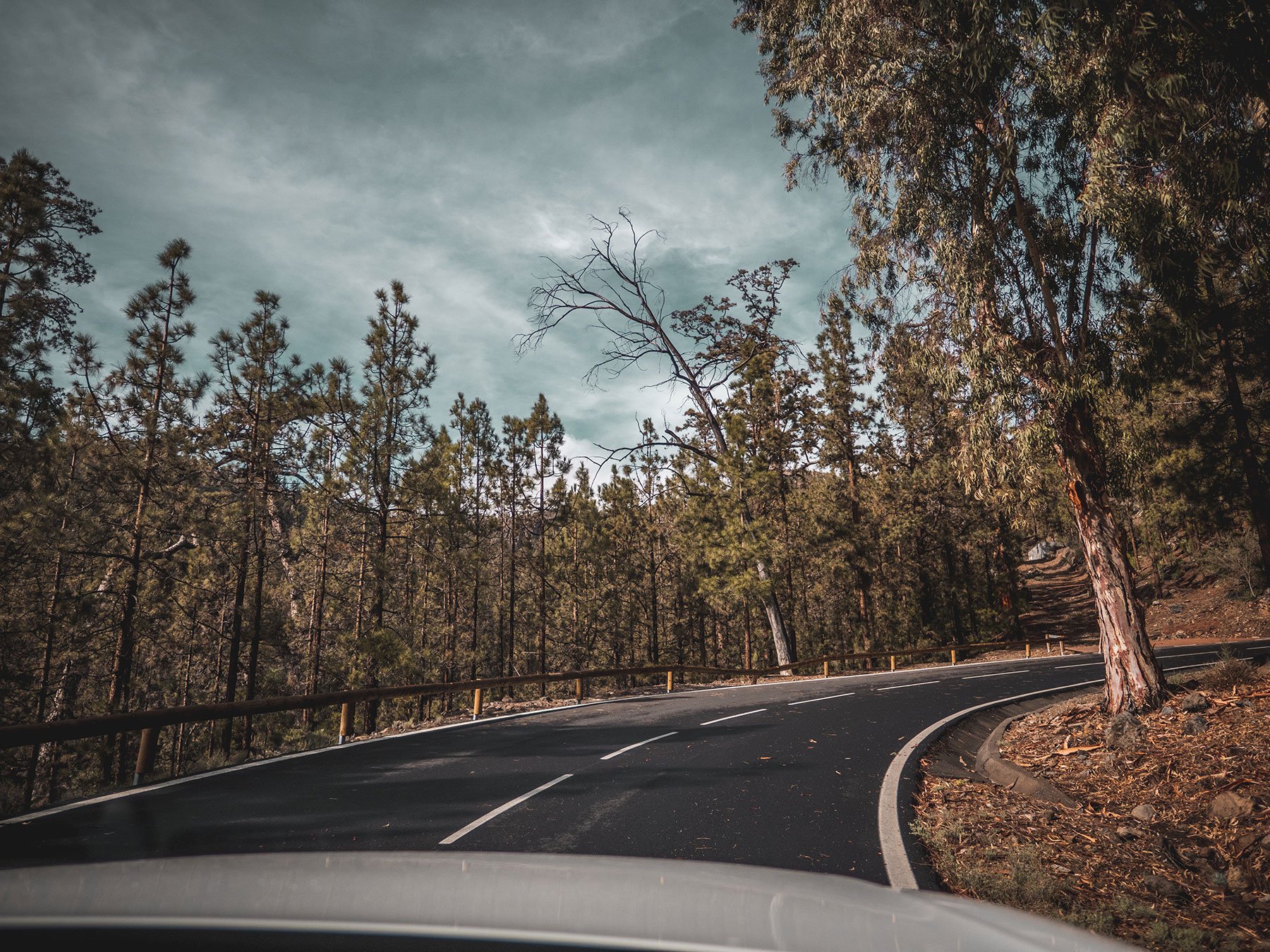
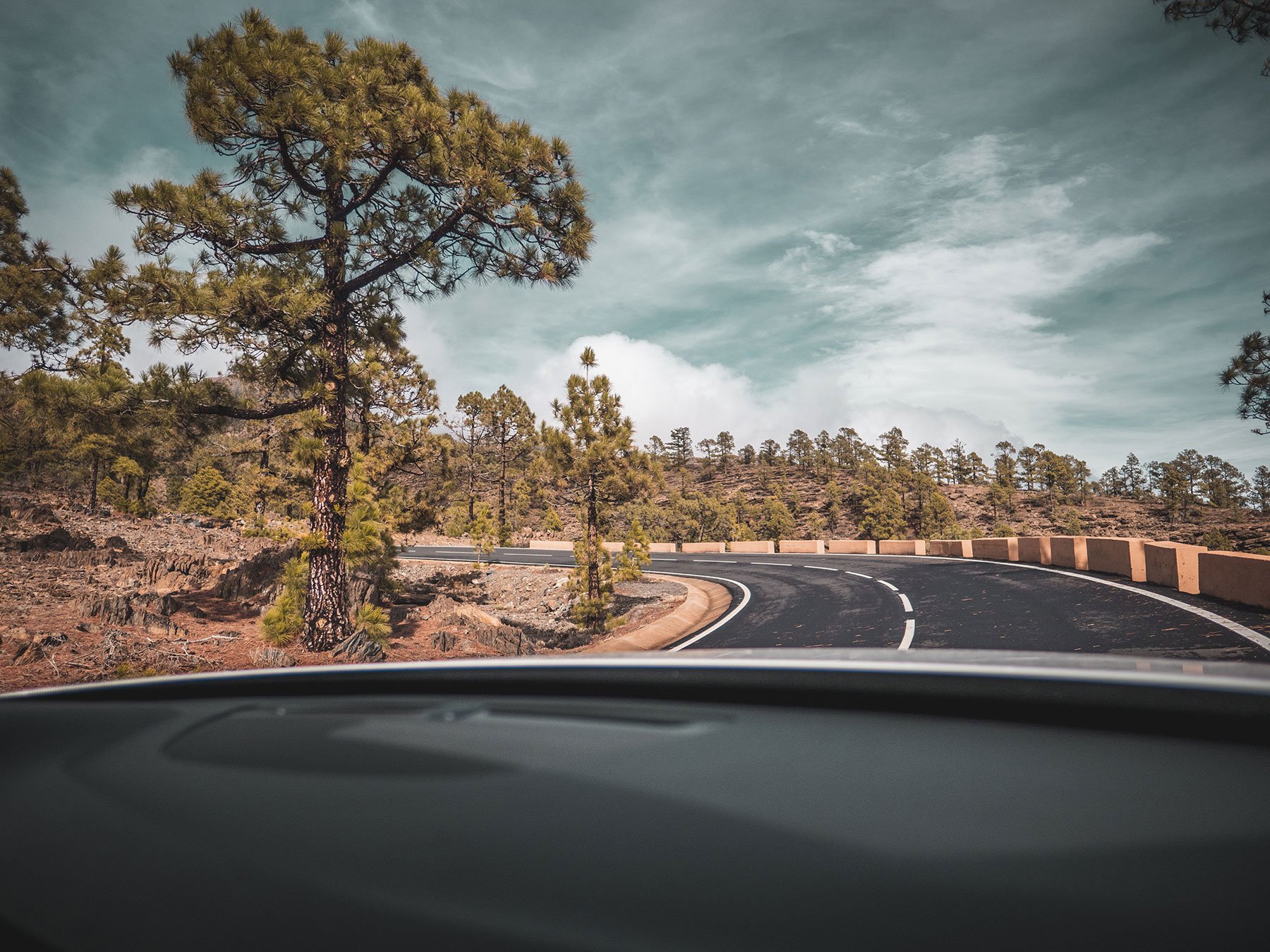
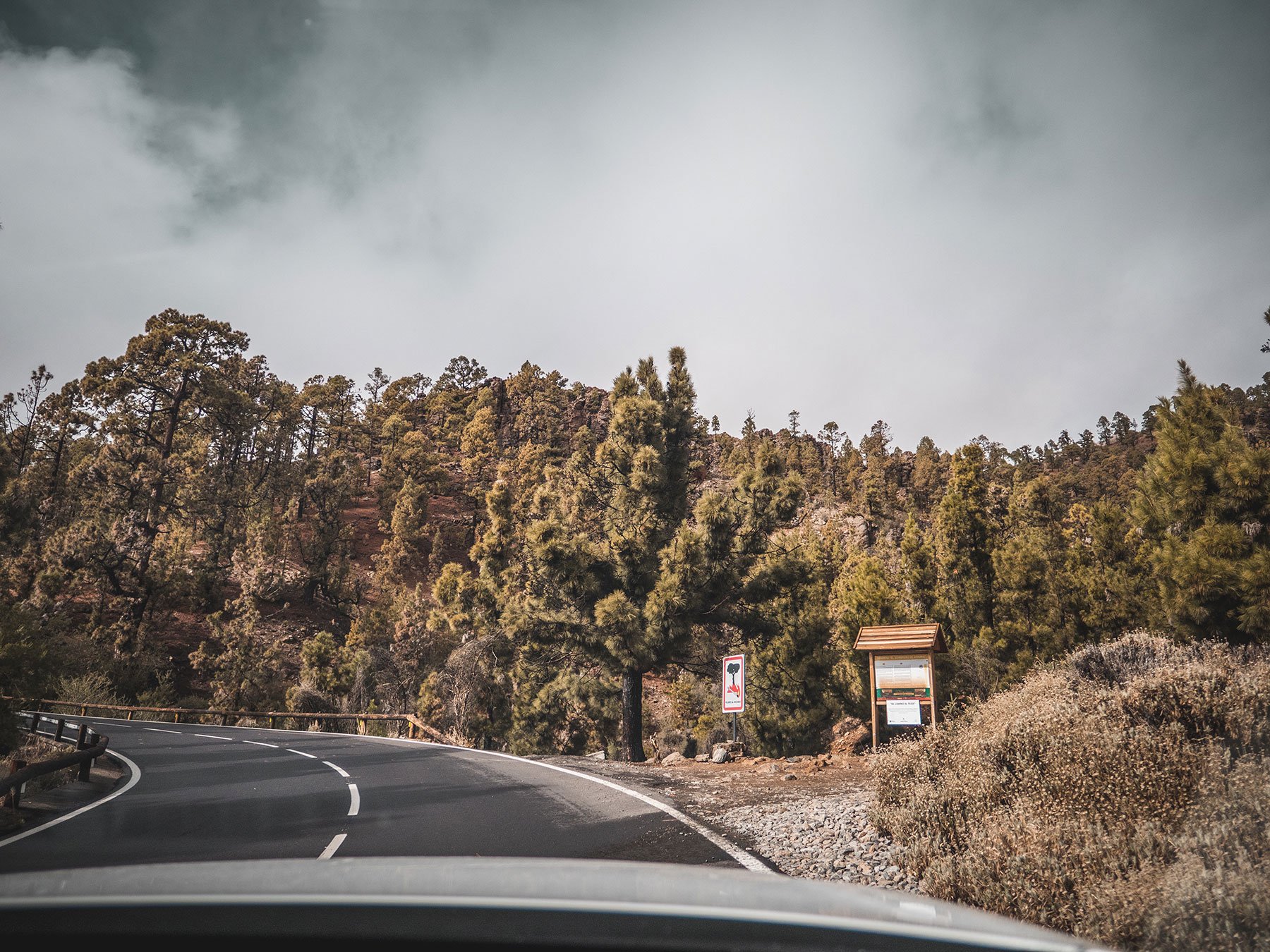
I could tell that we must have been getting close to the rim of the caldera when I noticed the trees became gradually more sparse. The terrain beside the road grew more stony, comprised of jagged grey rock in contrast to the soft brown forest floor we witnessed earlier which had carpeted the forest.
The drop on our left also became more severe. There would be few trees to cushion your fall here. Instead there was nothing but a perilous drop lined with jutting boulders and broken rock.
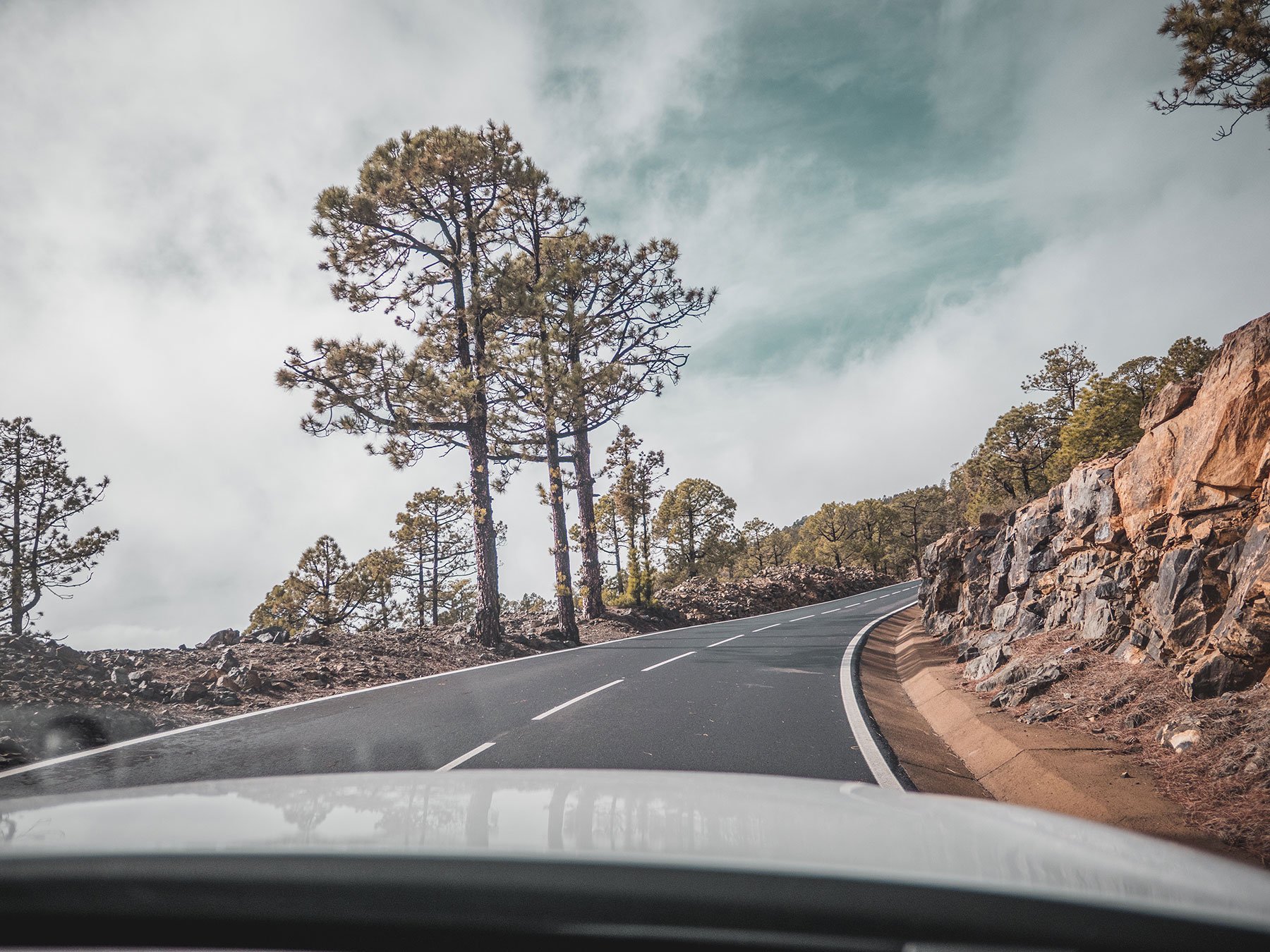
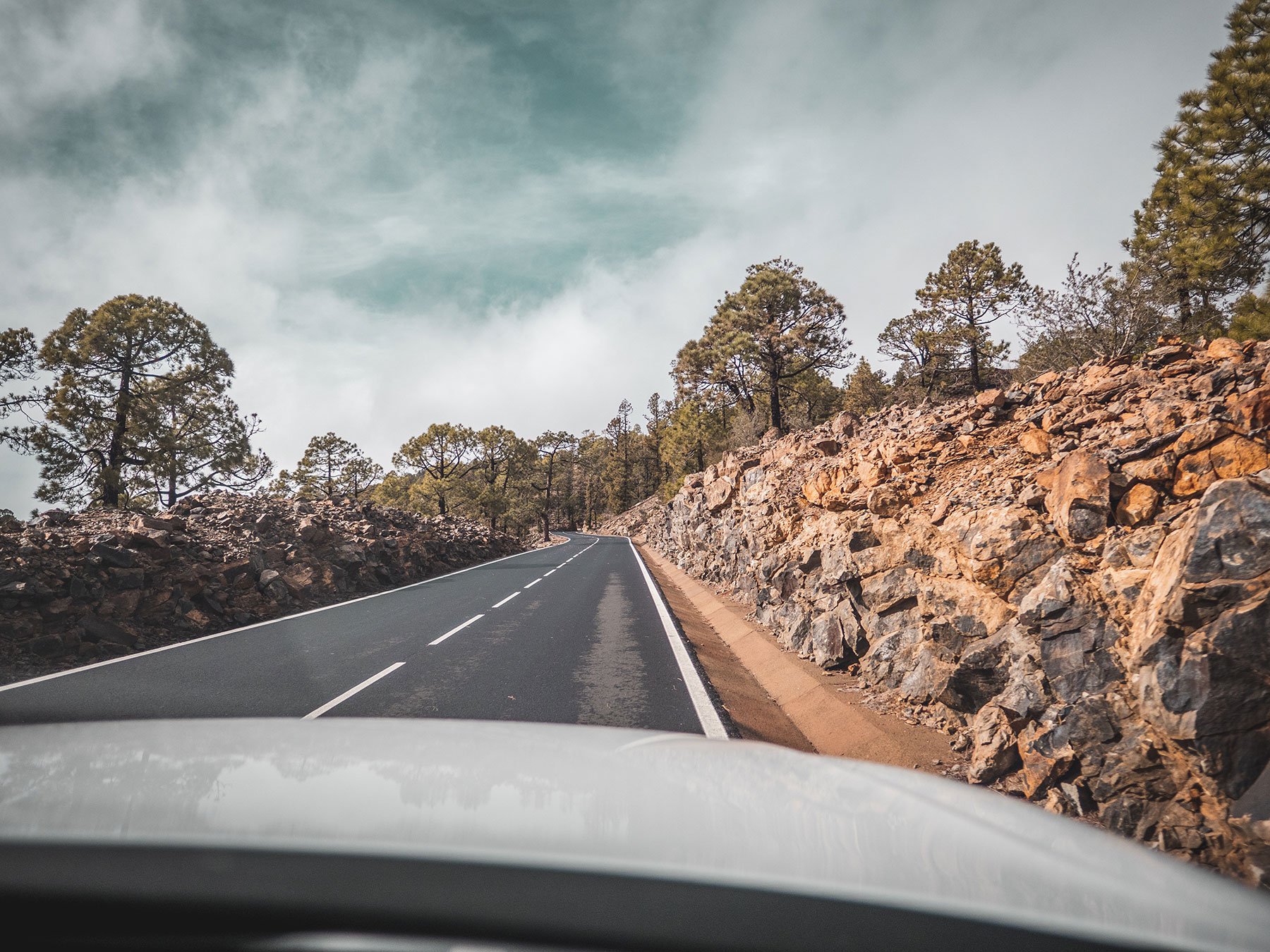
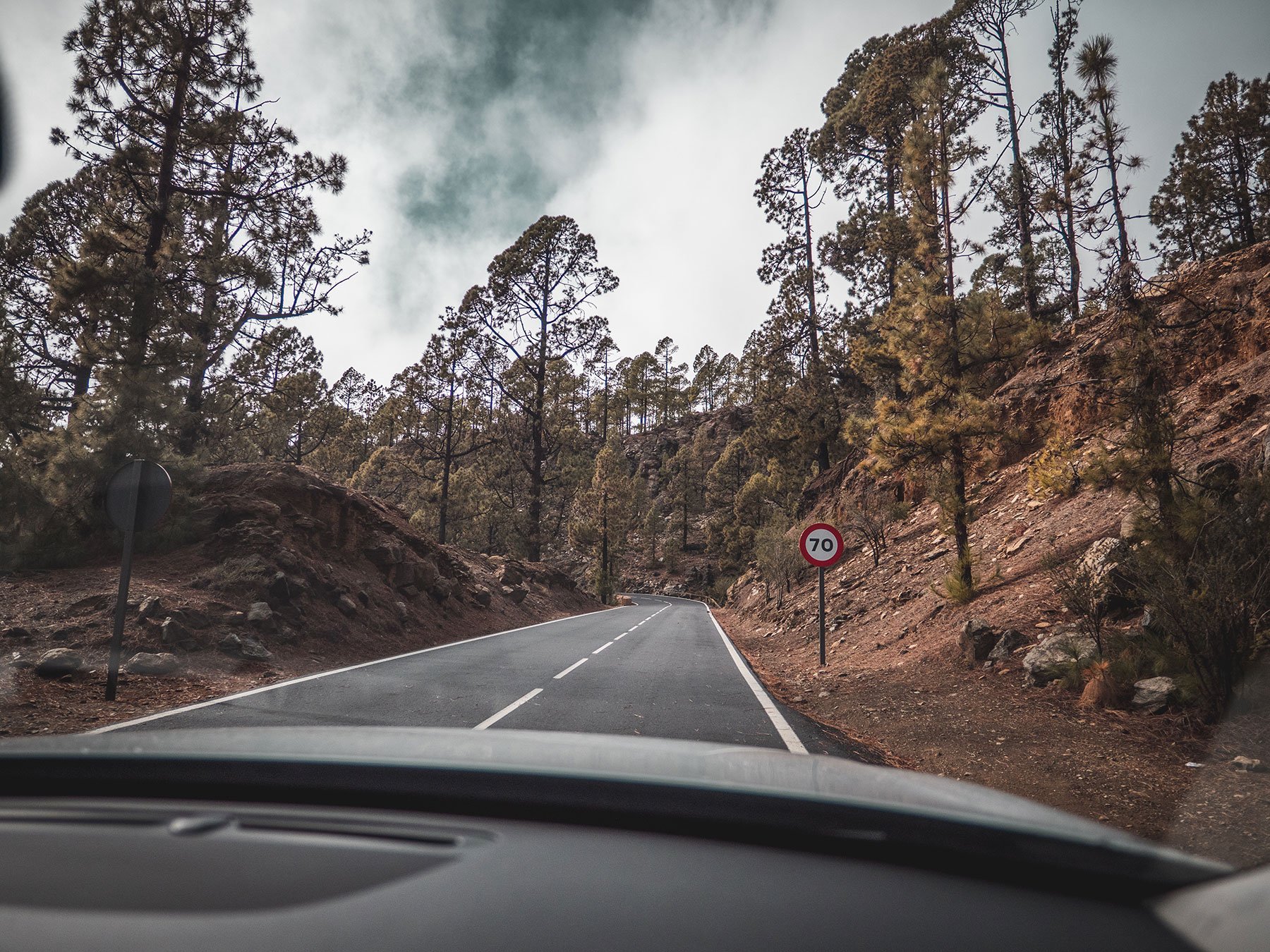
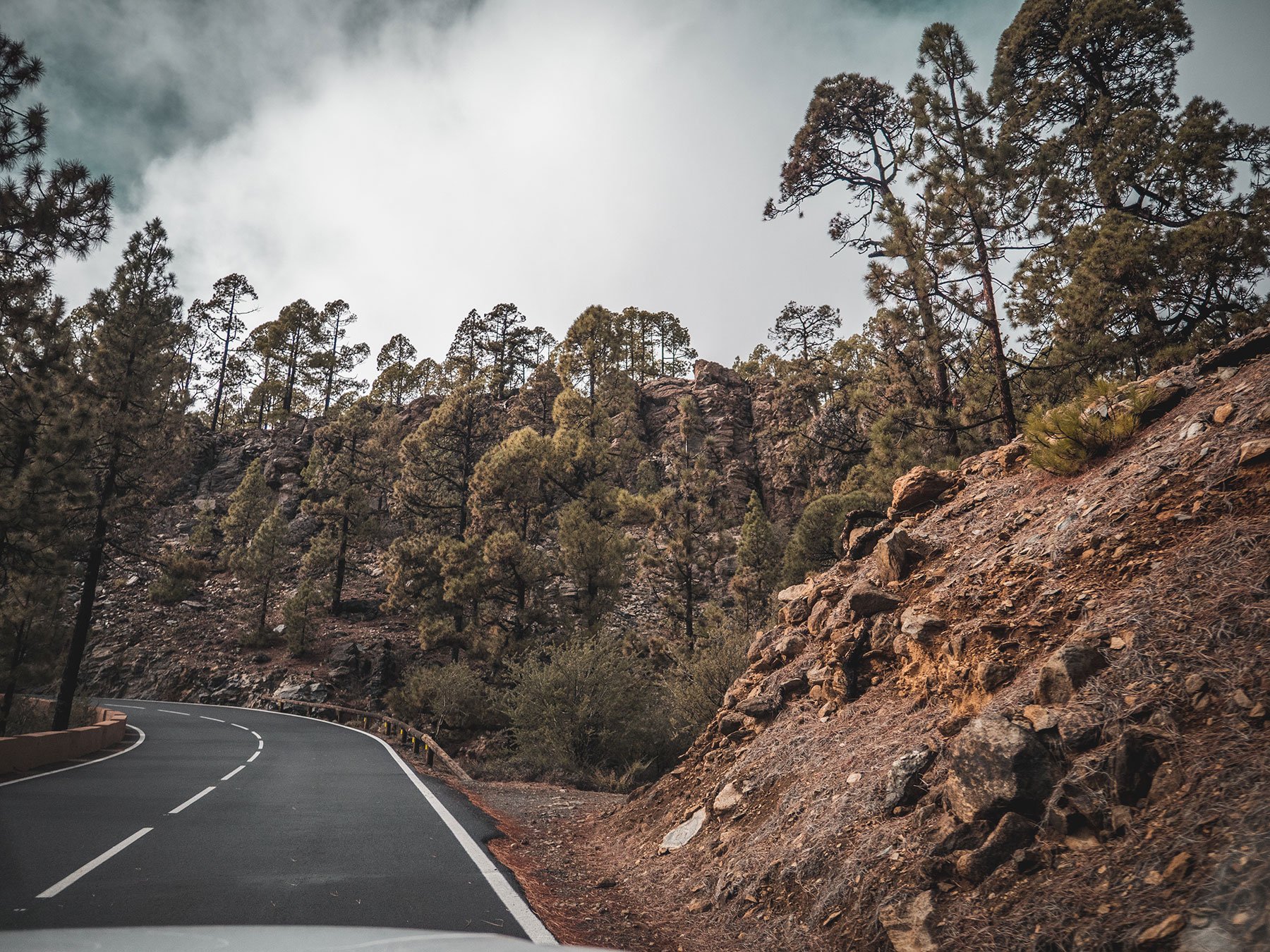
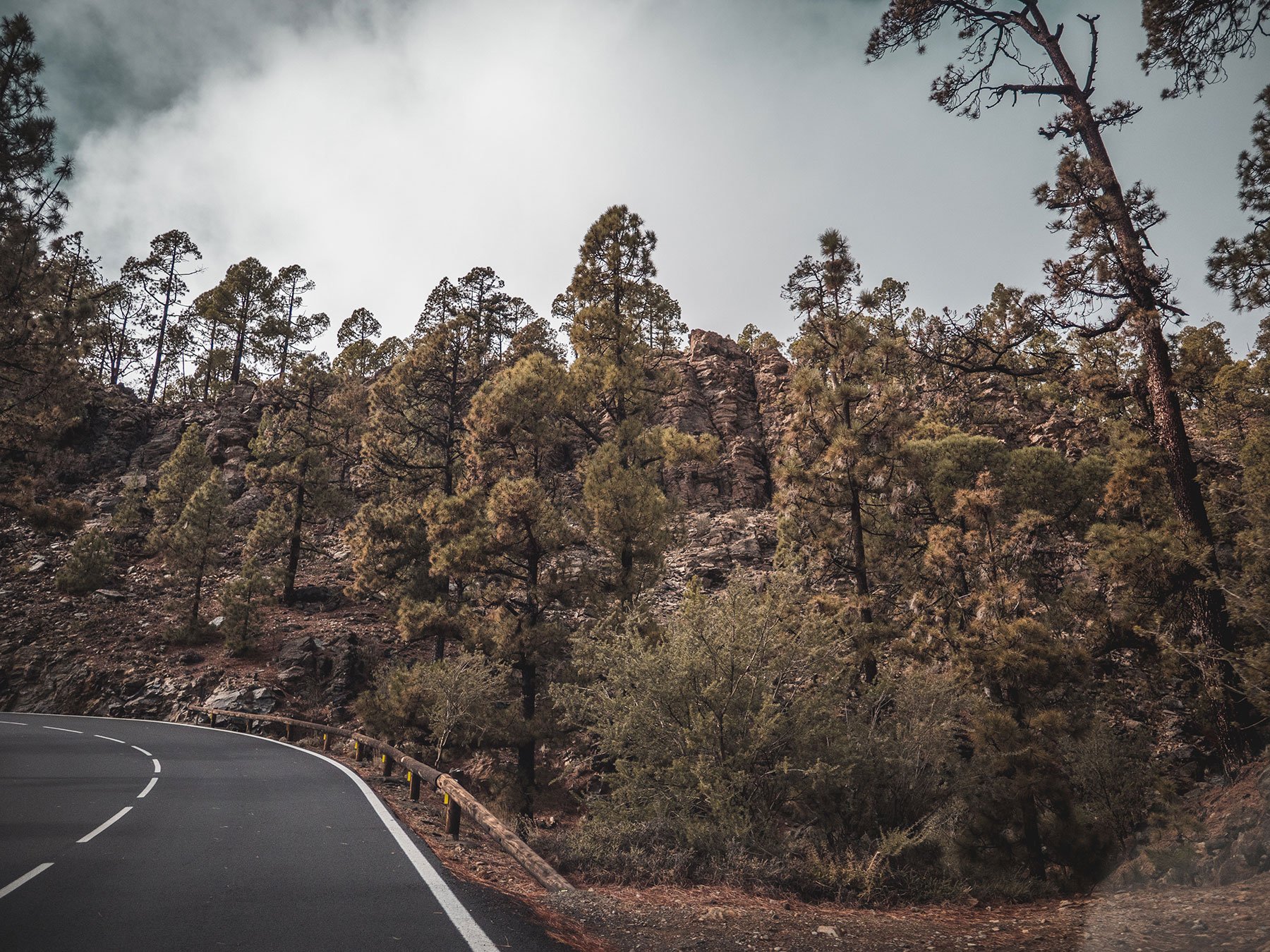

Suddenly, we found ourselves engulfed by thick grey clouds. We had to strain our eyes to make out the road ahead which disappeared abruptly behind a sheet of silver. We had reached the cloud-line now – the line that had kept us away from the sun for the last 24 hours. I only hoped that we’d break through it soon and be greeted with the warmth of the sun’s rays.
Timed perfectly with the arrival of the cloud was the influx of yellow balls of grass that dotted around us. I could best liken them to millions of Donald Trump wigs, just chilling. That’s a strange analogy, even for me.
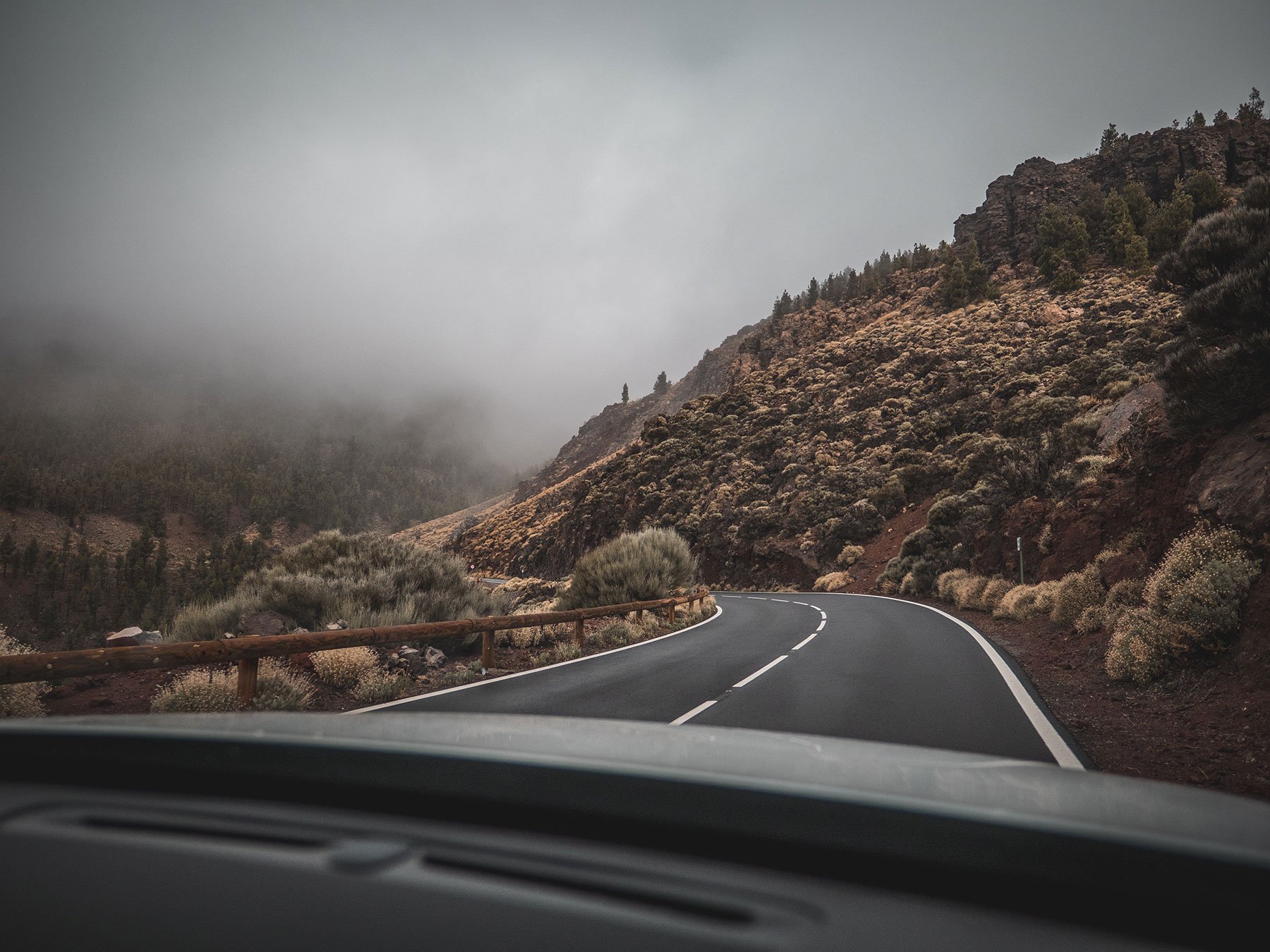
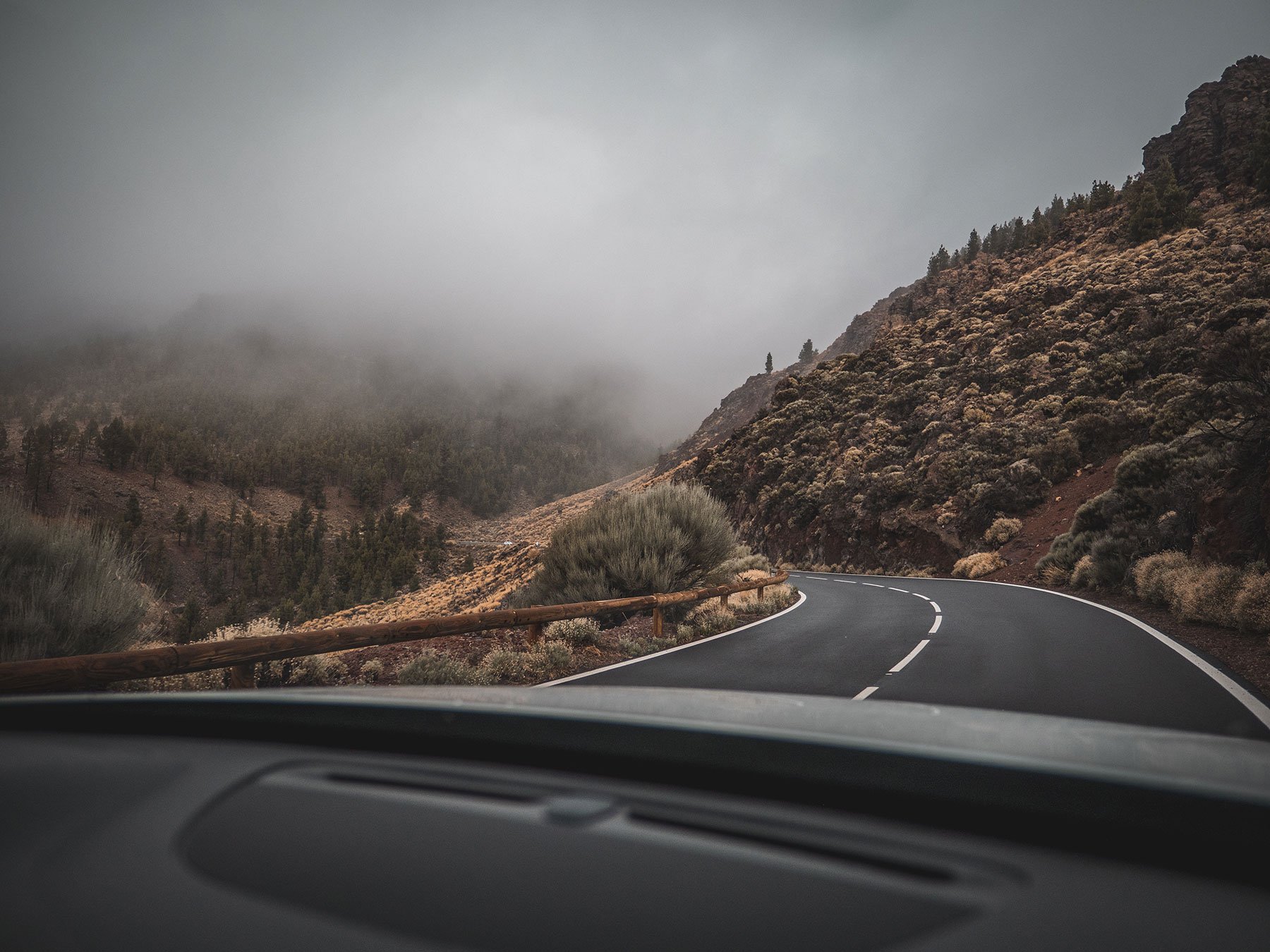
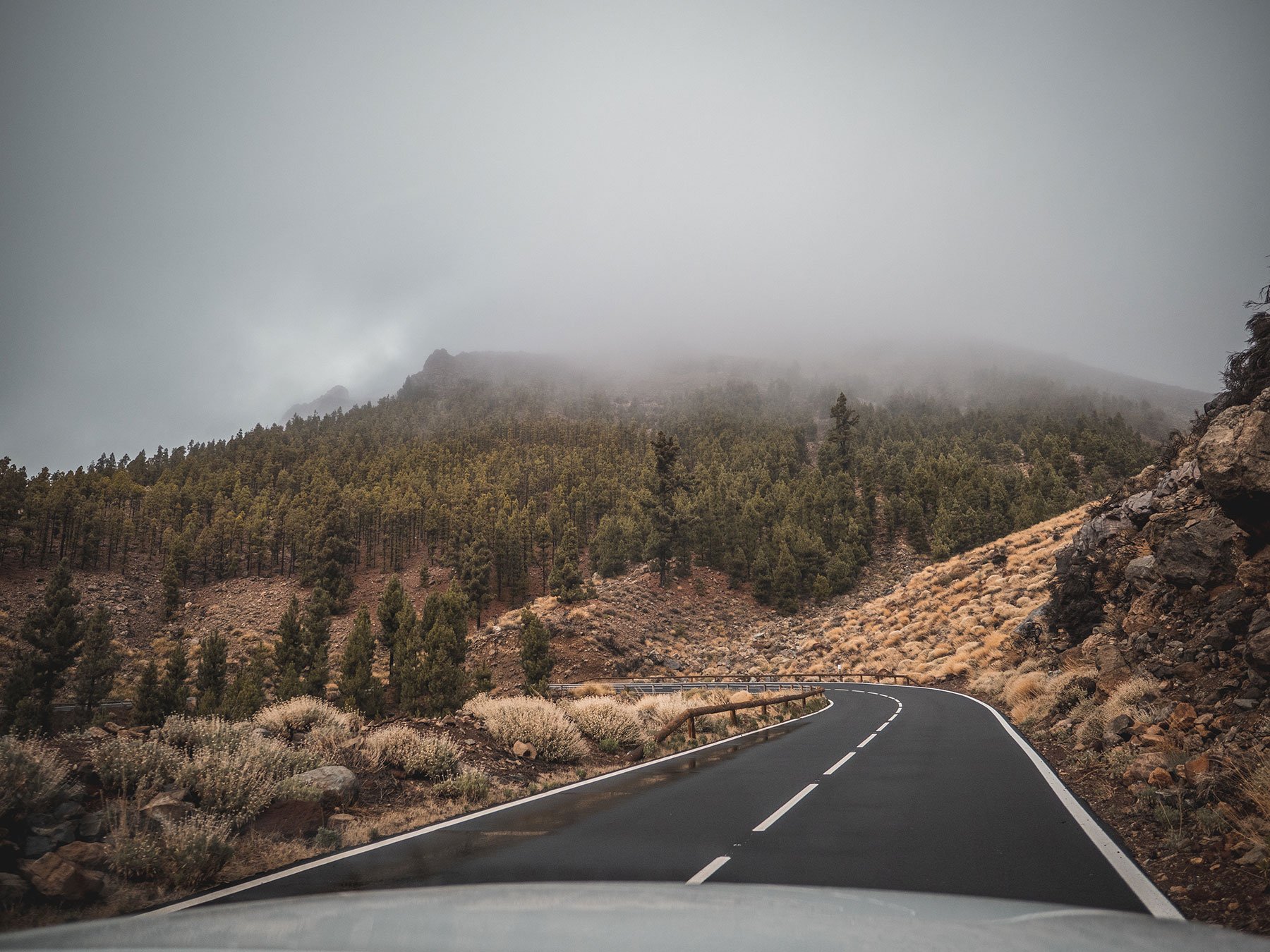
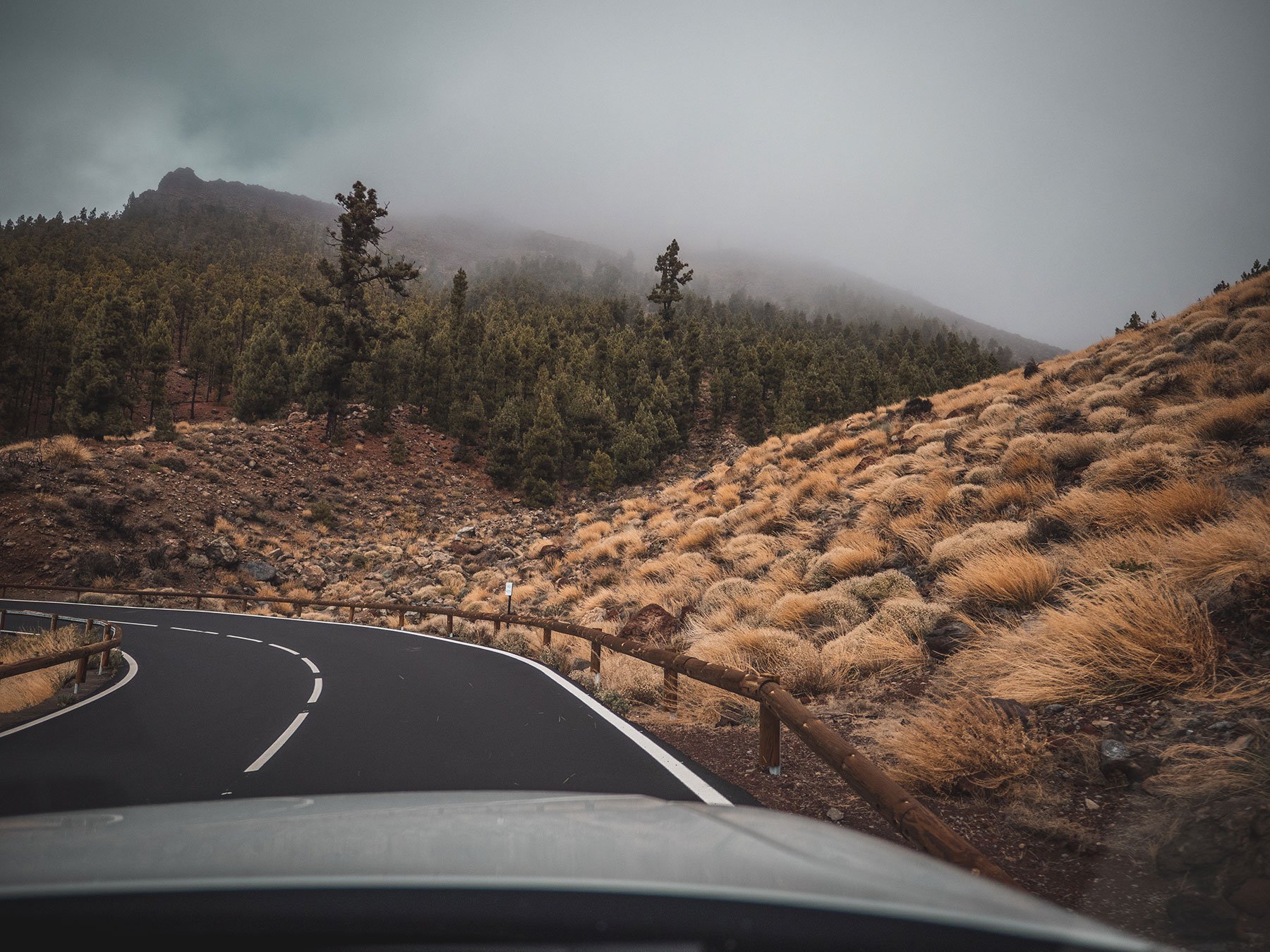
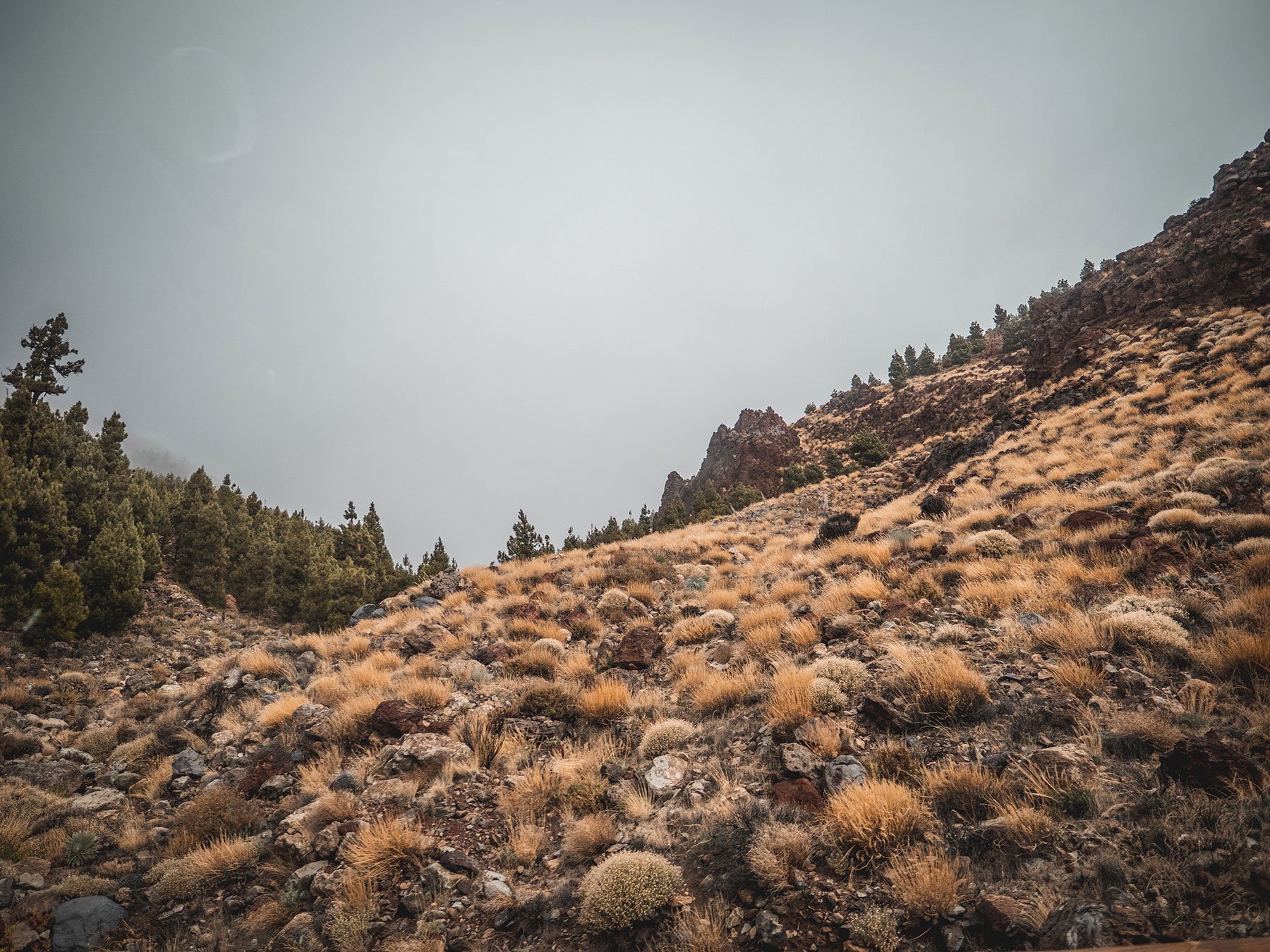
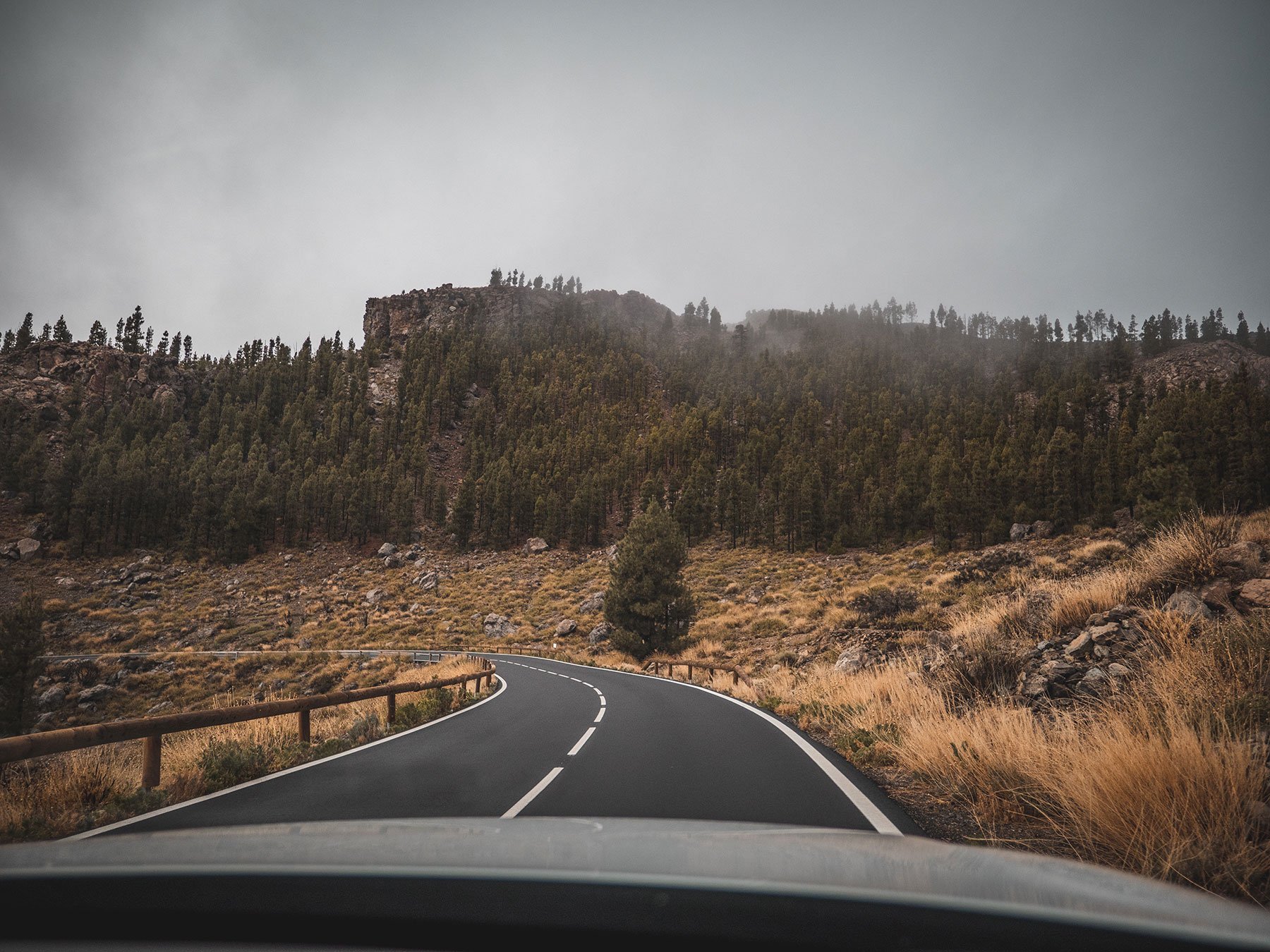
Looming ahead of us was a towering mountain-like structure made up of rock that had been carefully crafted into unique shapes by the elements. Trees grew in patches, clearly oblivious to the vicious winds that battered the rock from the north. Little did I know at this point, I was looking at the wall of the great crater, Las Cañadas.
There is a lengthy volcanic history to Tenerife. It is believed that Tenerife was formed by the joining of three shield volcanos, at an estimated 5 million years ago. The three shields make-up the north east, north west and south of the island. The joining of the shields was followed by roughly 2 million years of eruptions. A volcano known as Las Cañadas formed at the point where all three shields joined together. However, around 200 thousand years ago, the summit of Las Cañadas volcano collapsed, creating the Las Cañadas crater. In the hundreds of thousands of years that followed, several new volcanos were formed. The next was Las Cañadas II located in the southern sector of the caldera. This volcano suffered a catastrophic collapse. Due to its southern location, it is possible that the rocks of Garcia are part of this volcano’s collapsed summit.
After Las Cañadas II there was Las Cañadas III in another sector of the caldera. Finally, Teide was born – sometimes referred to as Las Cañadas IV.
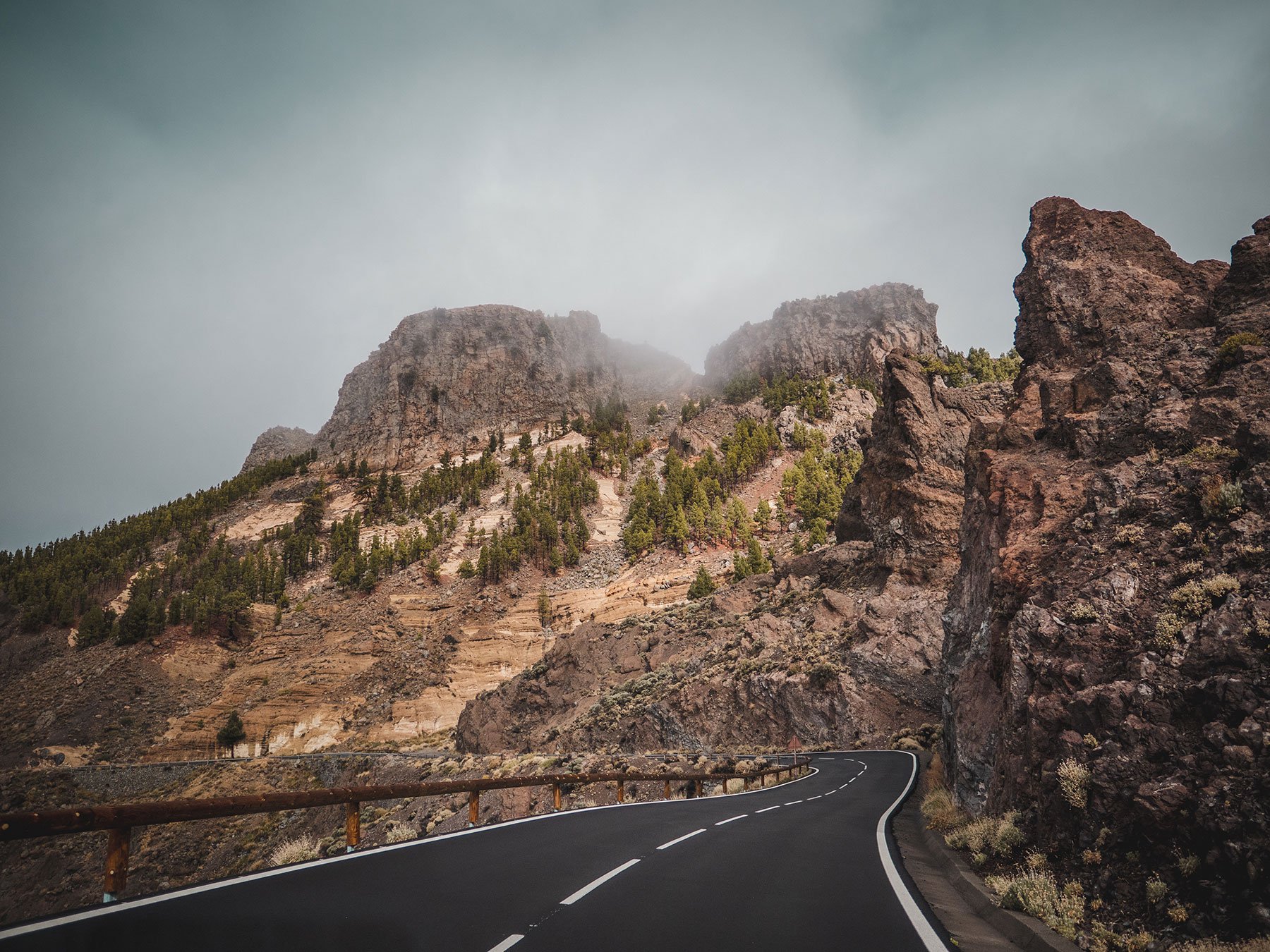
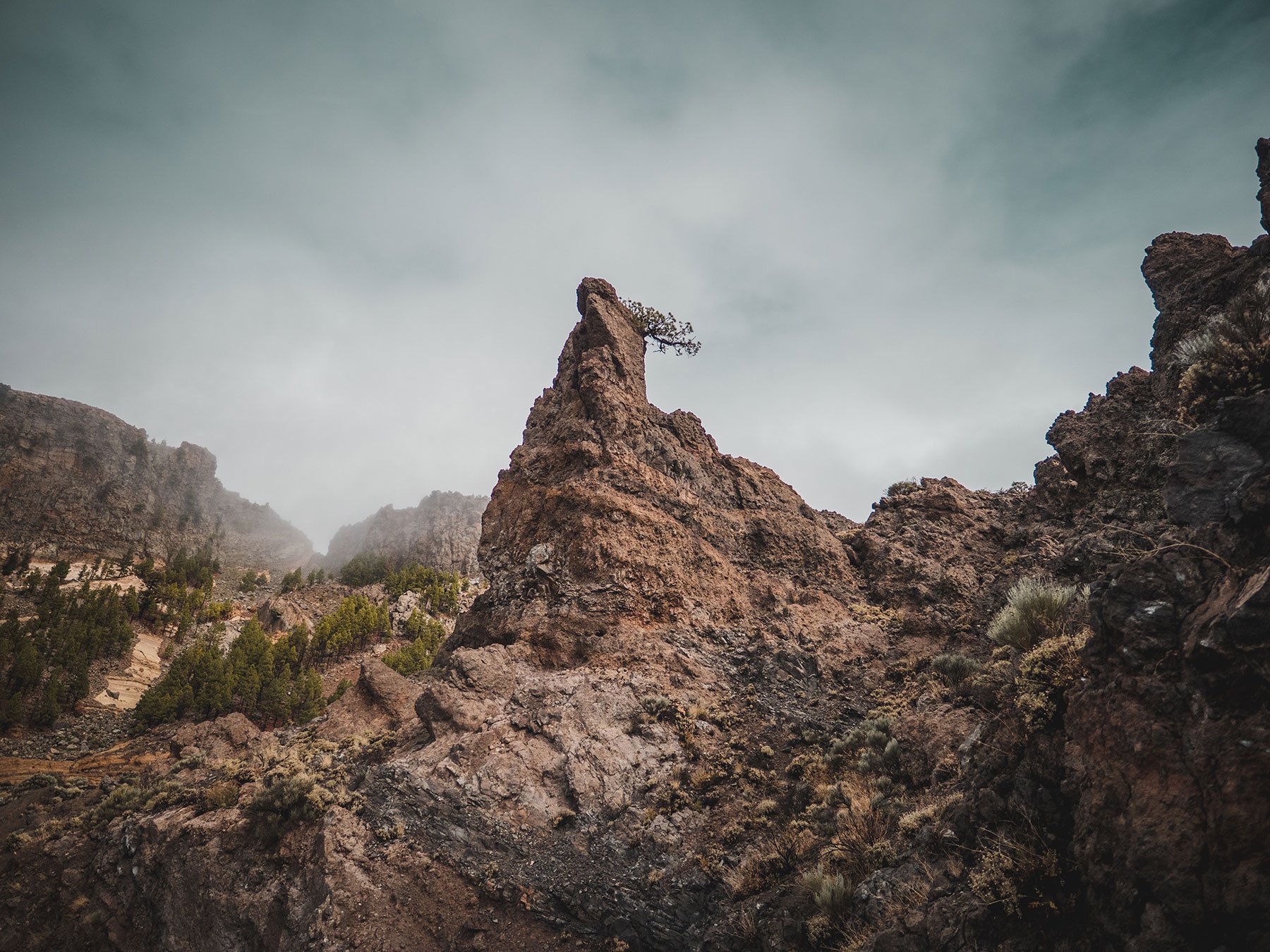
We entered the caldera via a gap in the crater wall. Upon entry, we found ourselves thrown into another planet. Here the land was a flat expanse of orange rock surrounded by rough walls. In the centre of the caldera was the huge, commanding mass that was mount Teide, Pico Viejo perched on her left as the second highest peak in the area.
I was no stranger to unusual terrains. My road-trip through Namibia had brought me to some places that looked like they were straight out of a sci-fi movie. It amazed me how even the landscape of Namibia was so different from what I was faced with now. Otherworldly, yes but a completely different planet to even Namibia. The rock was a mixture of orange and black here. Towards the centre of the caldera it was brighter whereas the crater wall which we drove by was dark and foreboding. It almost looked like someone had stripped the colour out of it and left it in greyscale. Only small blonde shrubs told me that I still had my colour vision intact.
What surprised me probably the most was just how fantastic a condition the road was in. The smooth tarred surface stretched out into the far distance, not a bump or pothole in sight. It was certainly well-maintained.
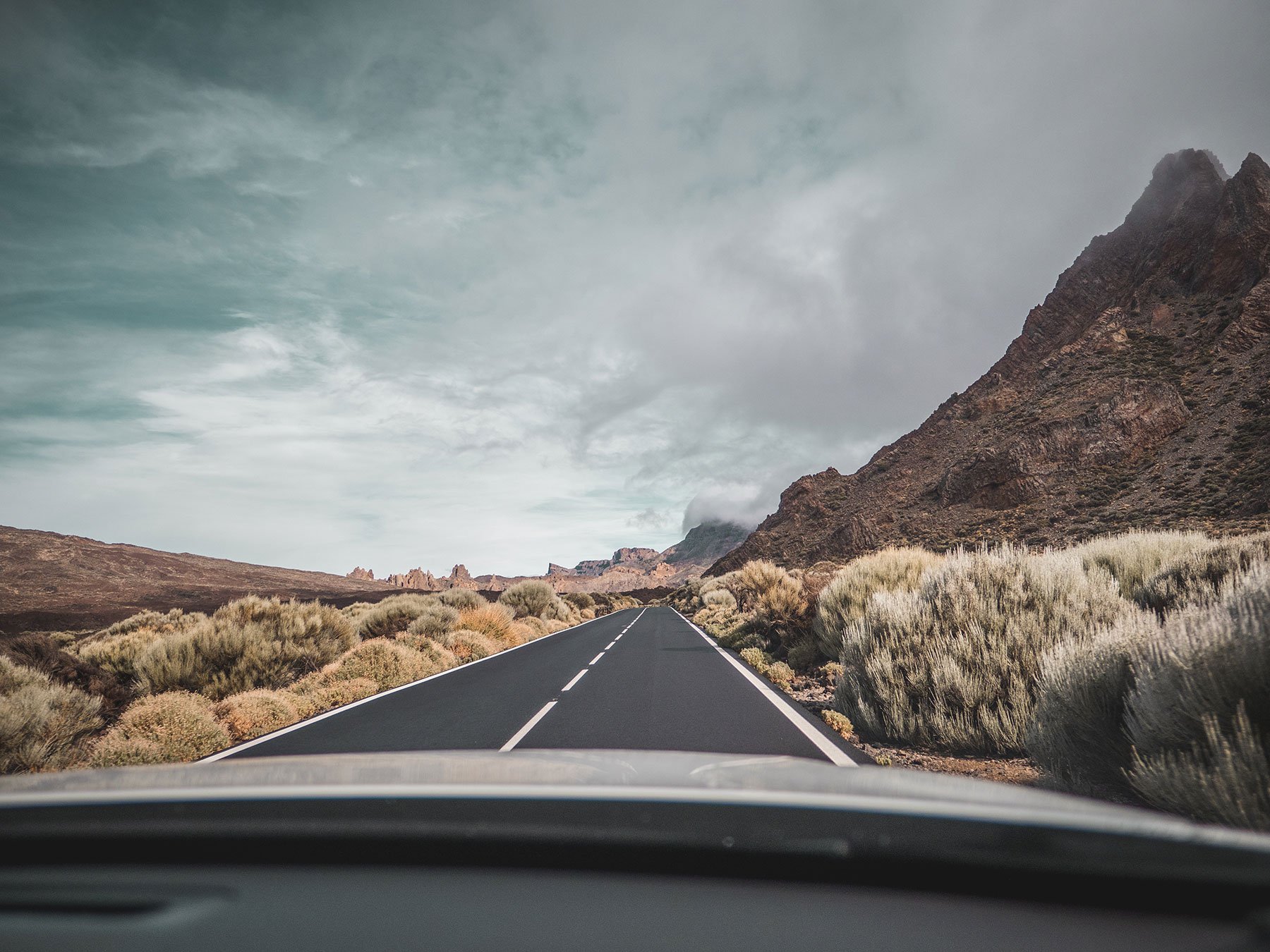
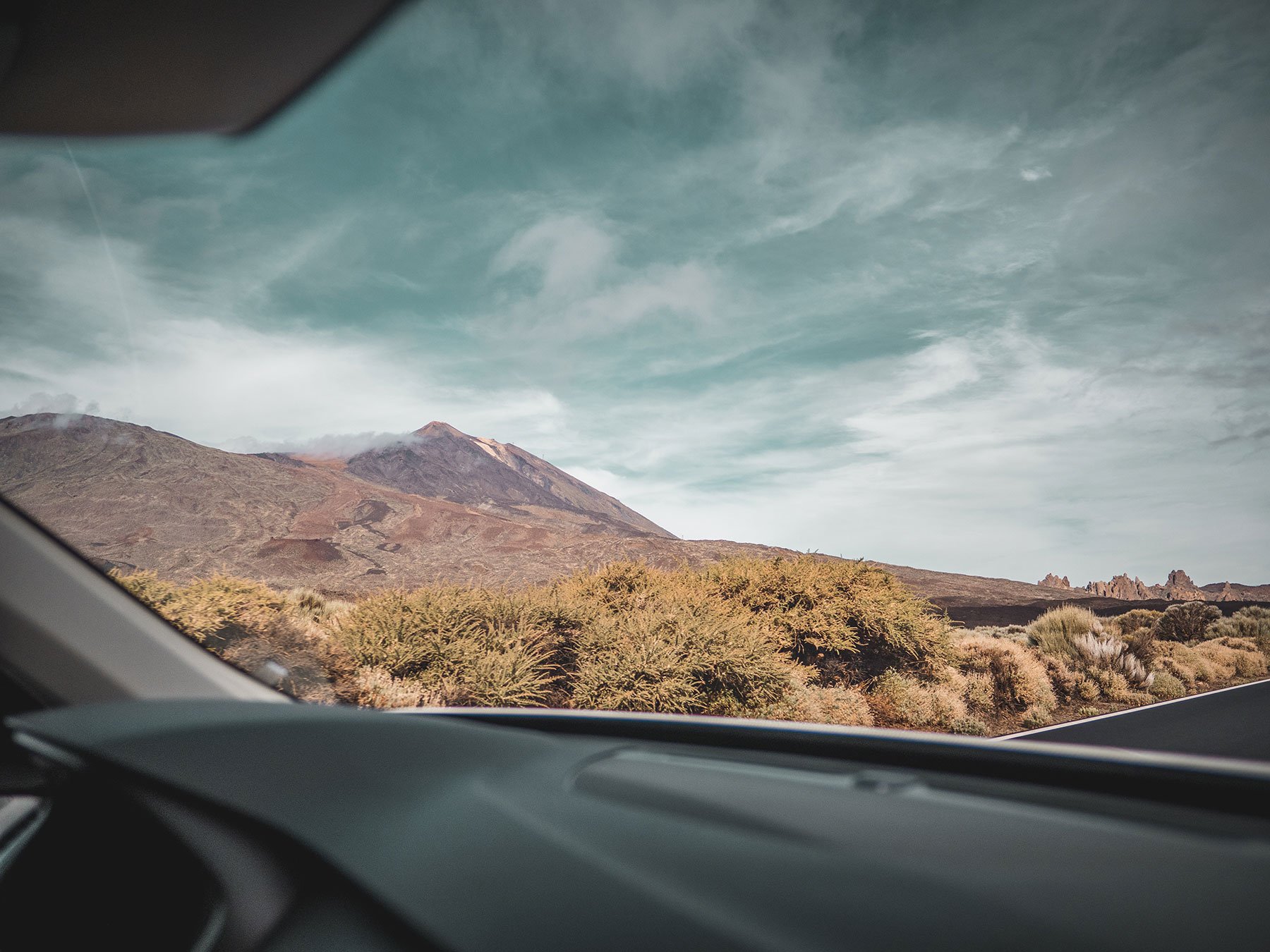
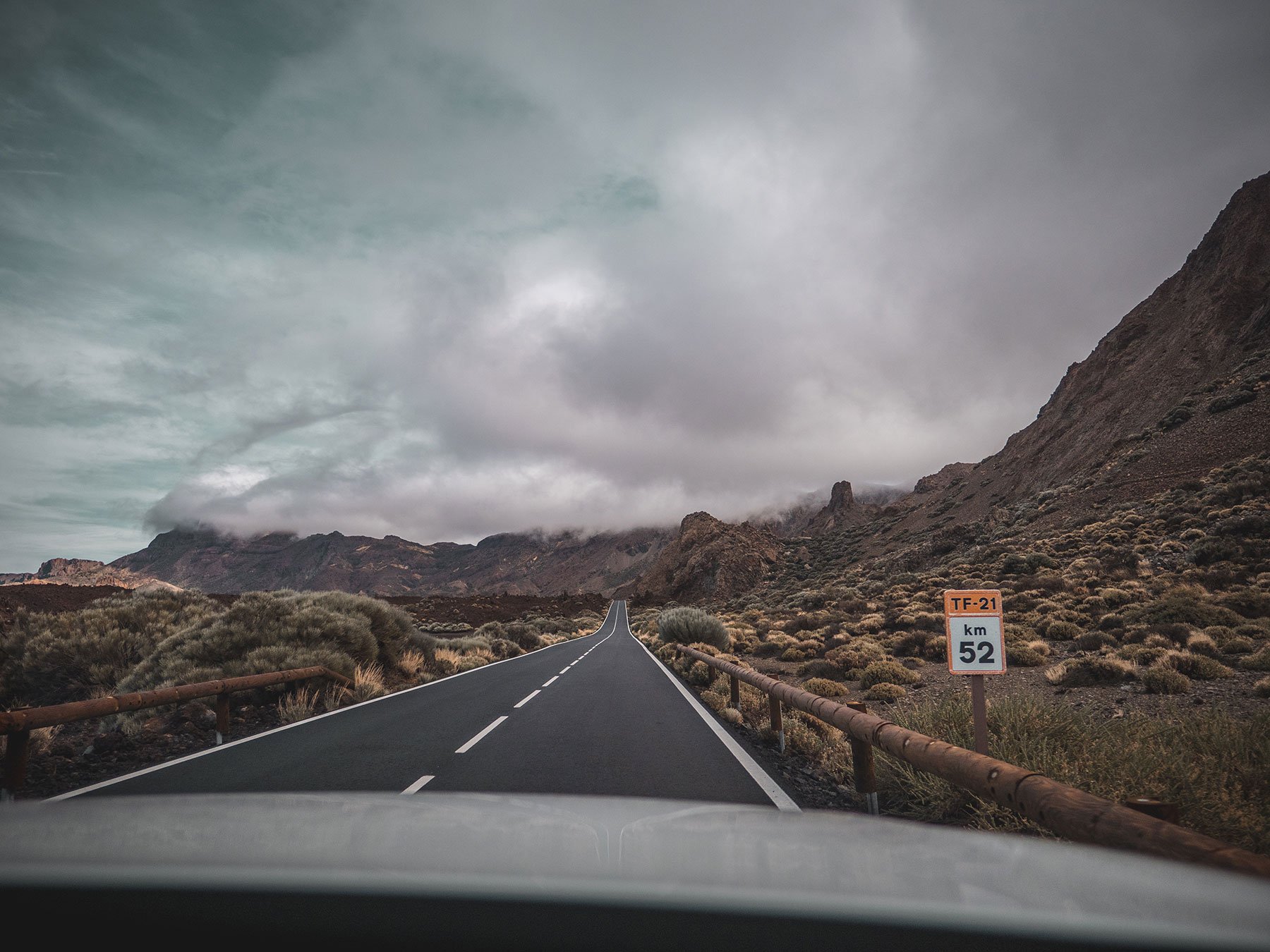

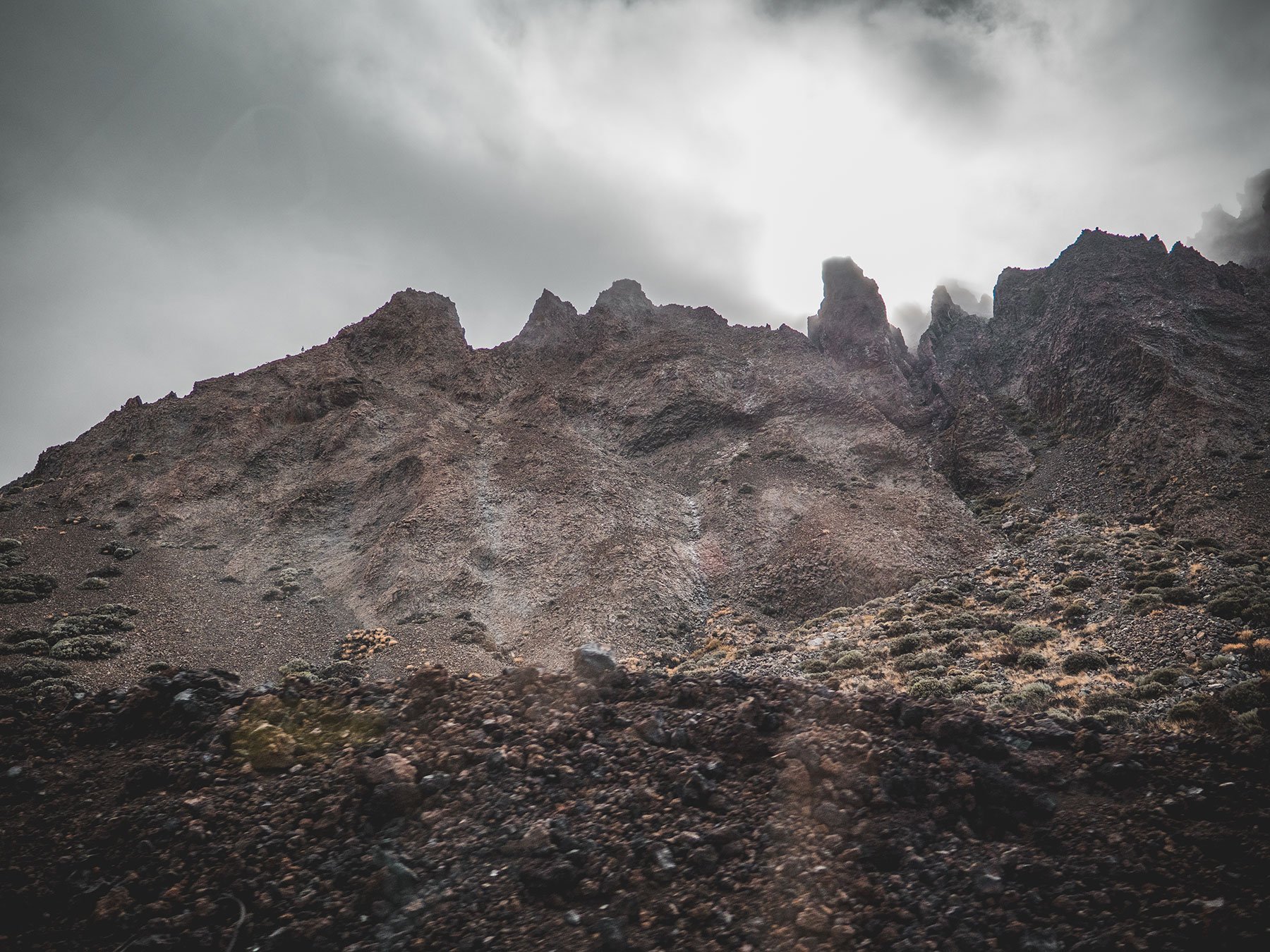
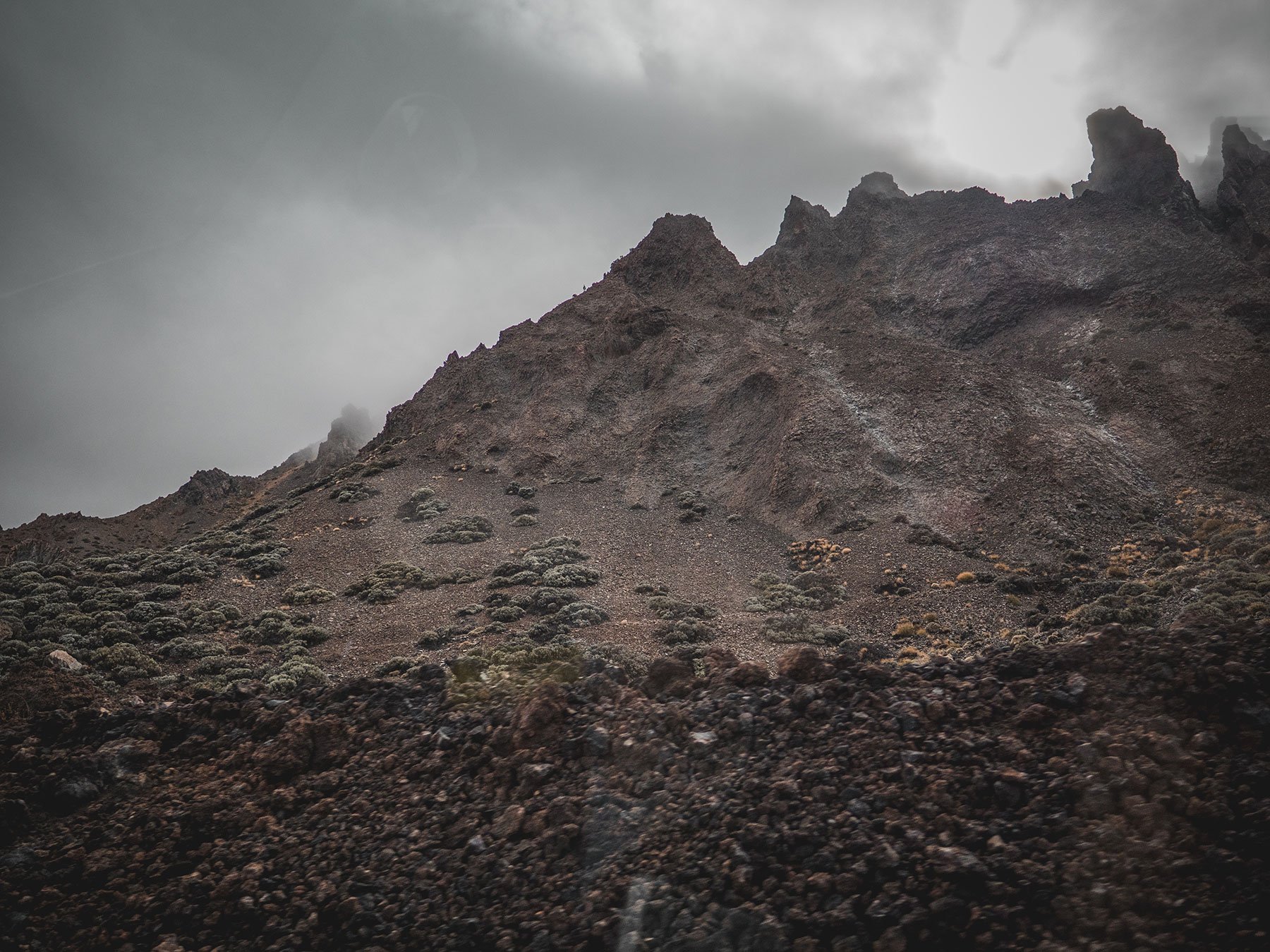
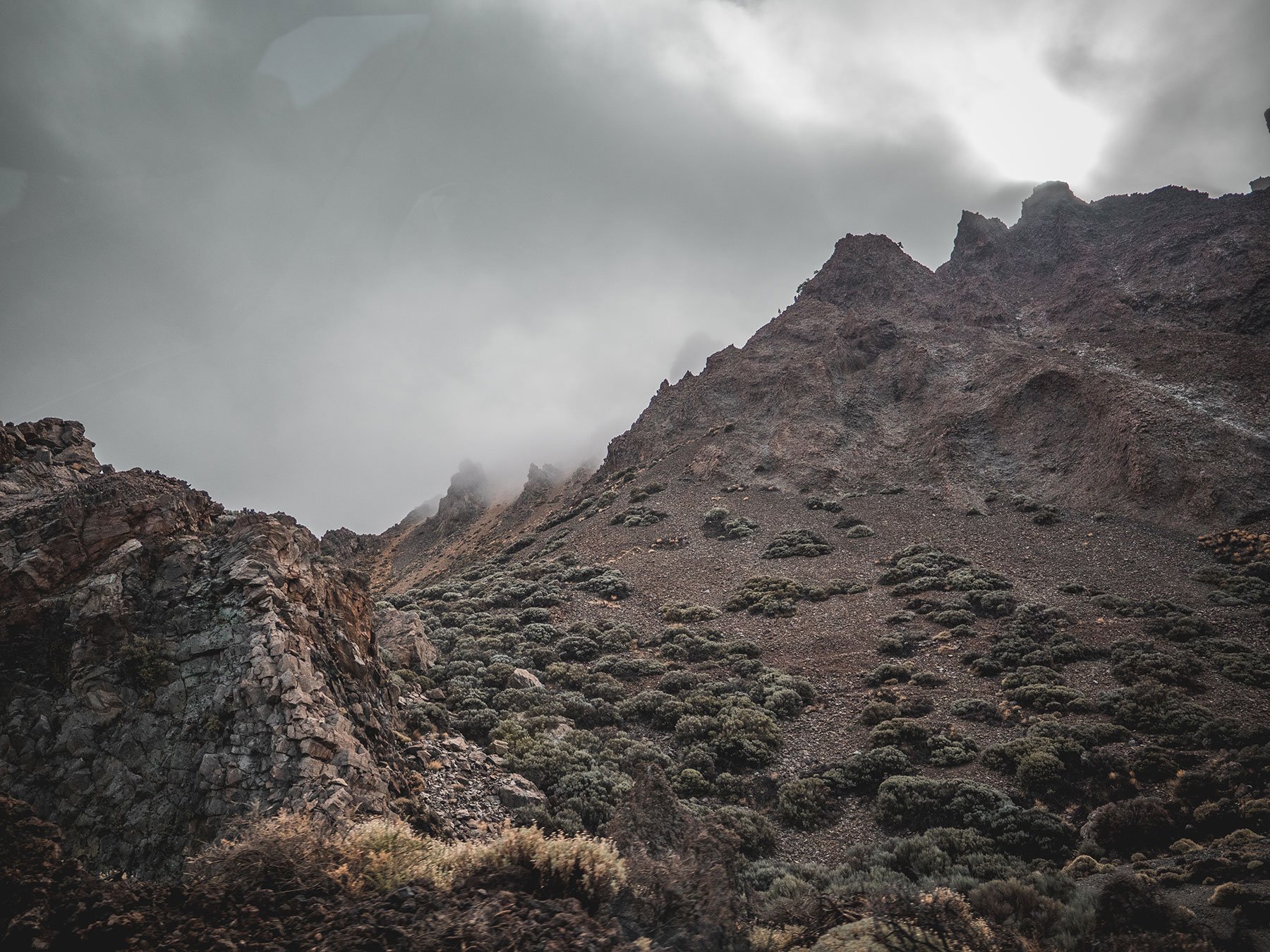
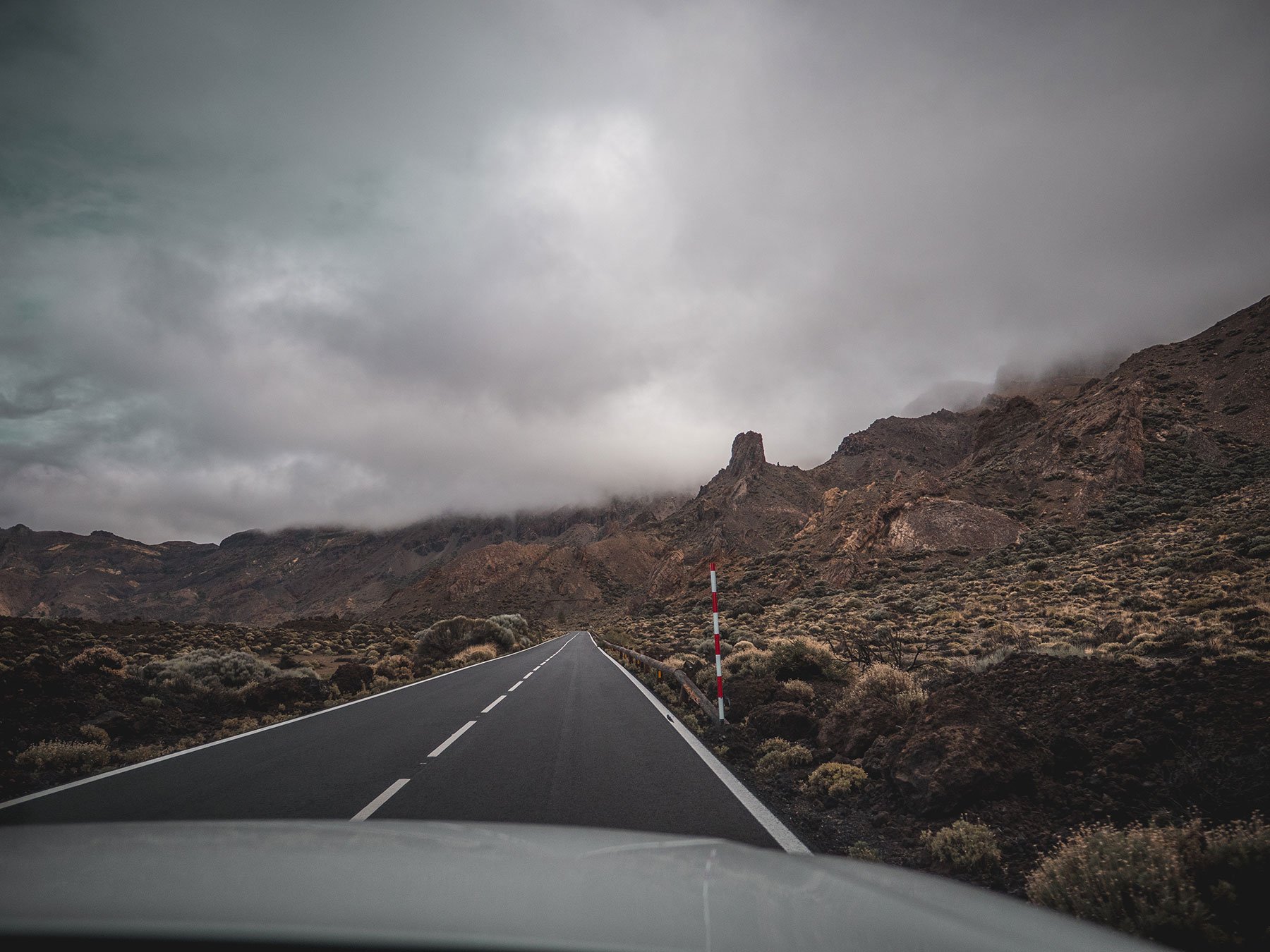
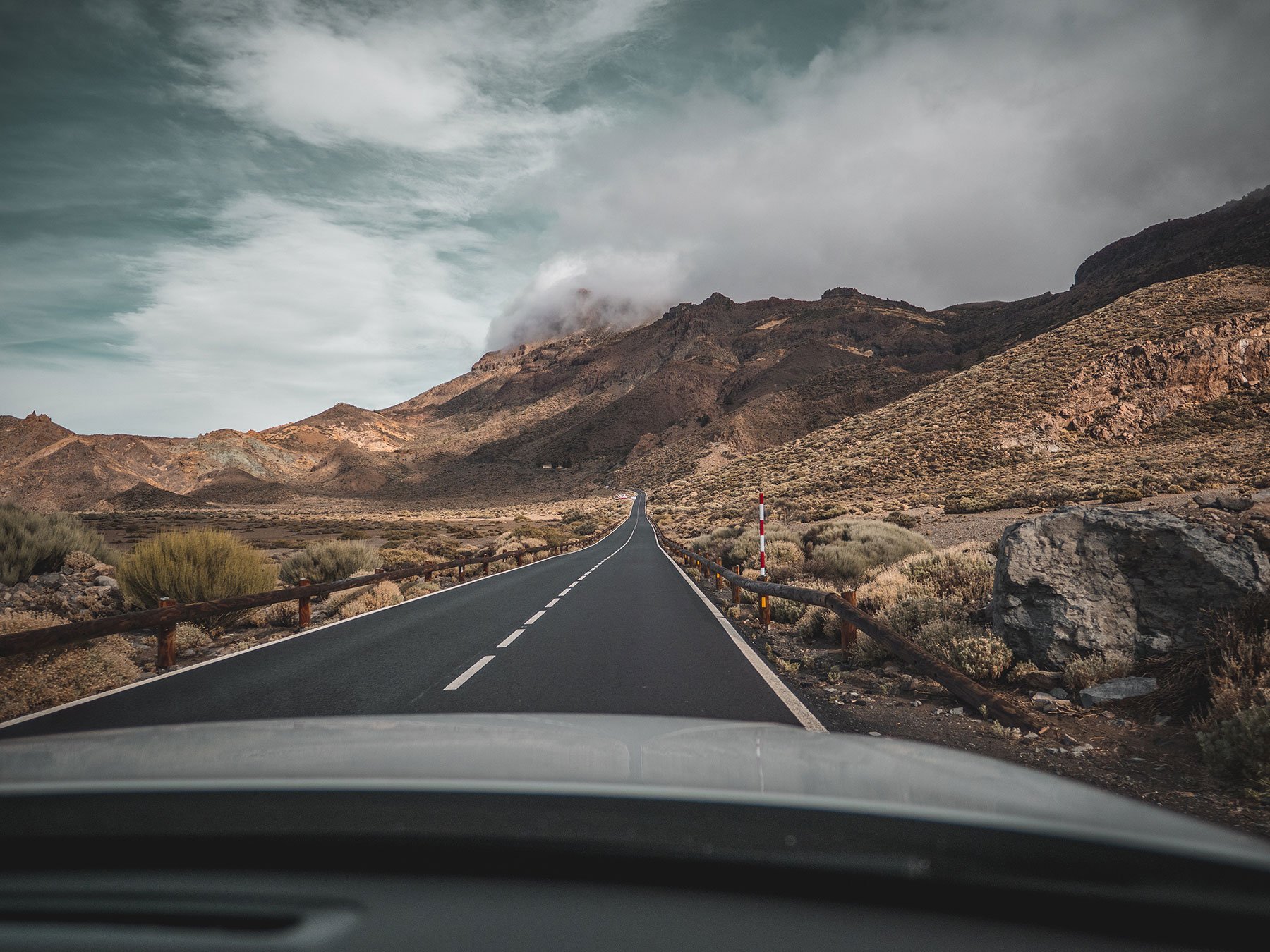
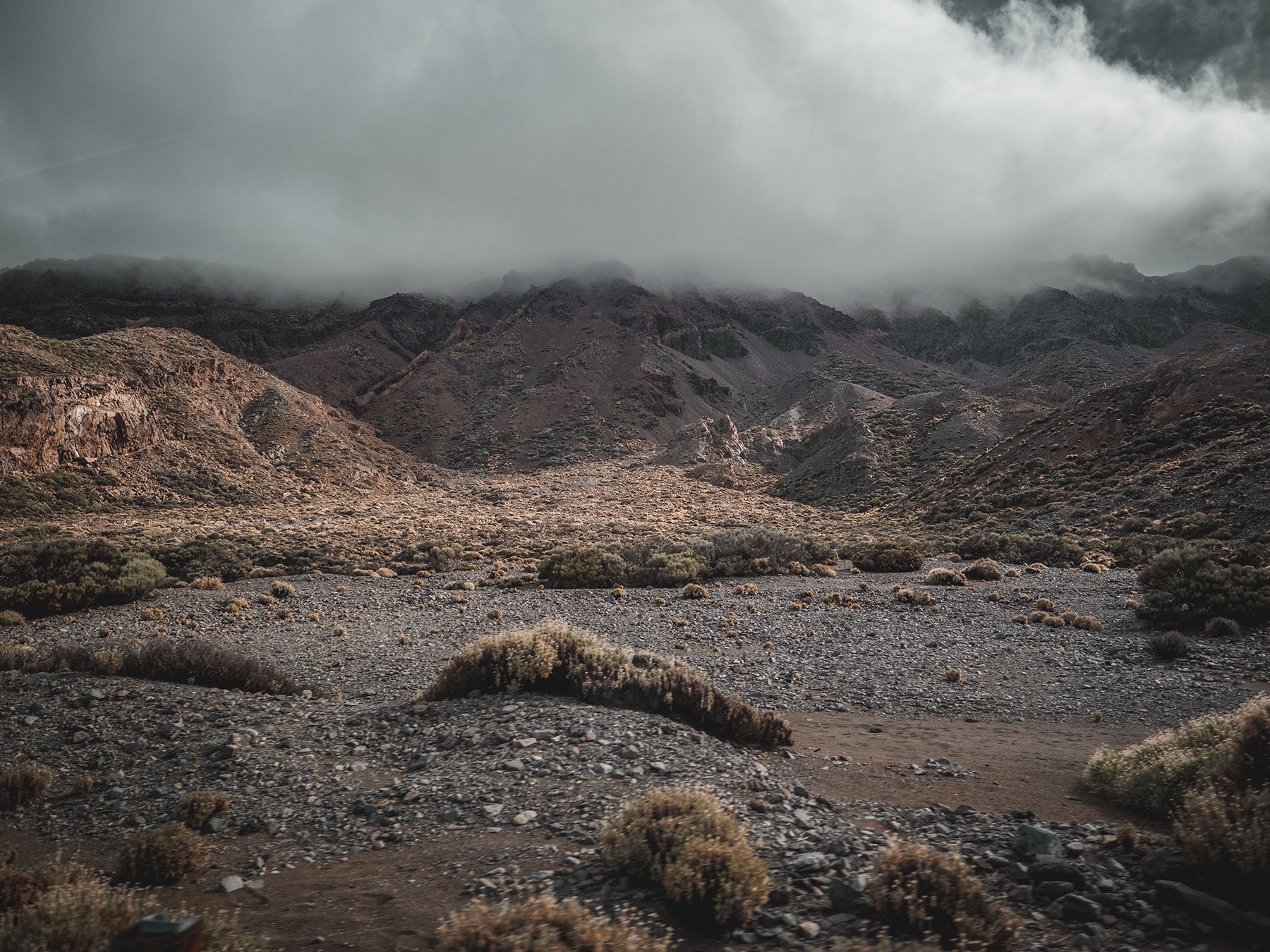
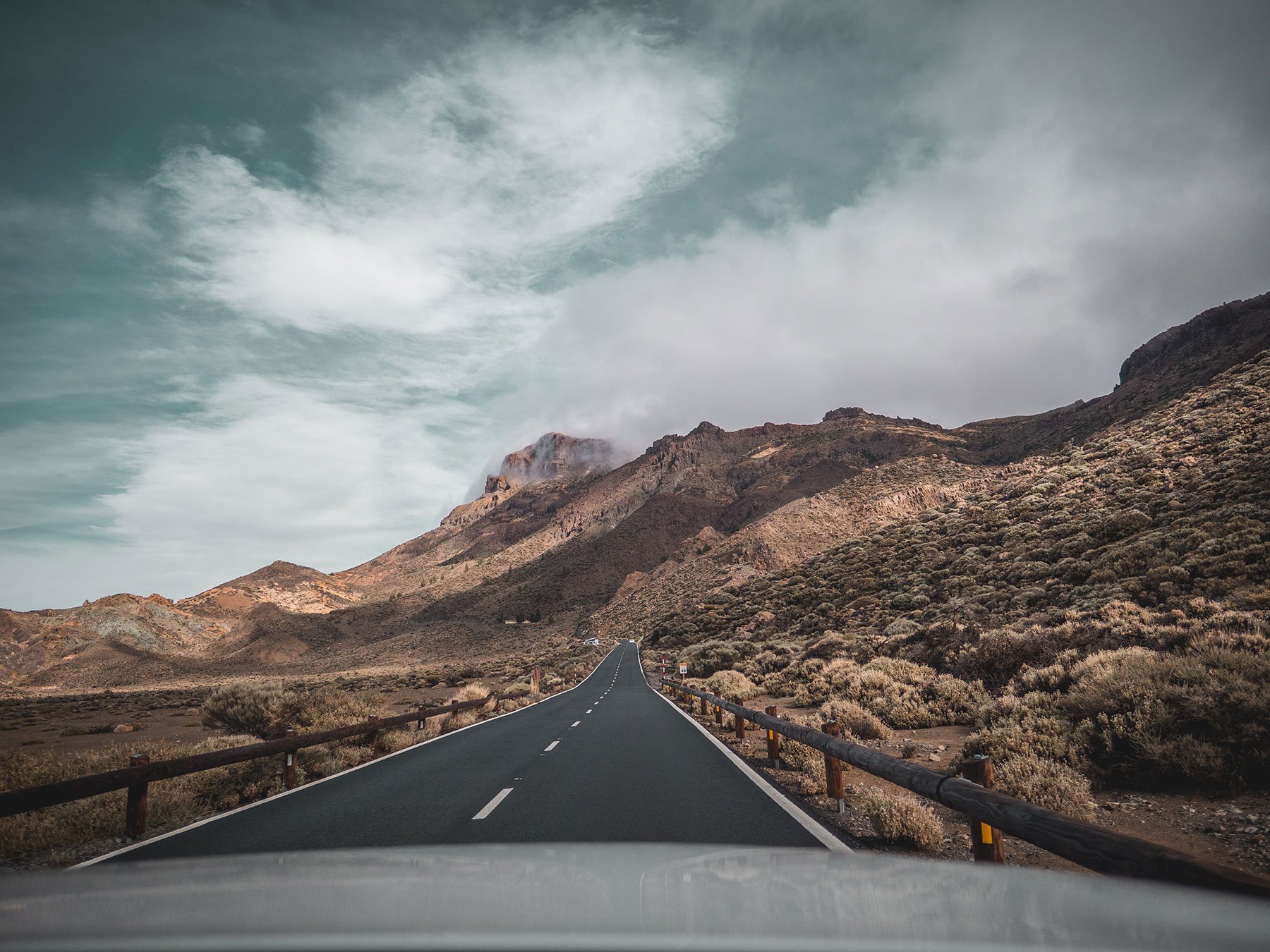
In the far distance I could make out striking pinnacles, clustered together. The sun caught them like a spotlight, turning them a vibrant orange. I knew they must be the notorious Roques de Garcia.
There is in fact a side-road that takes you to a small car-park right beside Les Roques de Garcia. For lazy folk, like me, this is rather handy as it drastically cuts walking time.
I had been nervous about how busy it would be and had actually anticipated the worst, imagining no parking spots. However, we were in luck. There was only a handful of cars in the car-park so we were able to get fairly close – one of the many perks of visiting outside of peak-season.
Out of my window, I first laid eyes on ‘The Rock’. It was everything as spectacular as I had imagined and stood near the back of the group of unusual pinnacles. The red rock formation was silhouetted against the great Teide, whose monstrous form dominated the horizon.
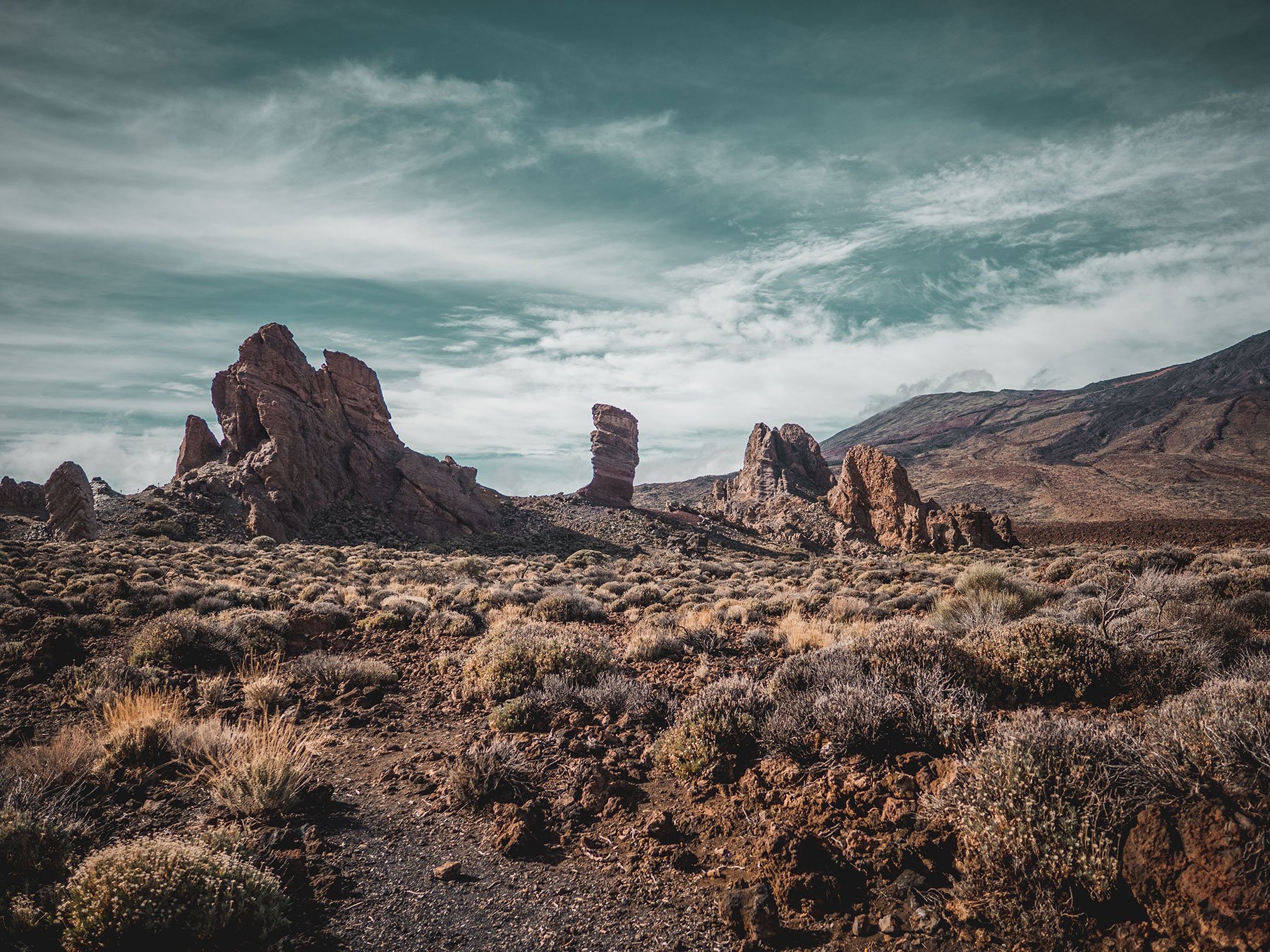
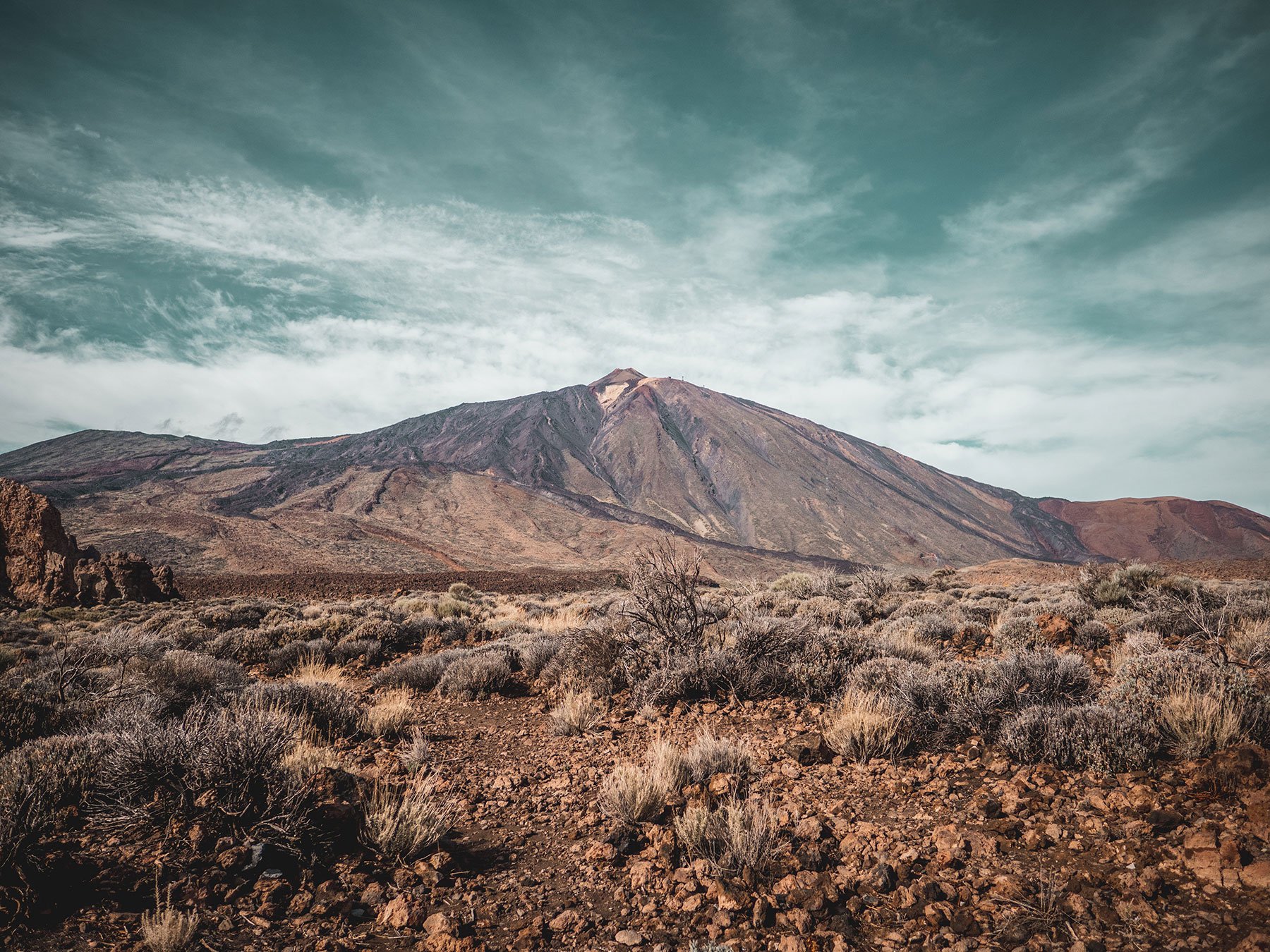
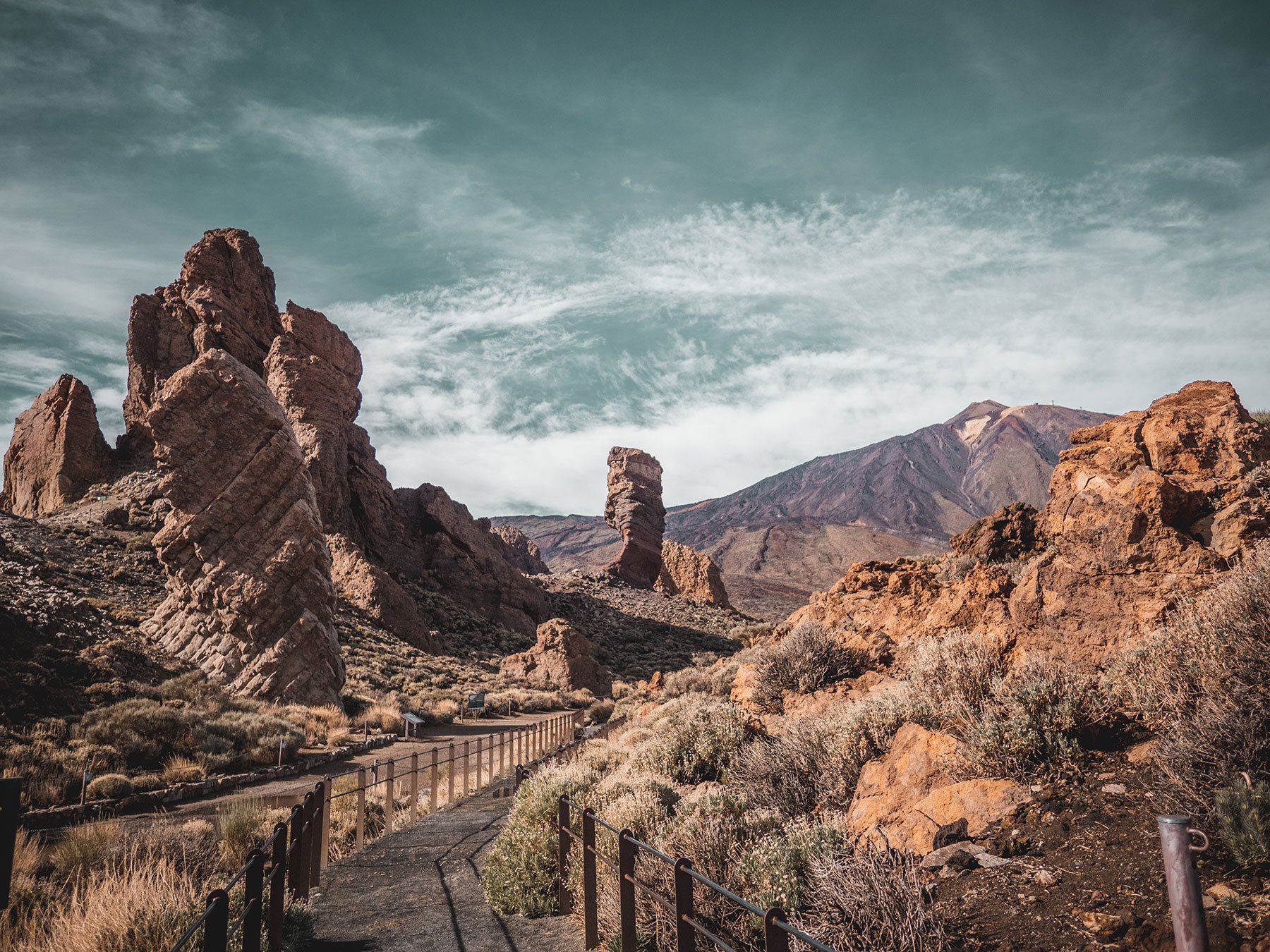
I wasn’t prepared for just how windy it was. I decided to remove my cap for its safety before plunging into the powerful gale. I nearly got blown over! As soon as I left the car a biting wind took hold of me, howling eerily as it surrounded the rocks and shrubs. It was clear to see how the pinnacles had been crafted.
It was then a short walk through the windswept terrain to reach the rocks. You don’t realise just how huge they really are until you are stood in their shadows. ‘The Rock’ especially is a remarkable sight to behold, the bulk of the pinnacle balancing precariously on a thin base. It amazed me how it stood so sturdily in such dramatic conditions.
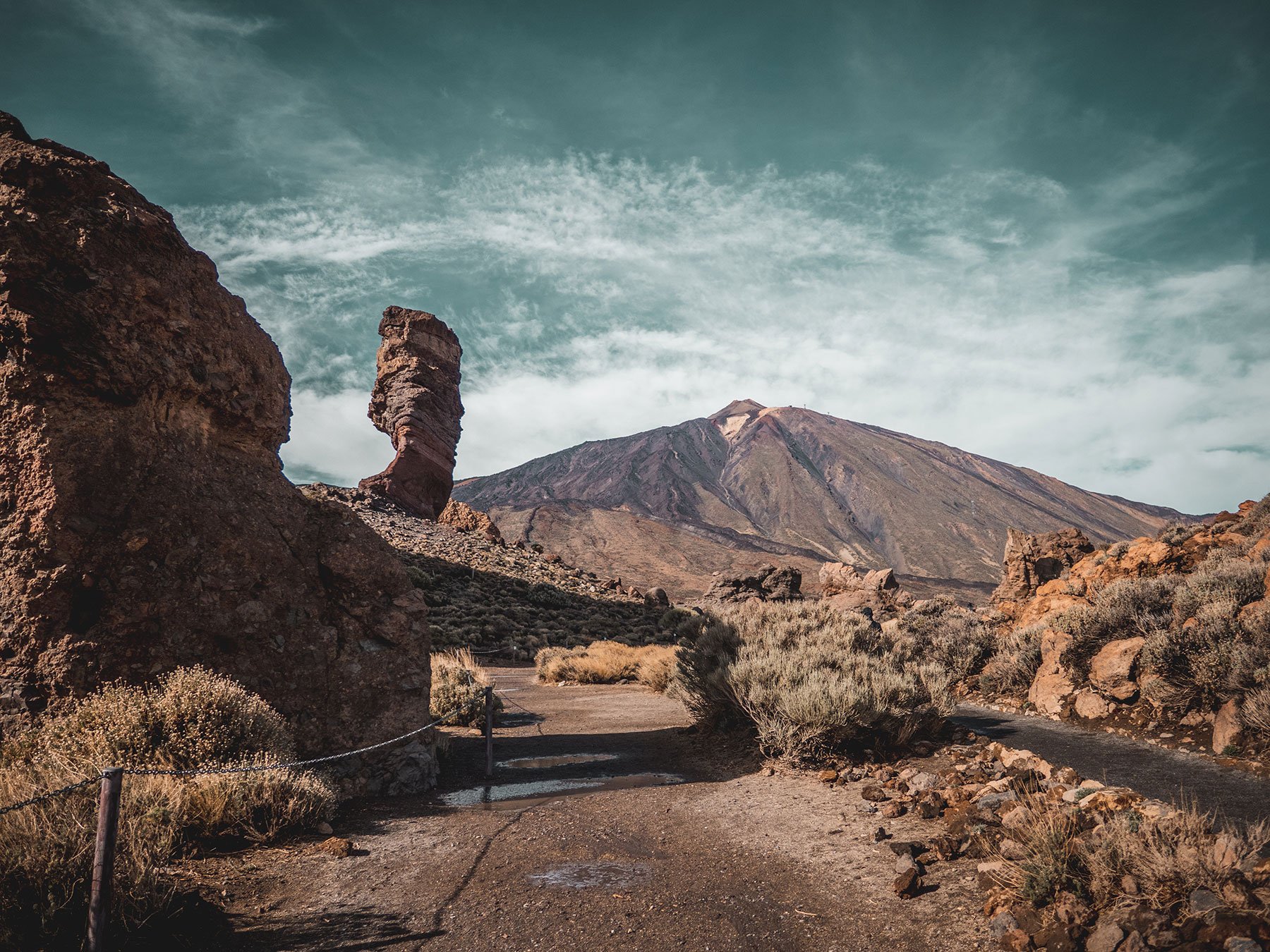
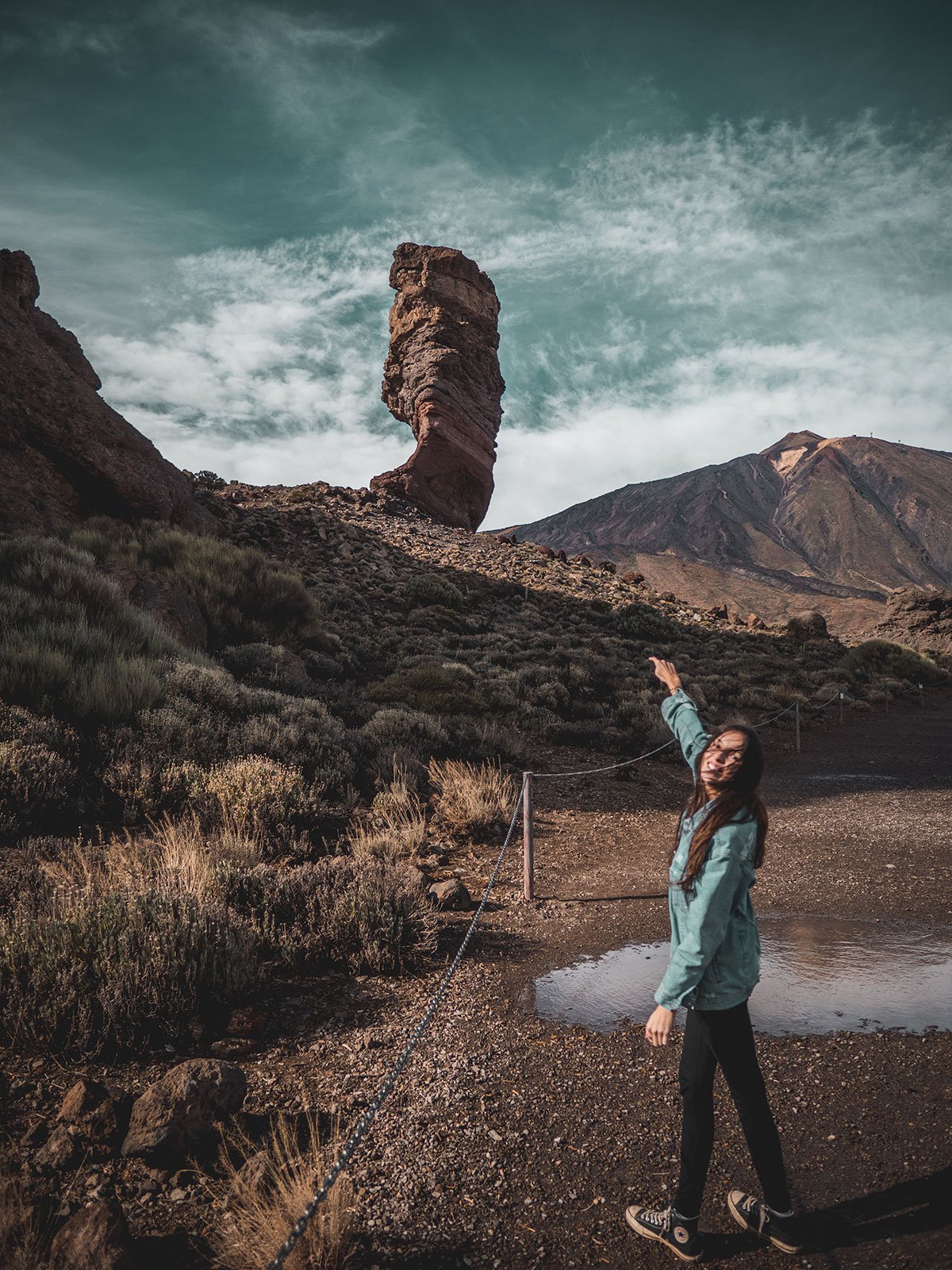
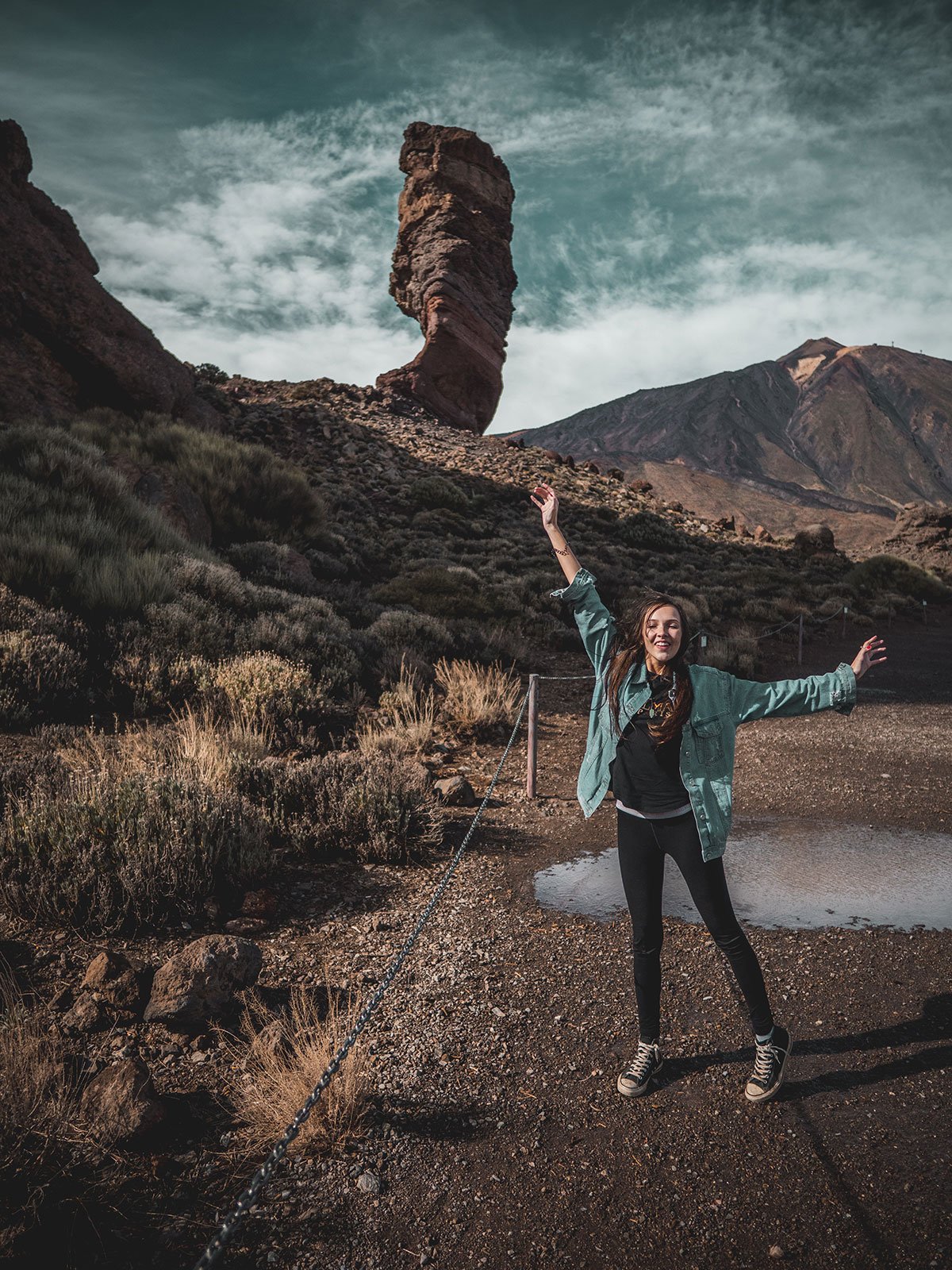
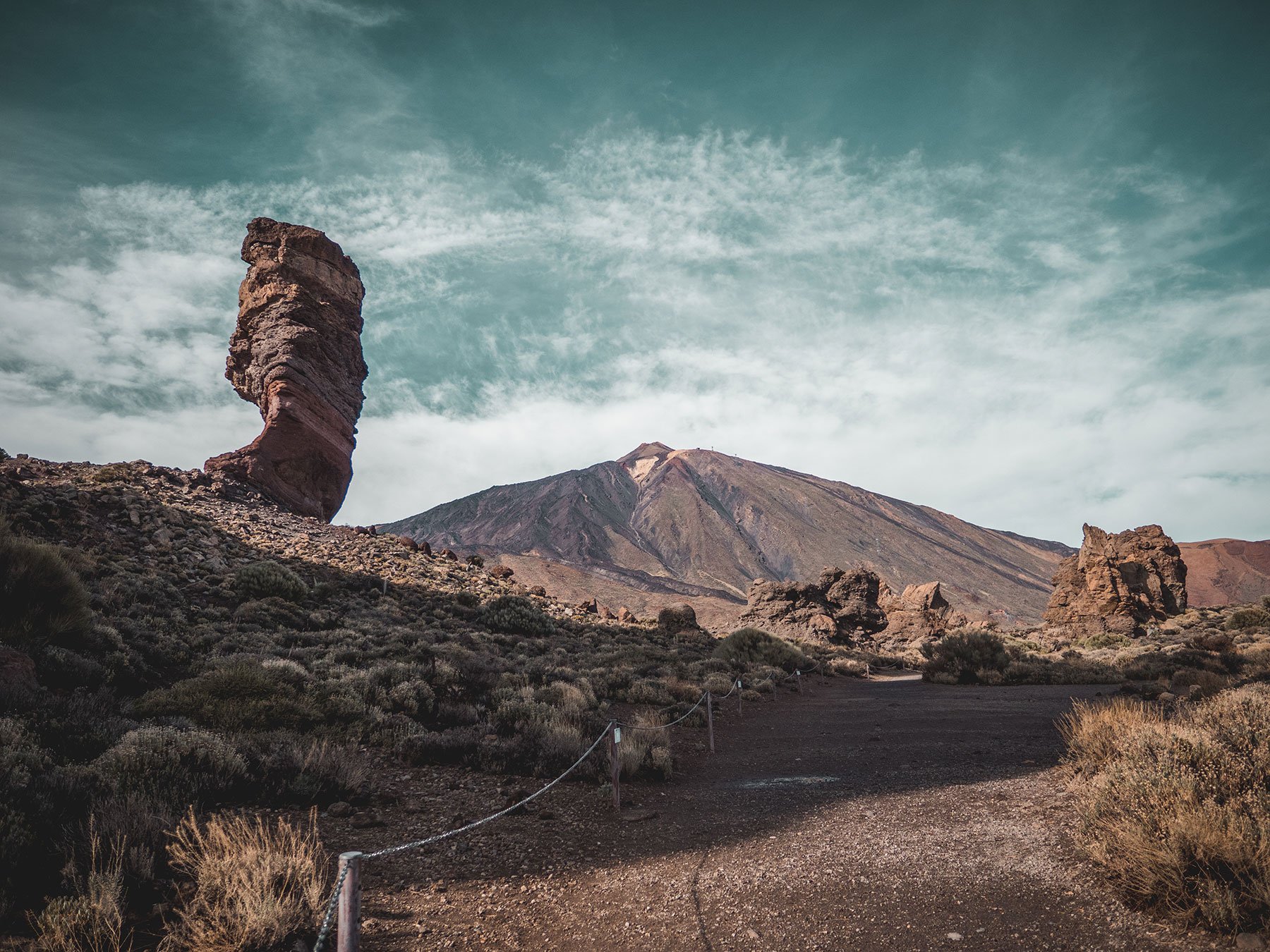
I was overwhelmed with emotion. My life-long dream to see ‘The Rock’ was complete. Now there was only one thing to do.
“All hail The Rock. All hail The Rock.” I chanted as I bowed before it.
Yes, I’m crazy and no, I don’t care. Even Lewis joined in with the bowing. Bless his supportive soul.
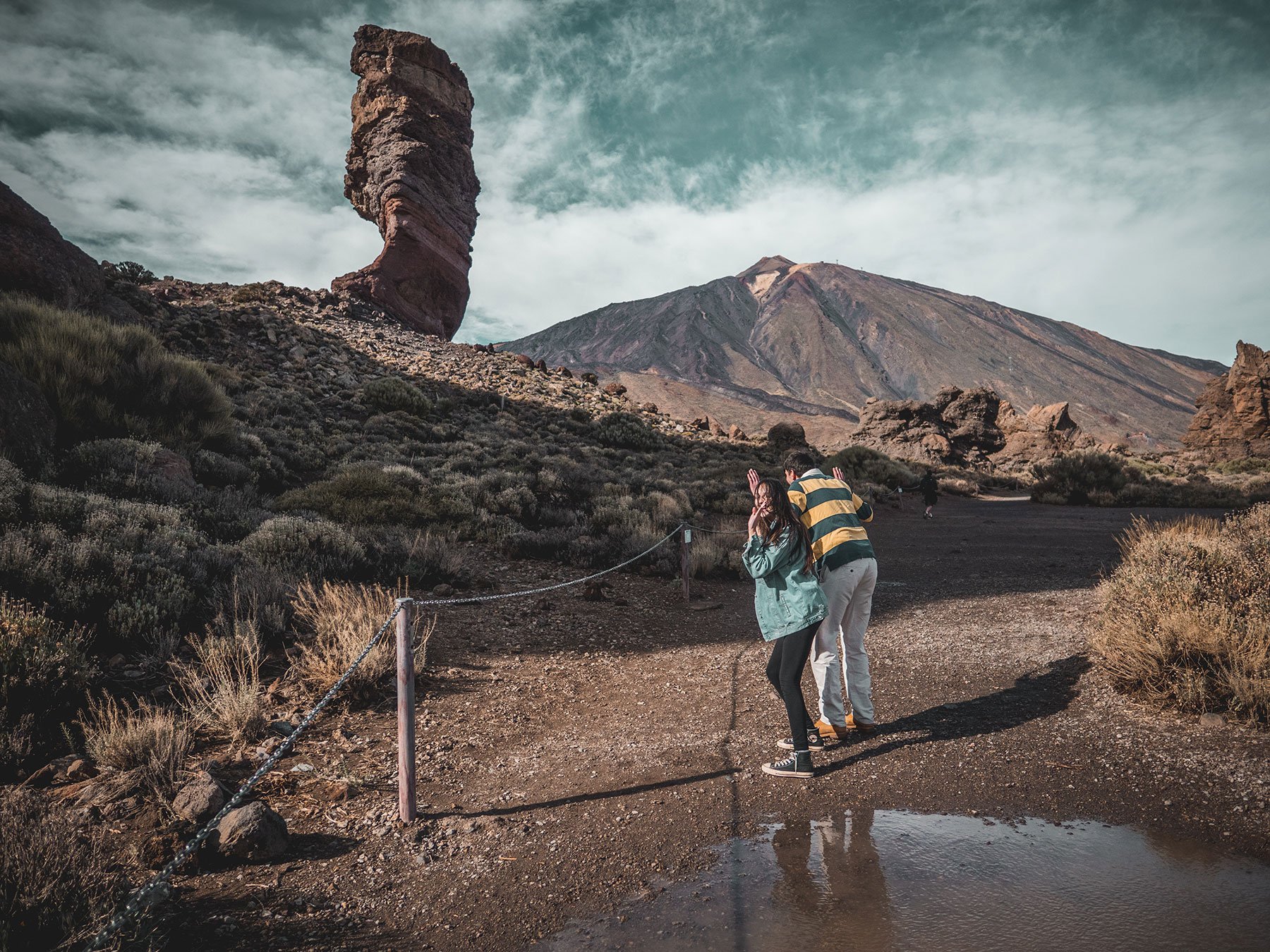
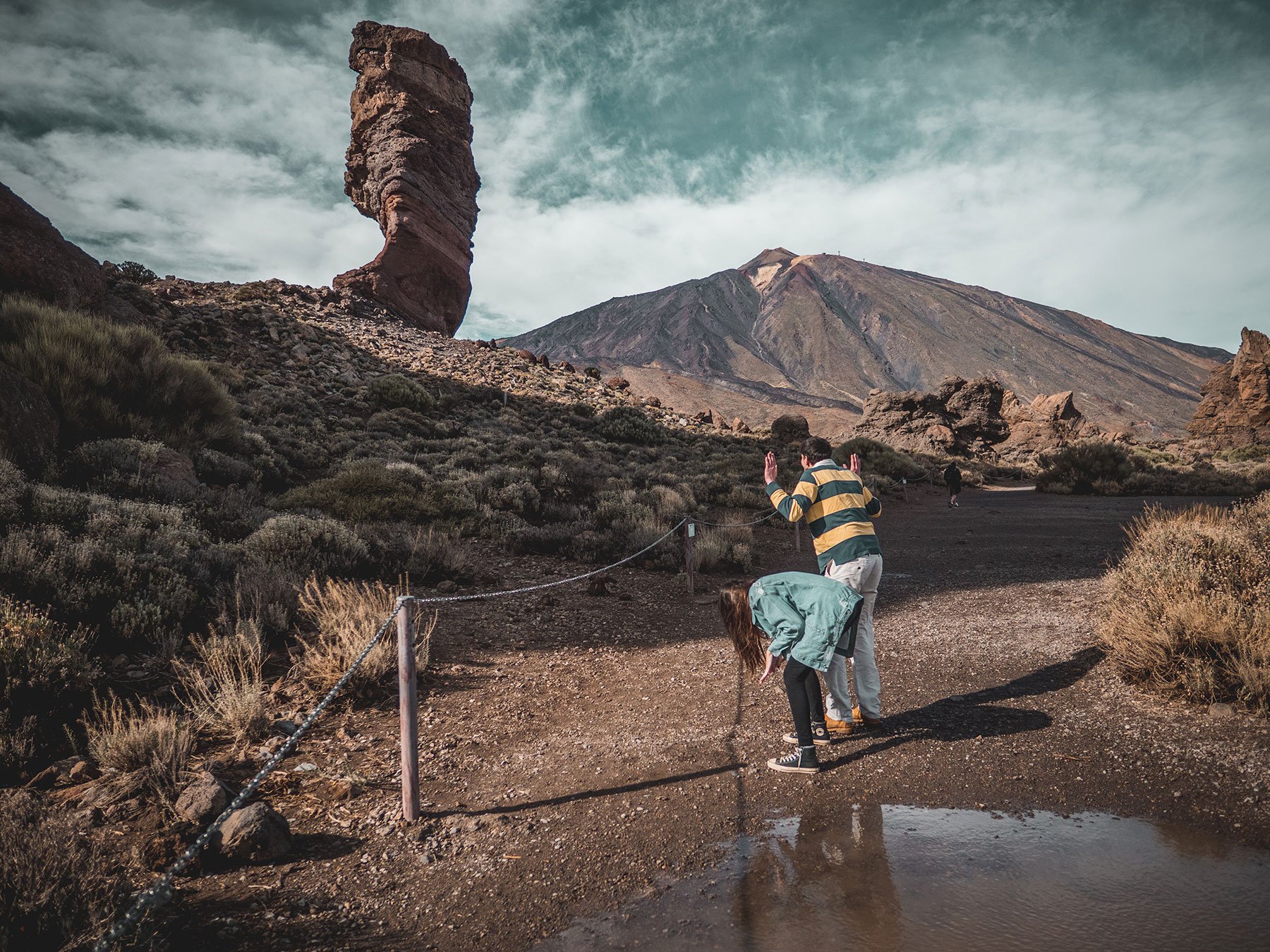
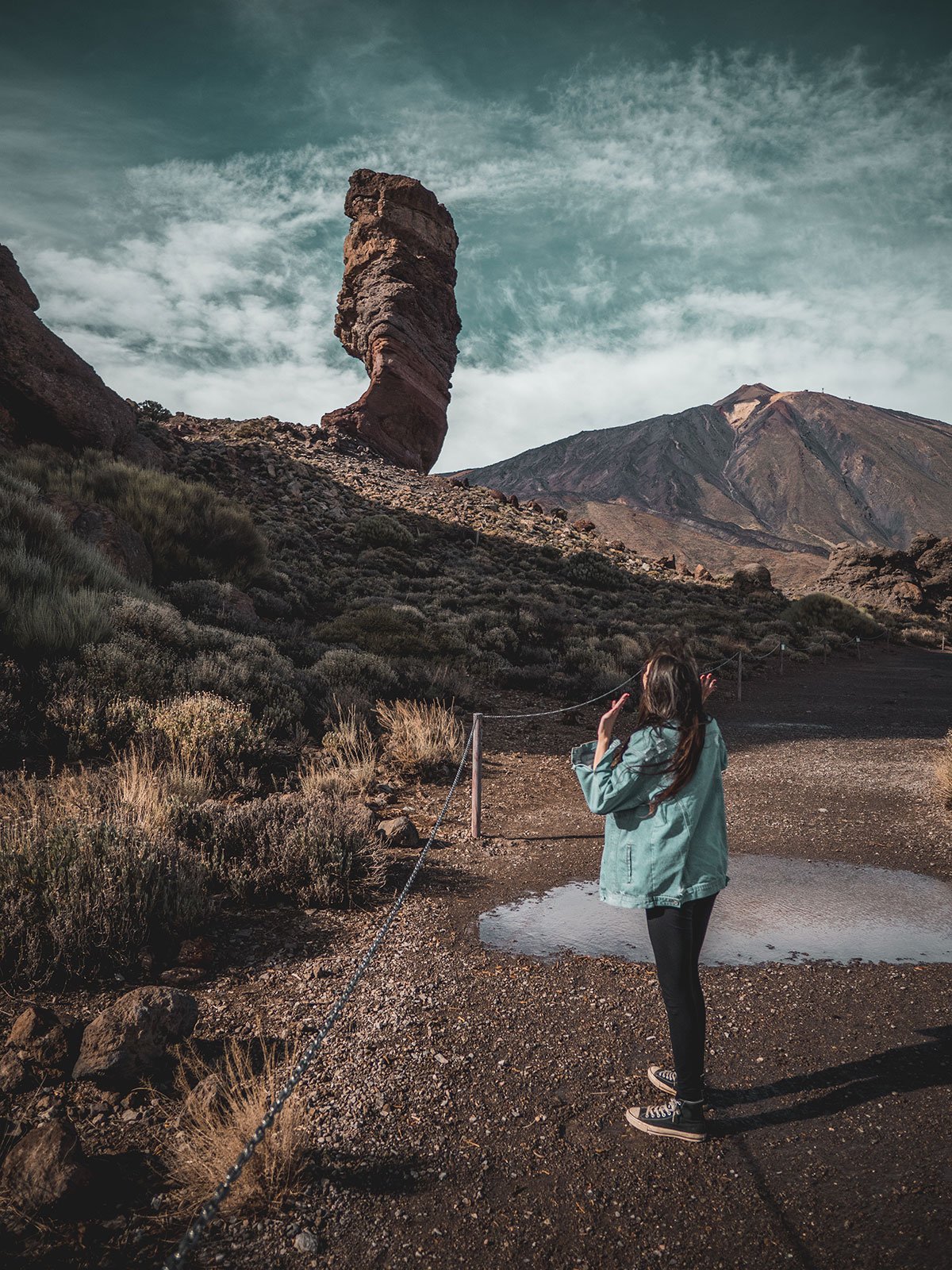
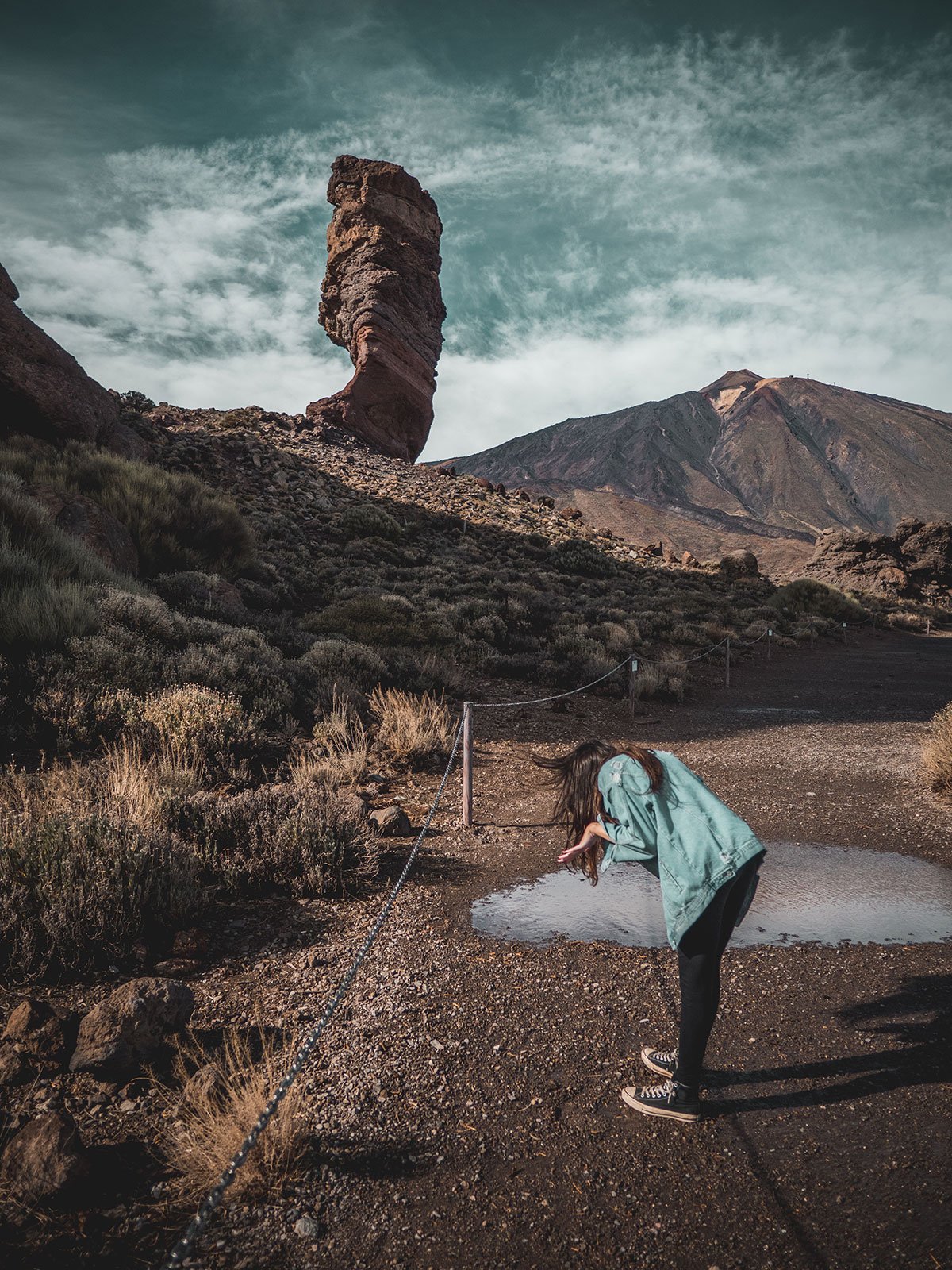
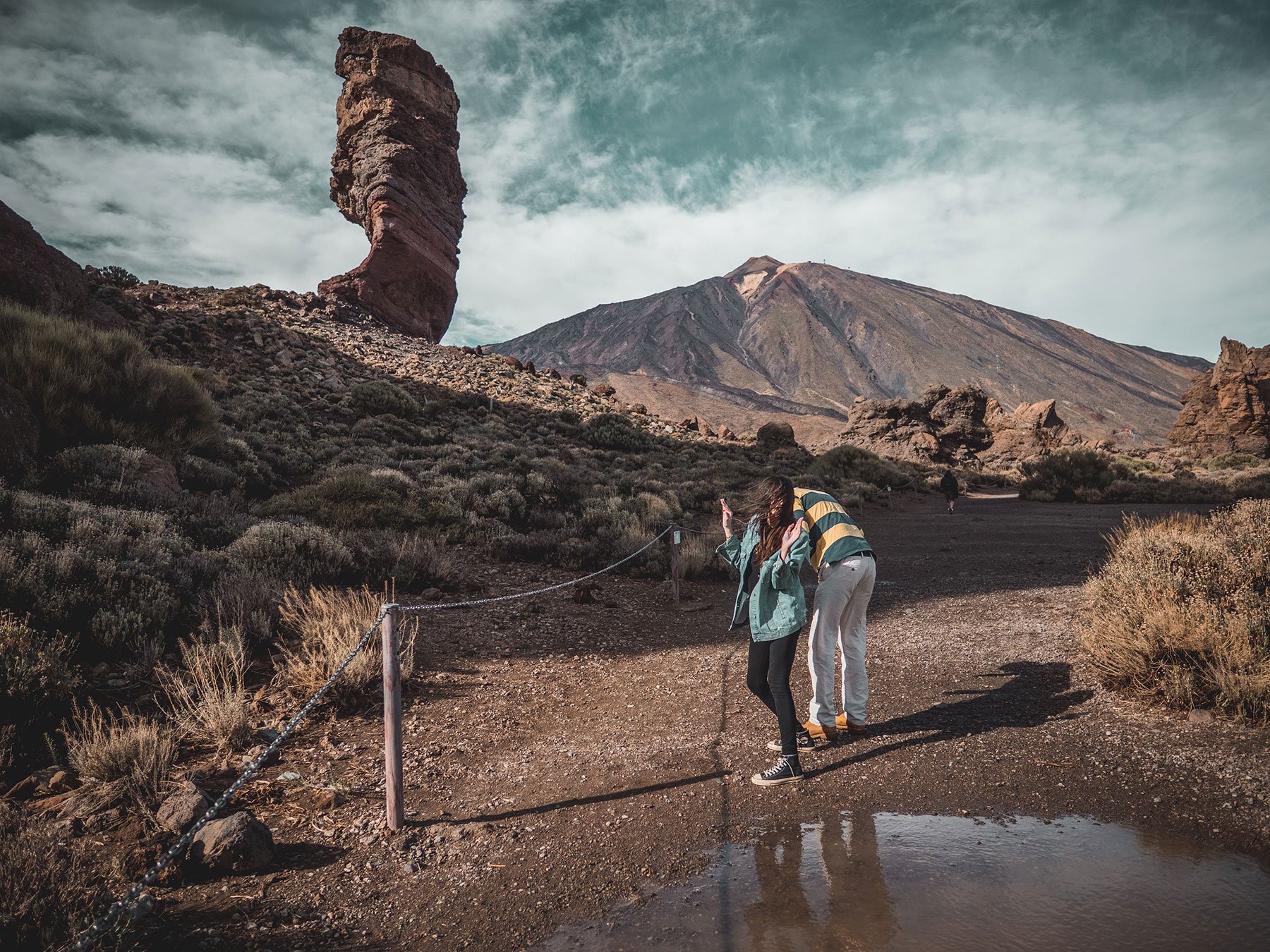
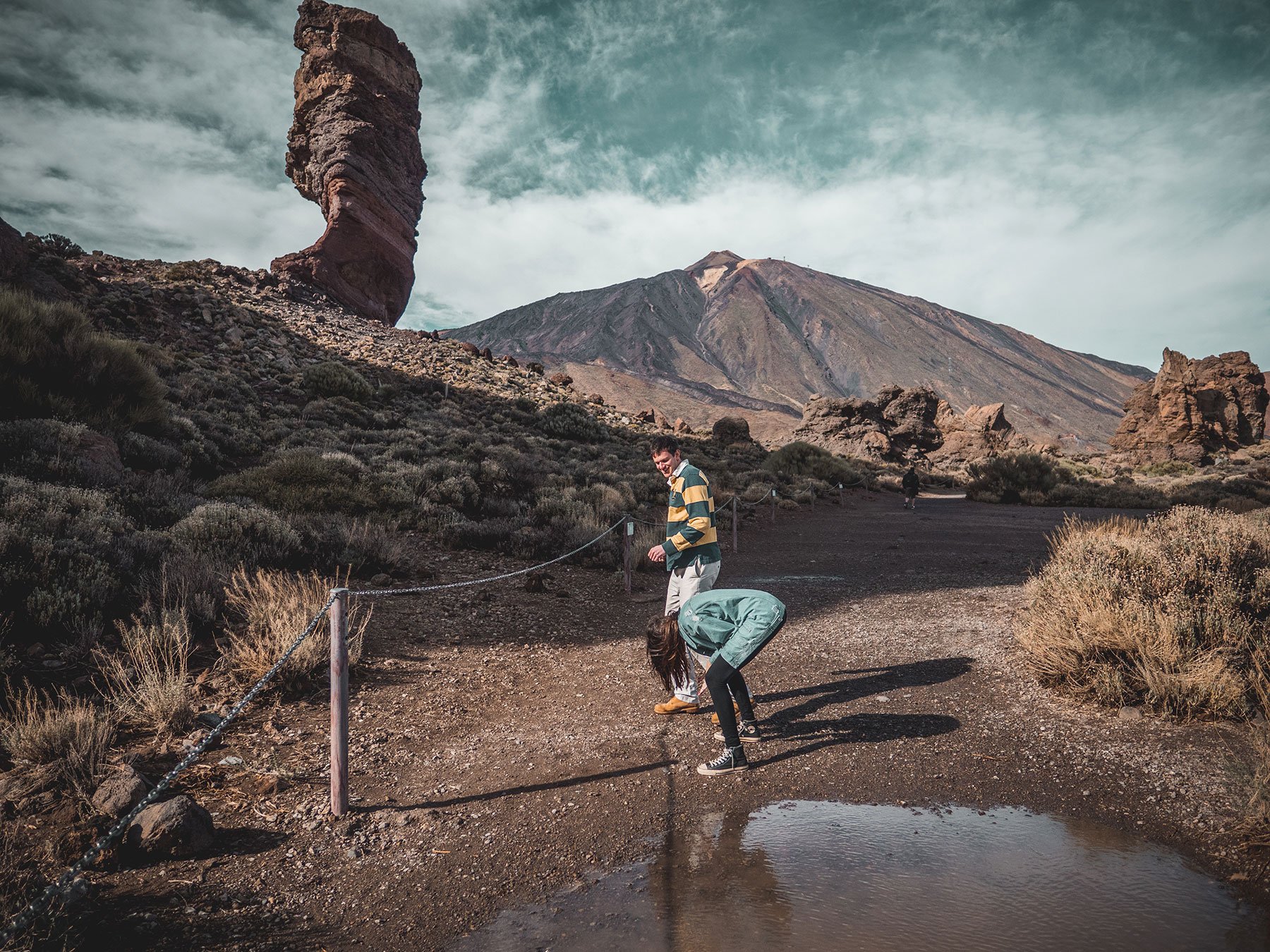
Once the worshiping was complete, it was time to ride around on each other’s shoulders, for photographs, as you do.
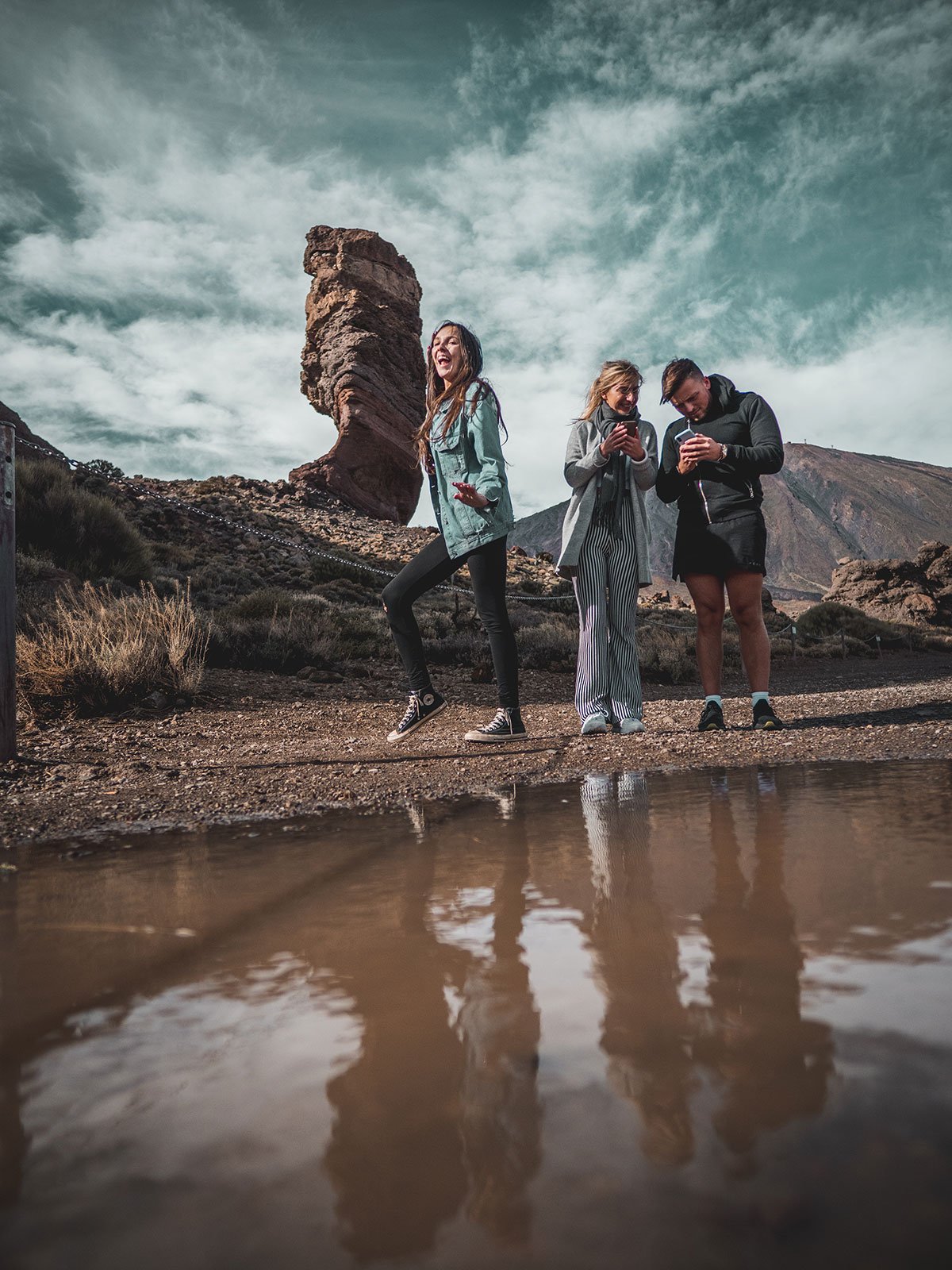
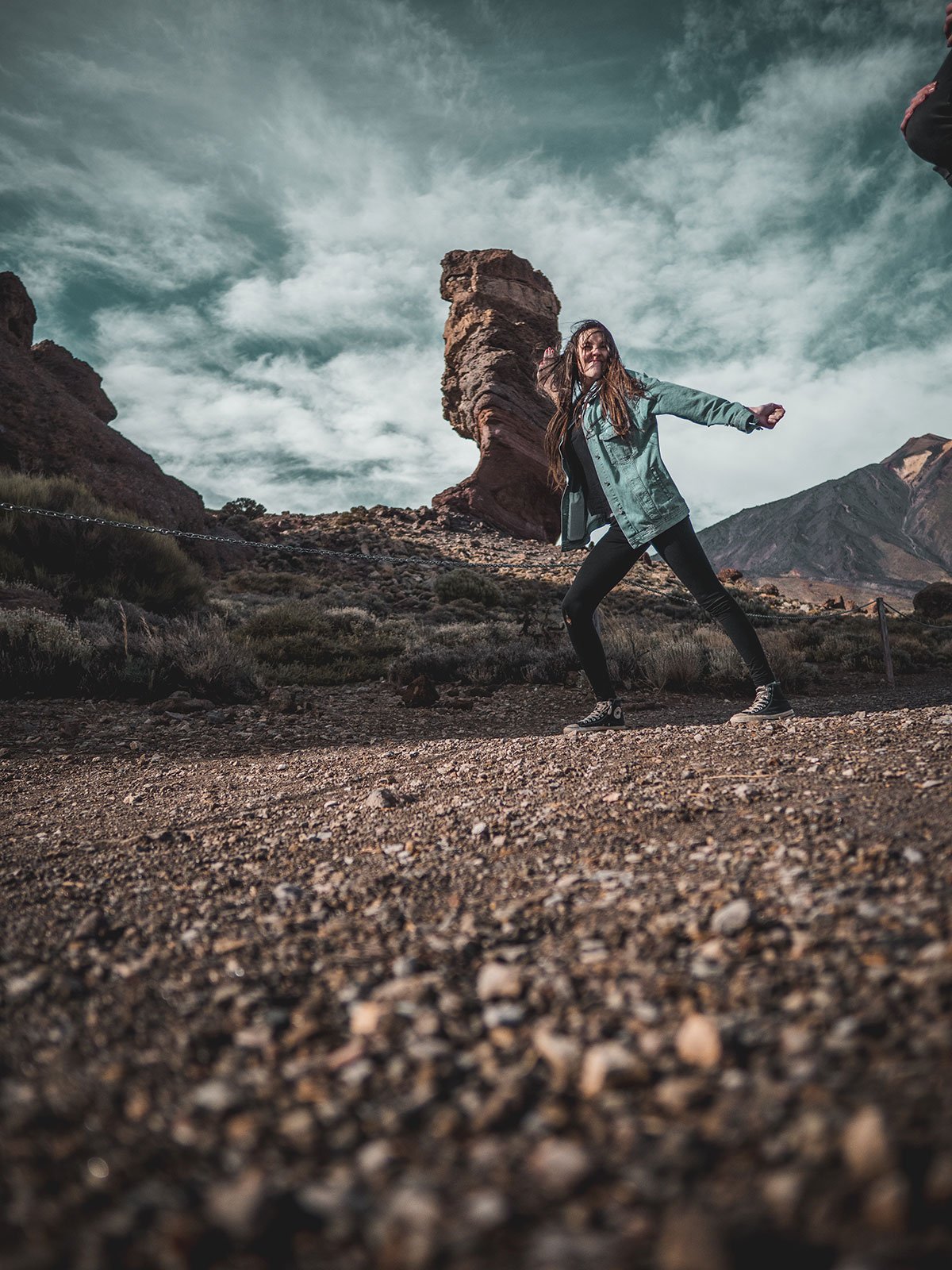
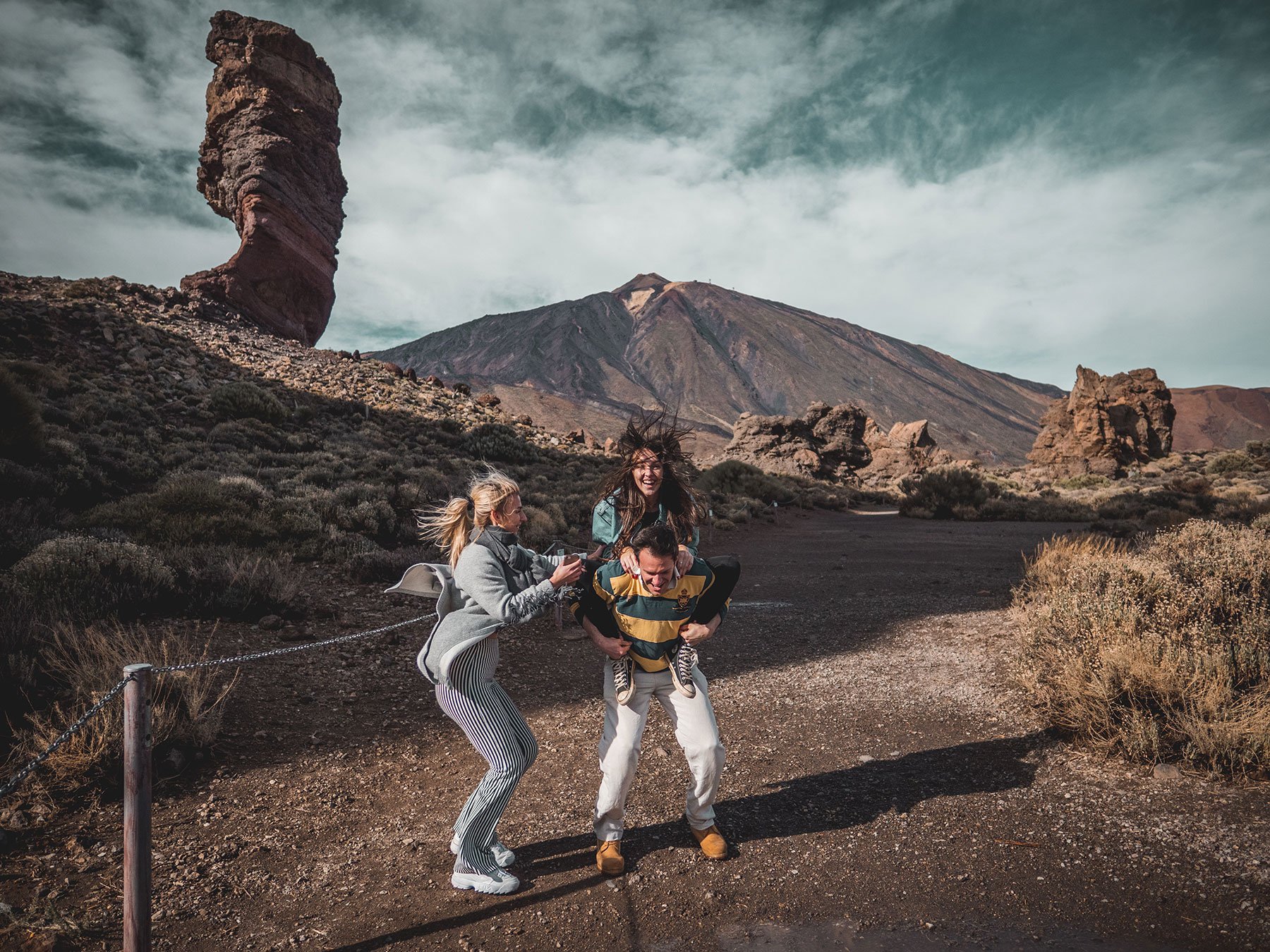
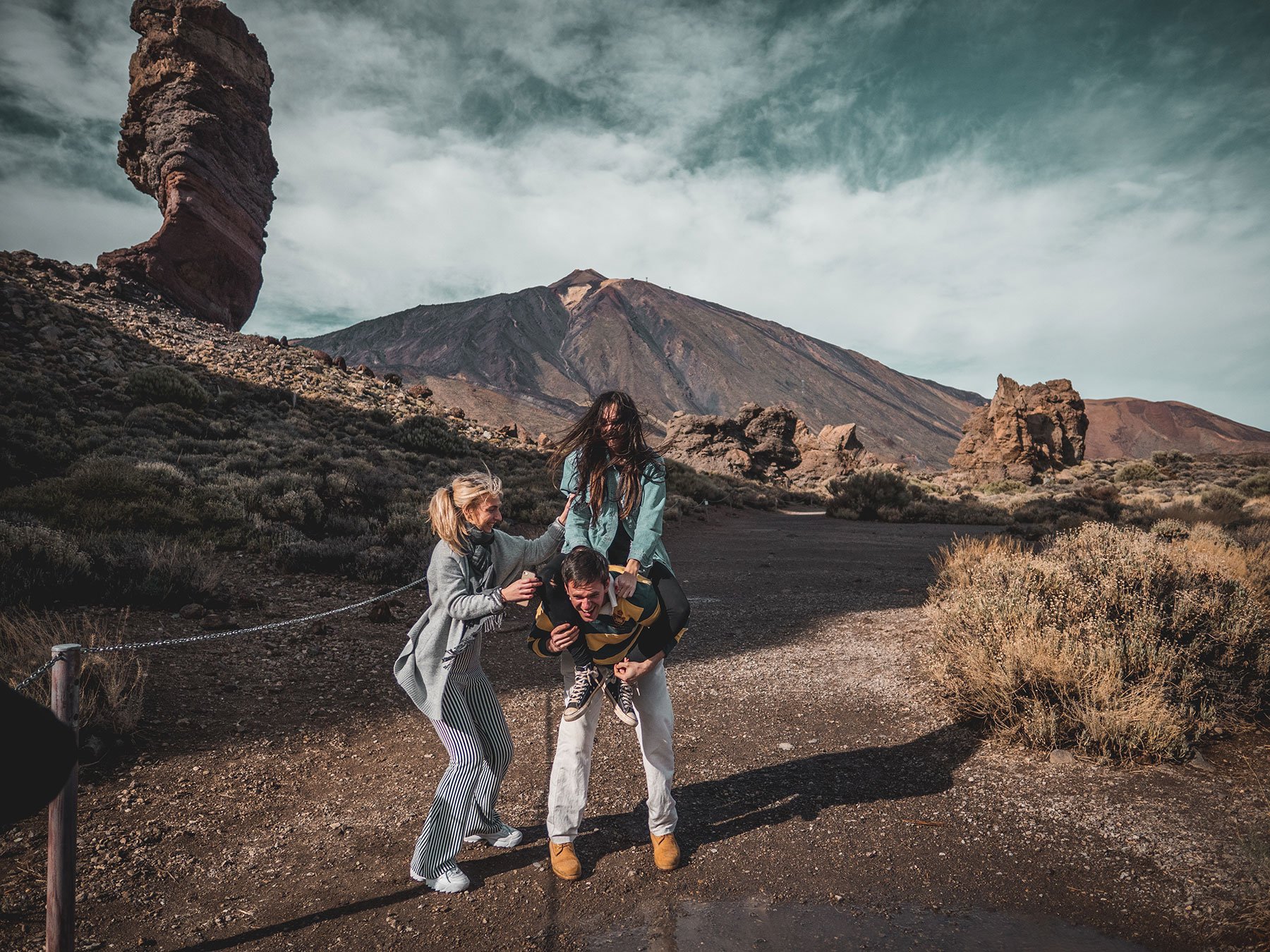
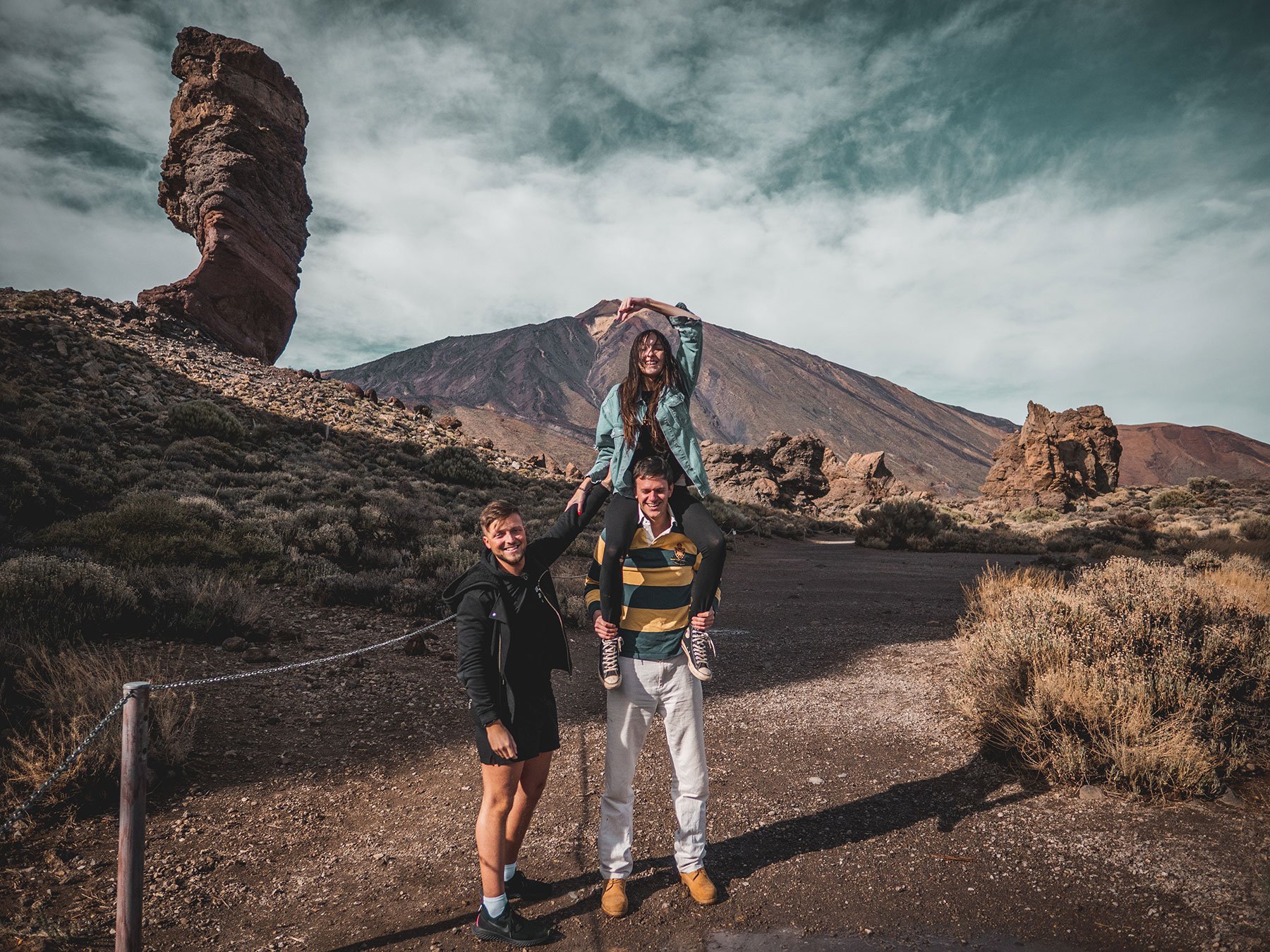
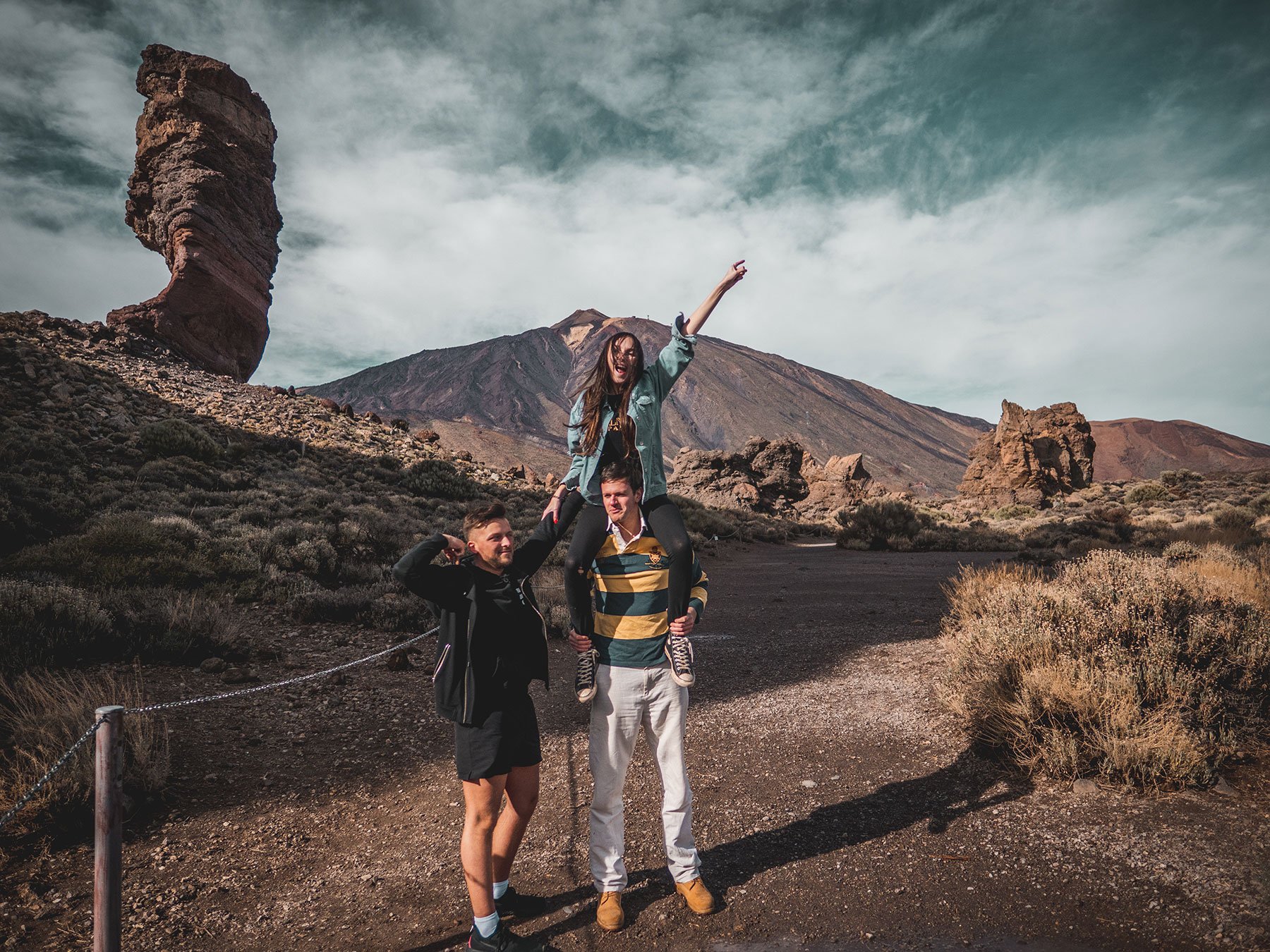
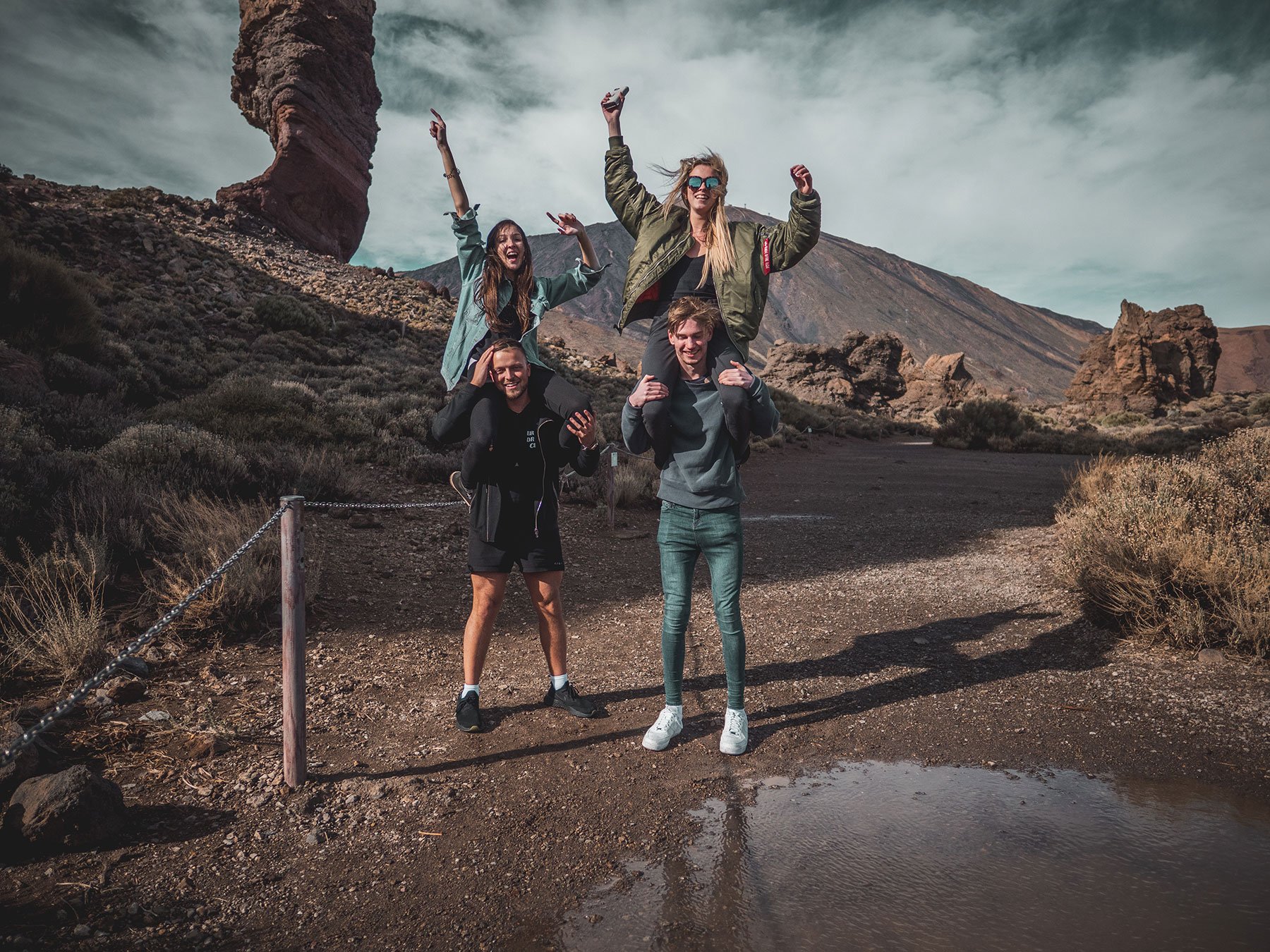
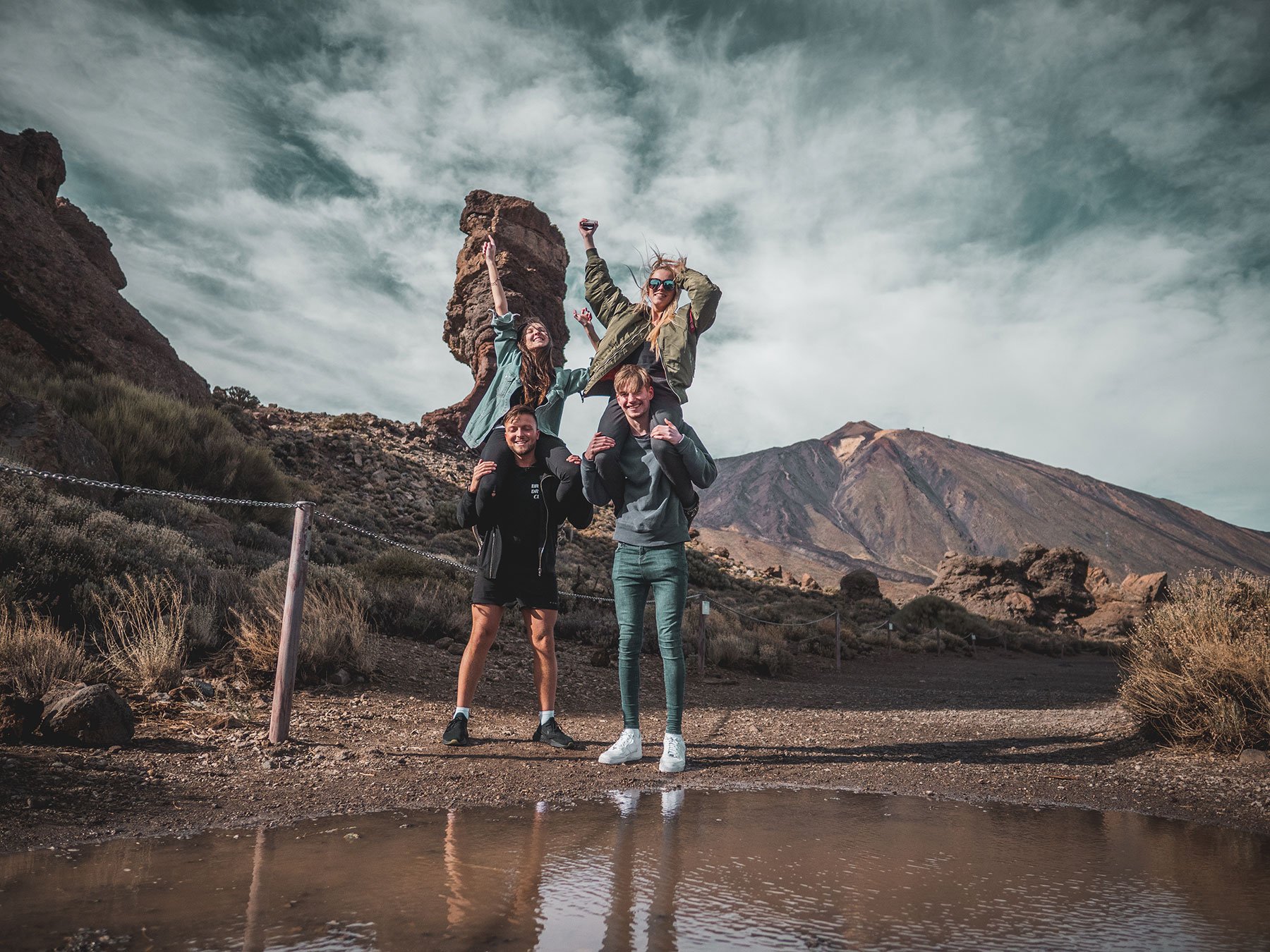
Meeting ‘The Rock’ was only the first event of the day. Next on our agenda was some wine tasting at ‘Casa del Vino’ in the north of the island. To get there, we planned on continuing our drive through the caldera to the north and exiting out the other end. Not only was this the most direct route but it also provided us with the opportunity to see more of Teide National Park. This drive would take us around an hour.
It was now my turn to take over the driving. I excitedly jumped into the driver’s seat of the Volvo, keen to take it for a spin.
The road stretched on ahead, passing to the side of majestic Mount Teide. I felt exhilarated as I took to the road, shrubs and boulders racing past us in a blur. Ahead was unchartered territory. I had no idea what we’d find on the road to Casa del Vino.
